I had seen the report and dismissed it quickly. There was no way that a White-eyed Vireo would stick around long enough to chase it. Their presence in Minnesota during migration is ephemeral. Then I got a phone call a couple weeks ago that changed my thinking. Ron Erpelding, a locally-based 87-county lister, calls me whenever something good shows up within a reasonable distance from Willmar. Ron told me that he went to see the Vireo at Flandrau State Park in New Ulm a few days after the initial sighting and that it was singing up a storm. Hmmm. Could it be that this misplaced Vireo was trying to set up a territory for the summer?
The singing White-eyed Vireo was intriguing on its own. The location, though, was what pushed the decision to chase over the edge. New Ulm was only an hour-and-a-half away, but more importantly, it was the city where Melissa and I got our first teaching jobs. This chase would be a family affair and a chance for Melissa and I to revisit a beautiful place we called home for a few years and show the kids our first school, first house, etc. It’s always held a special place in our hearts.
Nestled in the scenic Minnesota River Valley, New Ulm boasts the highest per capita population of German descendents, and it shows. It is a town where the industriousness of its residents is showcased in well-kept, stately brick homes and perfectly landscaped yards (there is no bad part of town), and the love of beer and all things sausage is proclaimed everywhere. It is a town where you can (and I did) roll out the barrel. You name a season, and I’ll name a beer festival for that season. New Ulm is the only place in America, and this is no joke, where schools offer up vats of sauerkraut on hot dog day and the kids pile it on. Life is a continual party in New Ulm, and partying it up just upriver from the famed Schell’s Brewery was a little bird I wanted to see.
After a quick drive-by of the old house, we went straight to Flandrau State Park right in town on the Cottonwood River. There were other birders responding to the call and making the short hike along the river to the spot. One guy, Bill Marengo, was in the parking lot and told us the bird was indeed present this morning. Yes!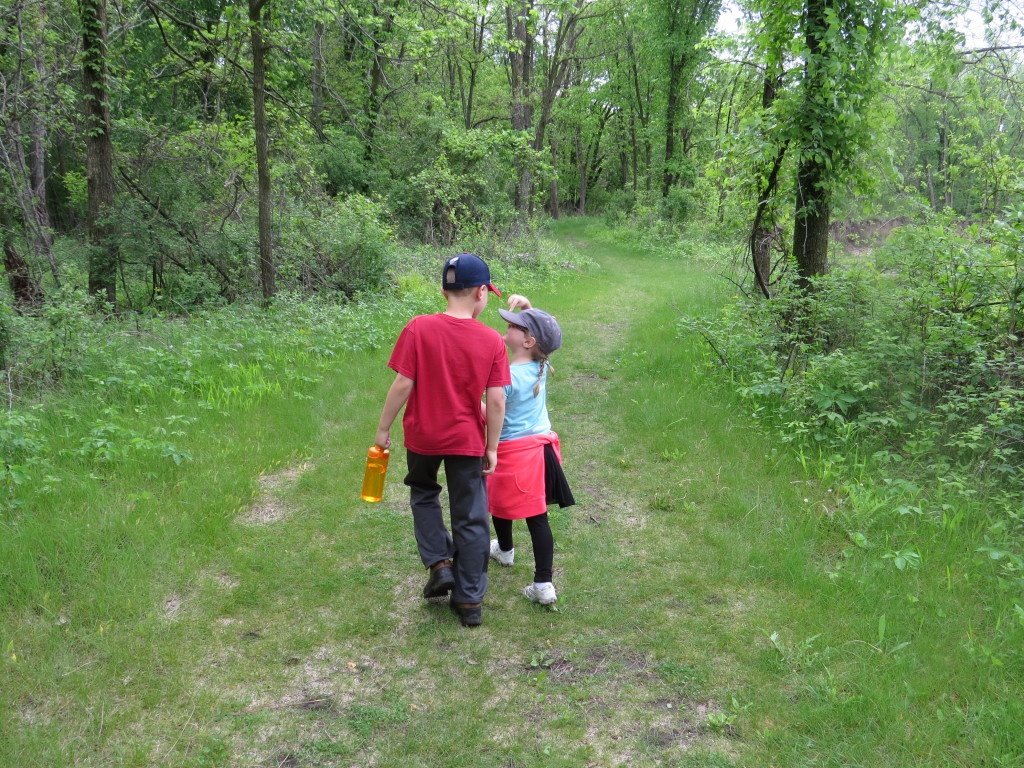 Getting to the scene a few hundred yards down the trail, I heard the bird immediately. Several birders and I strained to locate it. One lady claimed she saw it.
Getting to the scene a few hundred yards down the trail, I heard the bird immediately. Several birders and I strained to locate it. One lady claimed she saw it.
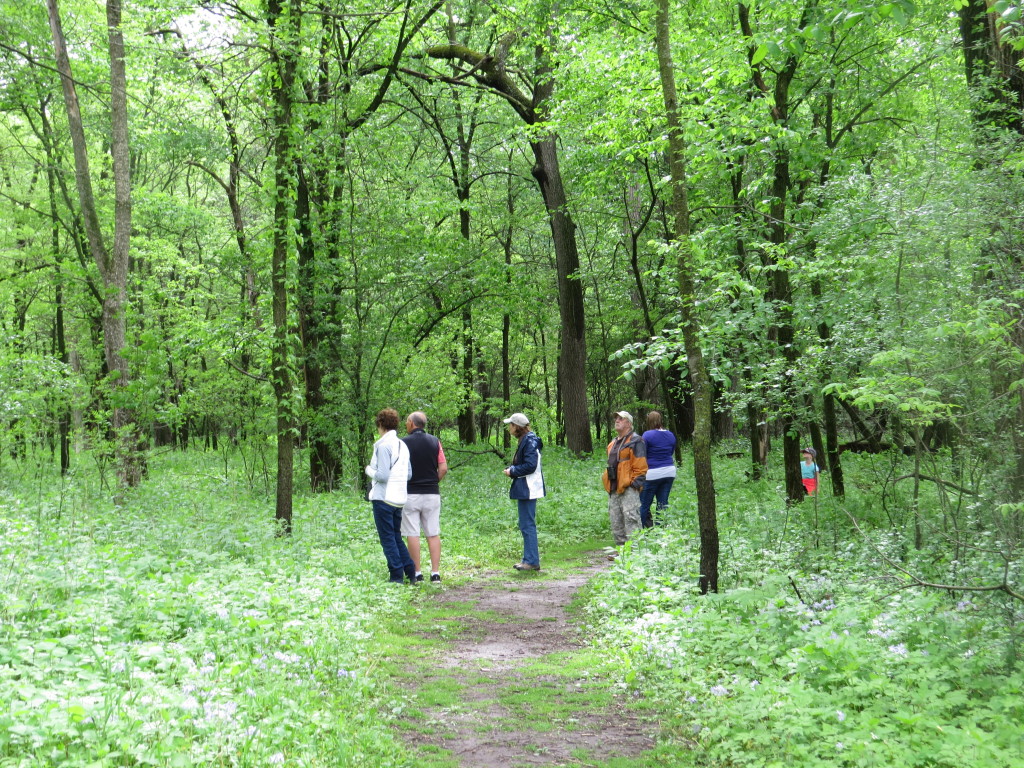
The rest of us didn’t. Then, we weren’t hearing it at all. After an hour or so, I decided to call it quits. You can only stare at the same trees for so long. Hiking back to the parking lot I checked my email and saw an eye-bulging report from the very same Bill Marengo with whom we had just spoken. He had made his way over the waste-water treatment ponds in nearby Sleepy Eye and found gobs of shorebirds–really good shorebirds. The trip went from being a downer to all the sudden being exciting again.
Once we were back at the car at Flandrau, there were some FOY Indigo Buntings to enjoy– a paltry, albeit lovely, consolation prize. The promise of some shorebird lifering was making up for any disappointment over the White-eyed Vireo.
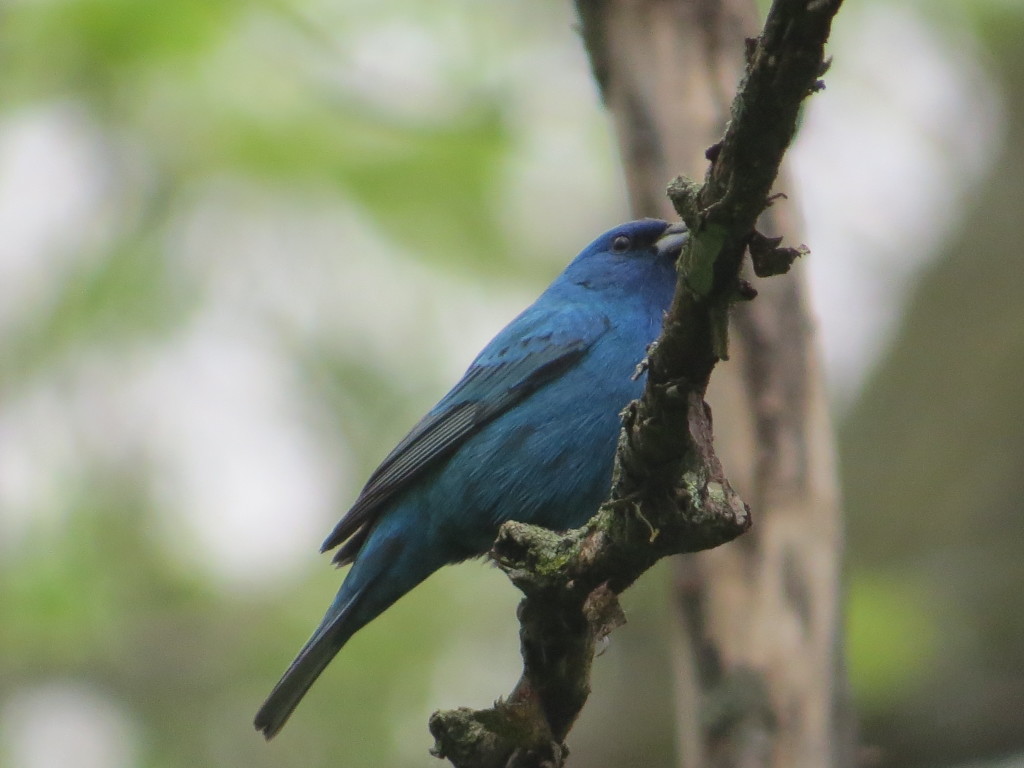 Before we left, I thought I heard the soft bee-buzzzz call of a Blue-winged Warbler. Nah, couldn’t be…
Before we left, I thought I heard the soft bee-buzzzz call of a Blue-winged Warbler. Nah, couldn’t be…
Even with a heard-only White-eyed Vireo and several potential lifers in Sleepy Eye, probably the best find of the day came when we stopped for a hot dog lunch at one of our old haunts, the Kwik Trip. (And yes, there was a huge tub of sauerkraut with the condiments). As we were leaving, who should we run into but our old neighbor and friend, Adam! The next half hour passed quickly as we reminisced, laughed, and caught up with Adam; I didn’t even have the usual anxiety when life birds are on the line.
Eventually we did part company and make the 15-minute drive to Sleepy Eye. Bill wasn’t kidding about the shorebirds. There were two main groups, each in different ponds and close to the entrance.
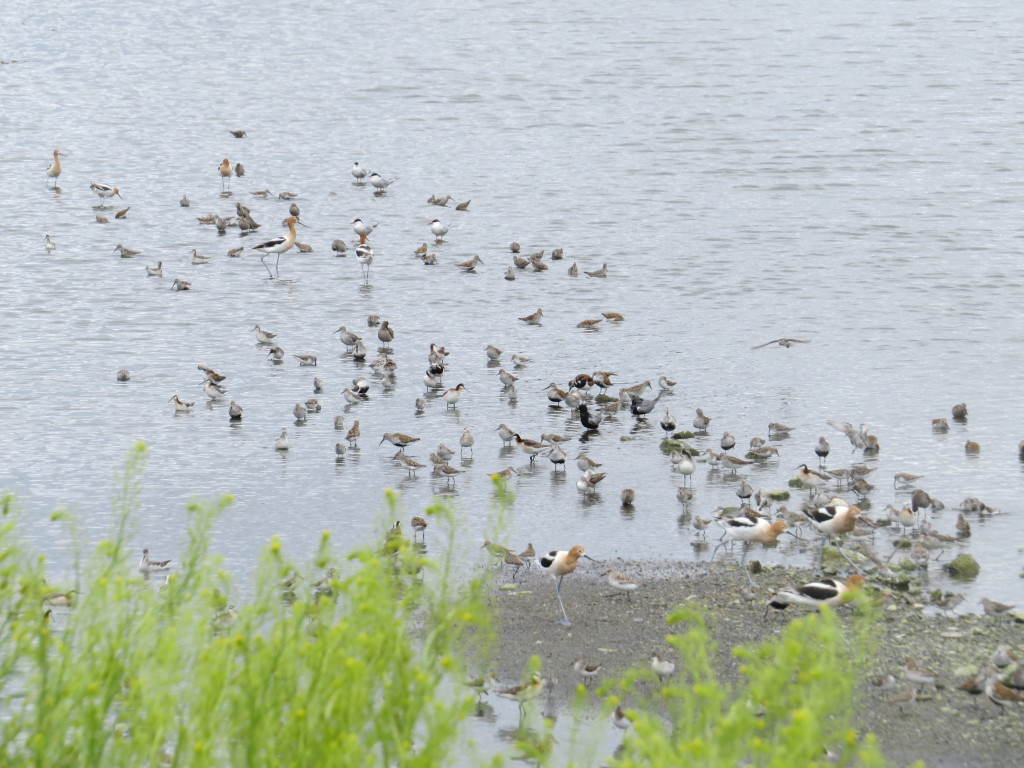
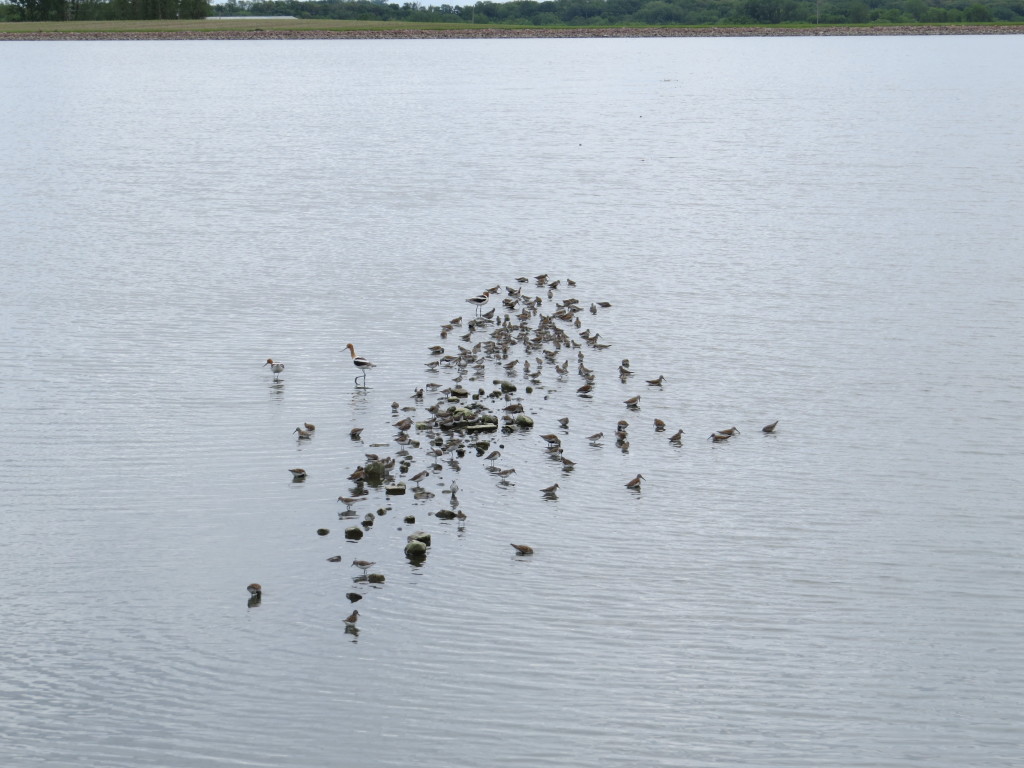
Birders who read this have probably already tried to sort through some of the goodies in these photos. When I was sorting through them in real life, I was looking for one, larger bird in particular that Bill reported–the Hudsonian Godwit.
Got it.
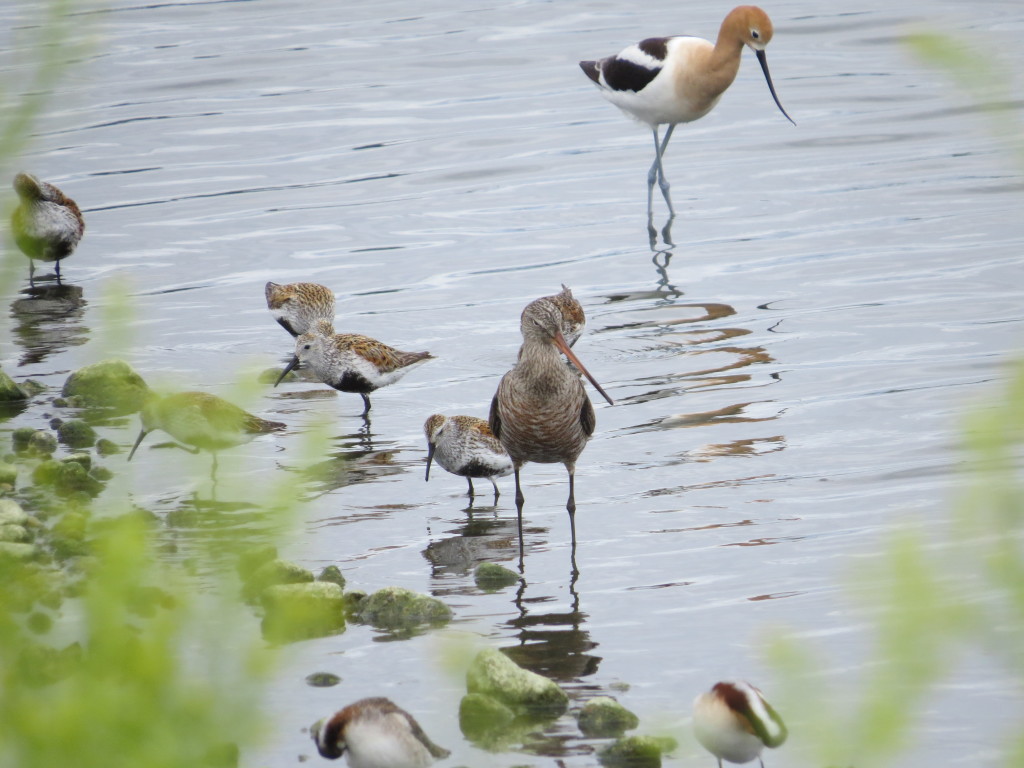
It was not the more striking male that I was hoping for, but when it comes to Hudwits, beggars can’t be choosers.
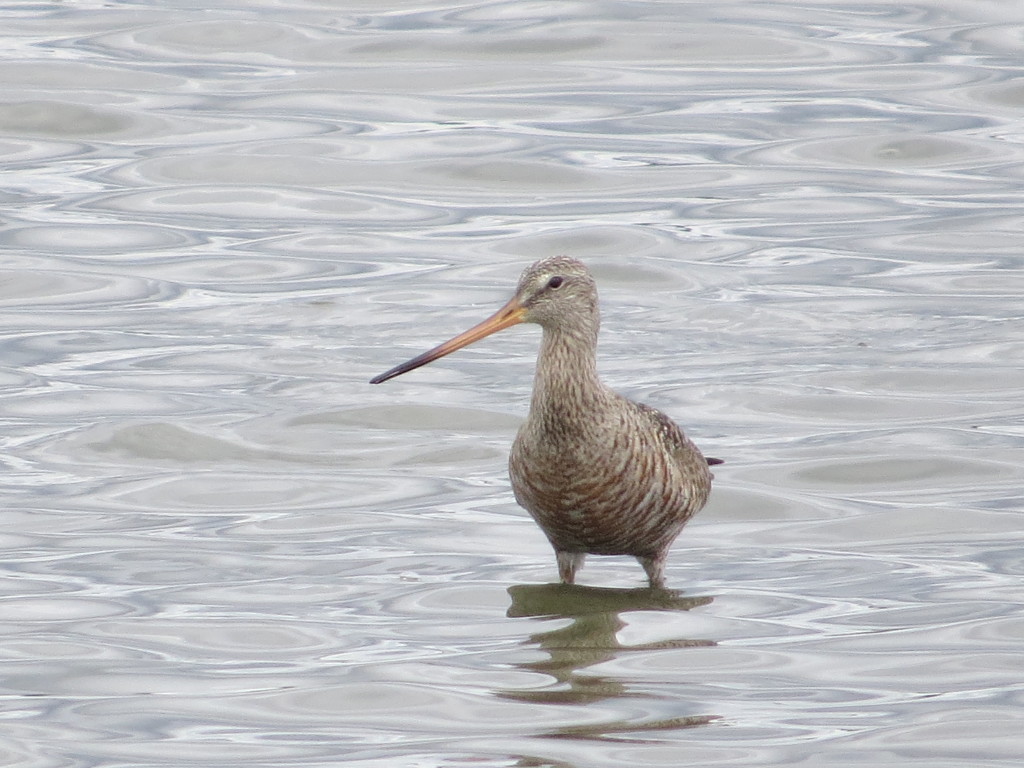
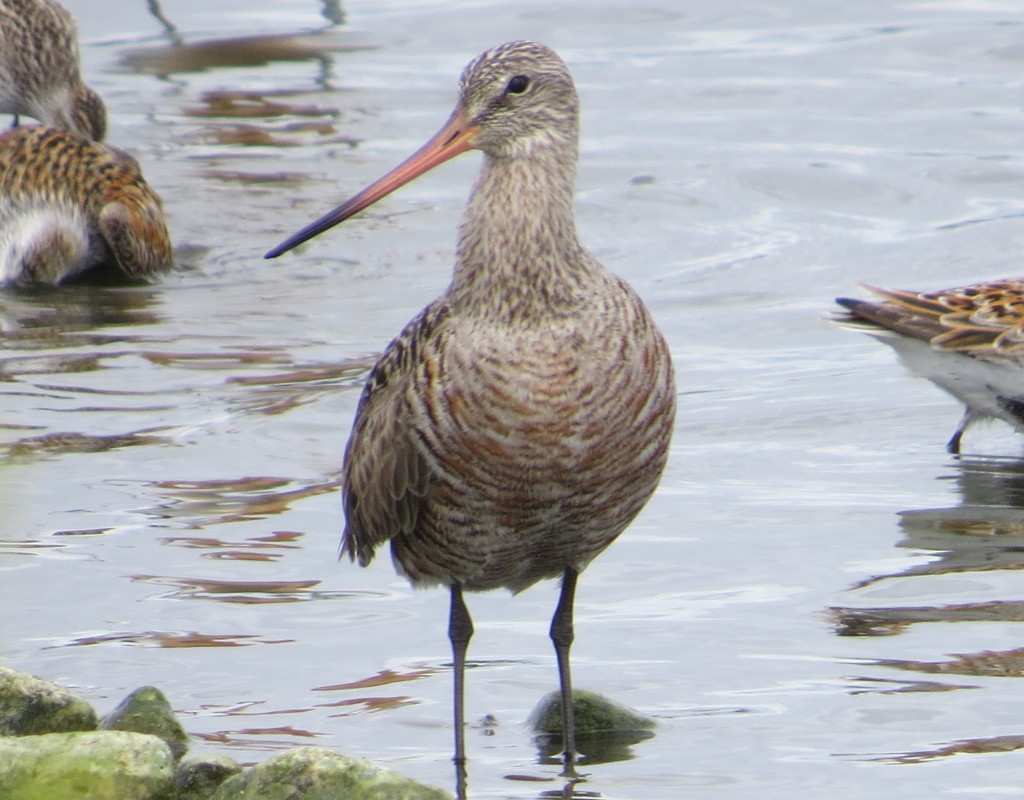
It was pretty sweet to pick up this unexpected life bird, but the fun didn’t stop there. Bill Marengo was still on the scene and helped me pick out a Sanderling lifer, even letting Evan and I get some good scope views. I was surprised by how plump they are and close in size to the Dunlin.
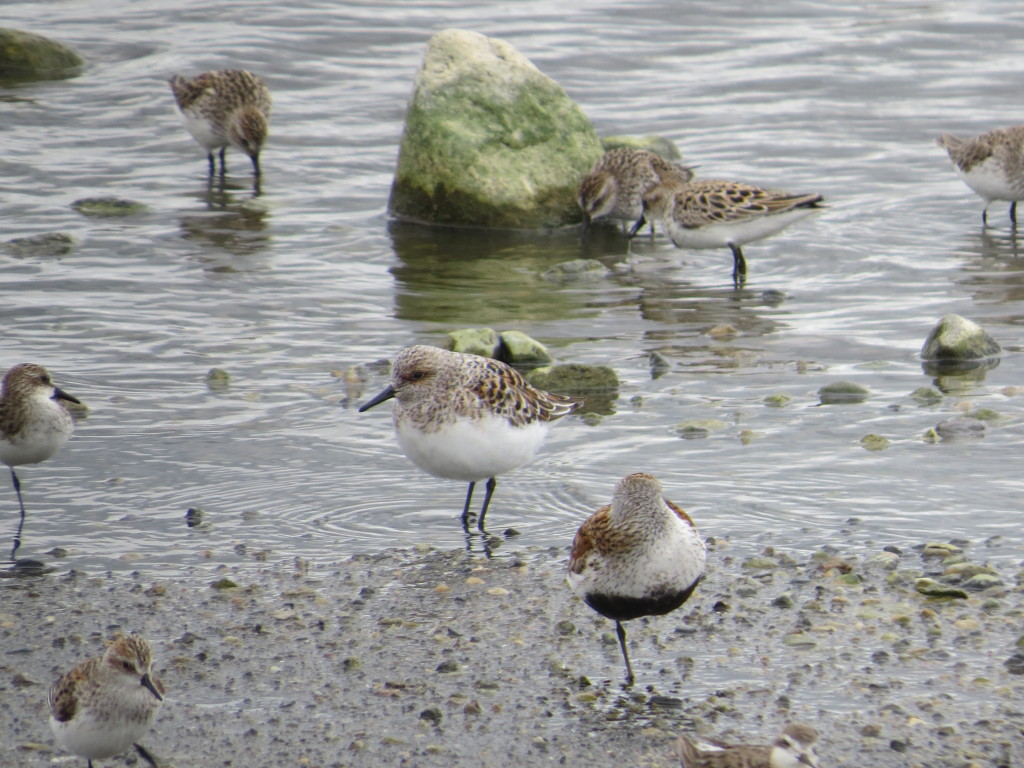
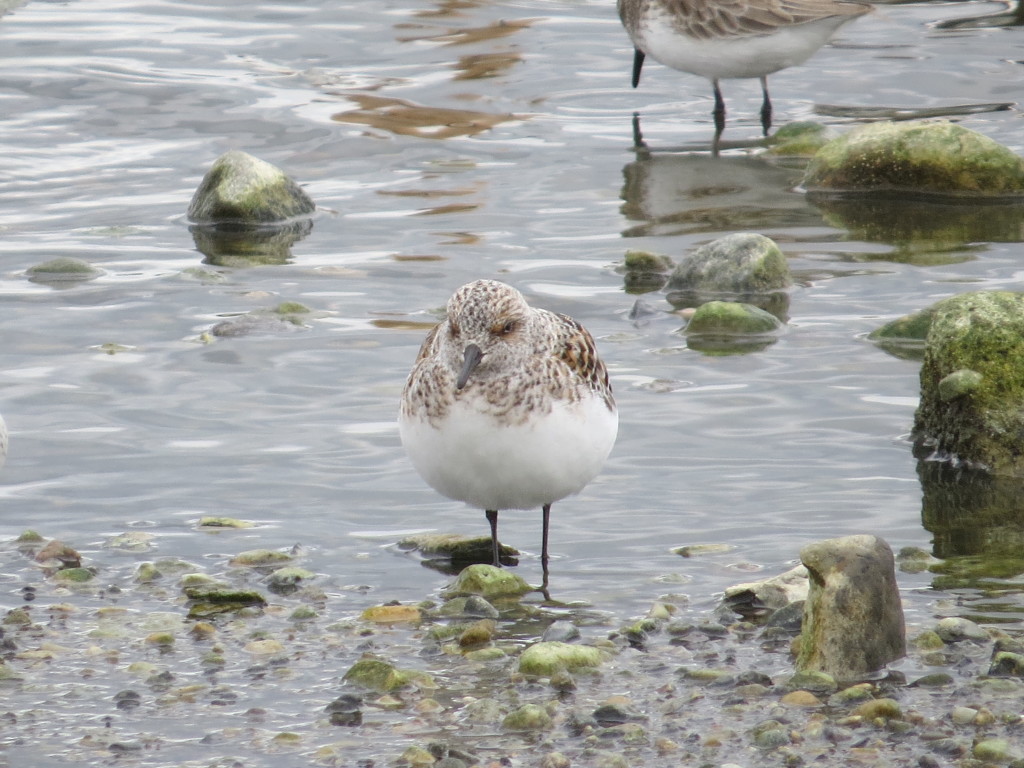 If two unplanned lifers weren’t enough, how about a third?! Several Terns caught my eye right away when we got to the ponds. Their bills looked excessively reddish and other clues were leading me to the conclusion that I was looking at Common Terns, which aren’t so common in Minnesota compared to the excessively common Forster’s Tern.
If two unplanned lifers weren’t enough, how about a third?! Several Terns caught my eye right away when we got to the ponds. Their bills looked excessively reddish and other clues were leading me to the conclusion that I was looking at Common Terns, which aren’t so common in Minnesota compared to the excessively common Forster’s Tern.
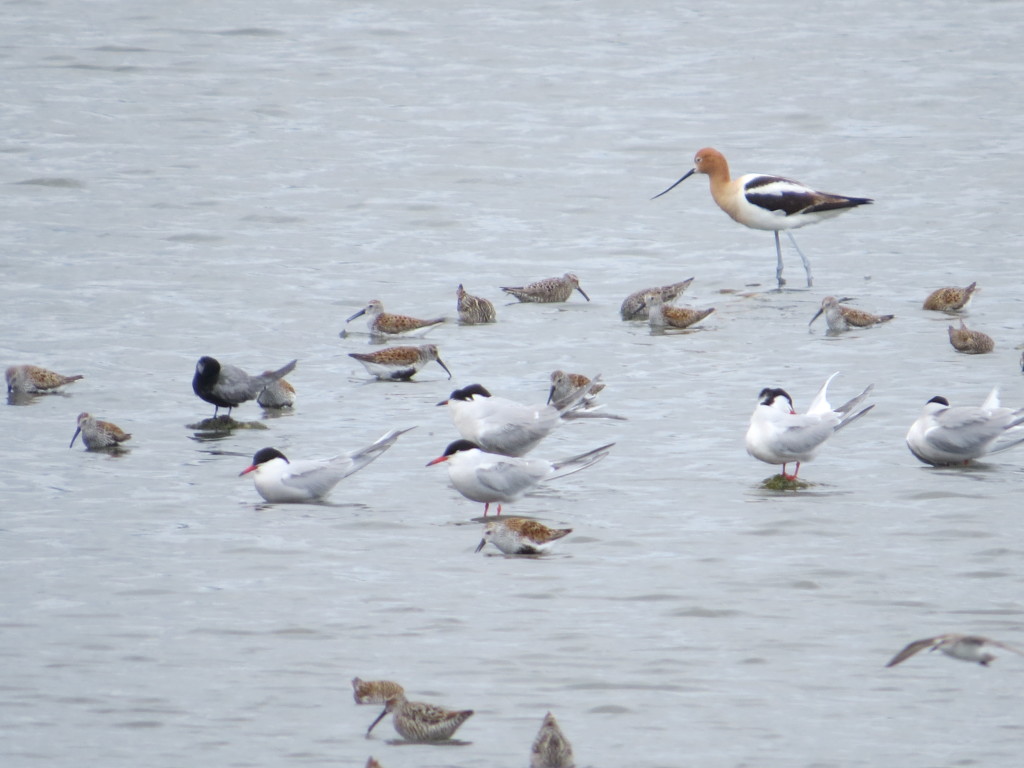 I spent much time agonizing over this ID after the fact as Common and Forster’s Terns are incredibly similar looking. Many hours were spent scouring images on Google, studying Sibley, etc. Common Terns have reddish-orange bills while Forster’s Terns have a straight-up orange color. The red really popped when I looked at these birds.
I spent much time agonizing over this ID after the fact as Common and Forster’s Terns are incredibly similar looking. Many hours were spent scouring images on Google, studying Sibley, etc. Common Terns have reddish-orange bills while Forster’s Terns have a straight-up orange color. The red really popped when I looked at these birds.
Another field mark of the Common Tern are the wings. The primaries of a Common are gray and flush with the tail while the primaries of the Forster’s are whitish or frosty and shorter than the much longer tail.
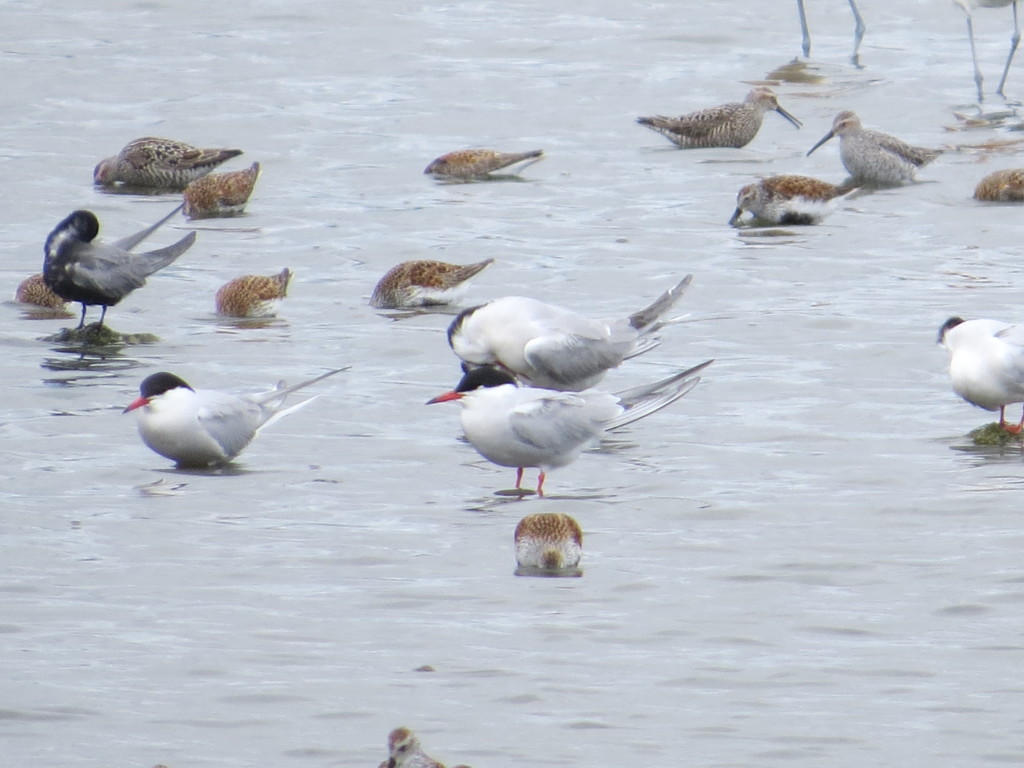
Finally, I found evidence of a remnant dark carpal bar which Common Terns have during the winter months before the black bar fades to gray.
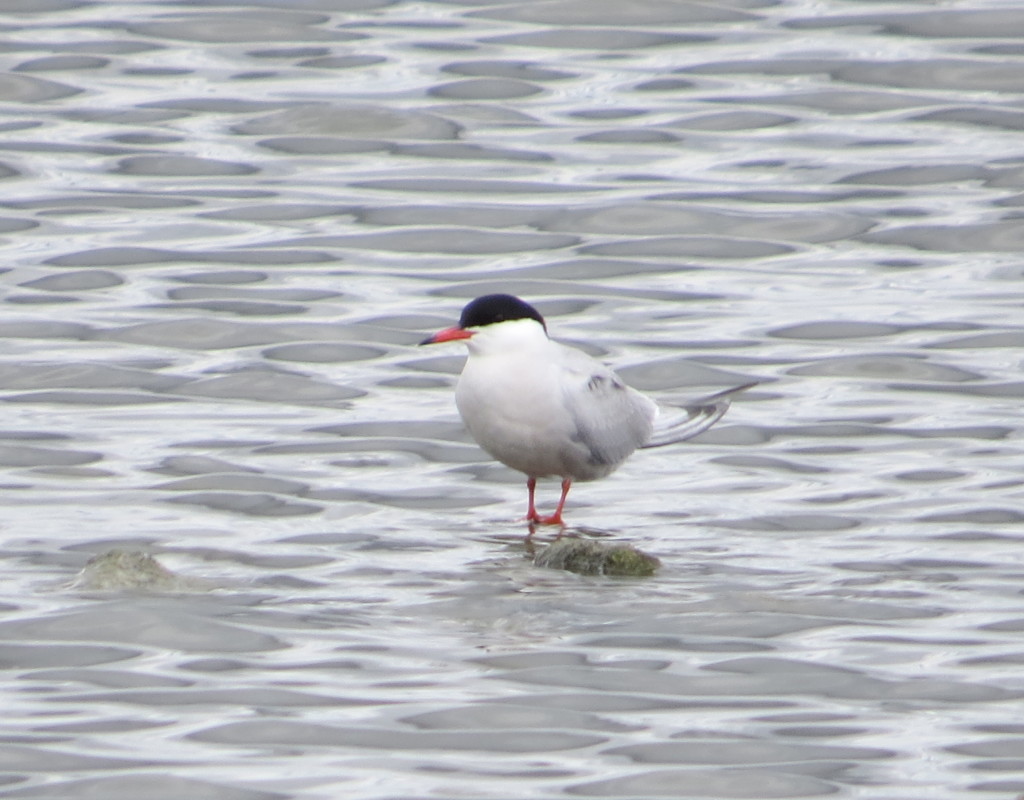
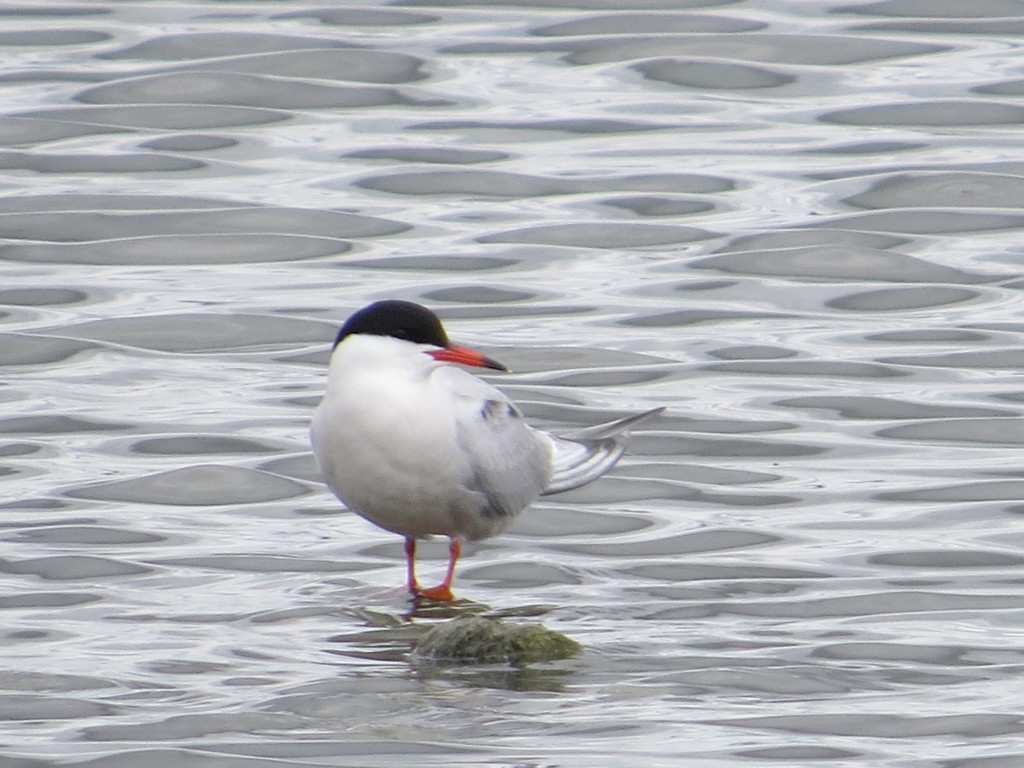
The birders among you have already detected some great shorebirds. American Avocets were plentiful with a dozen birds representing their species. This elegant bird is always a rare treat during migration in Minnesota.
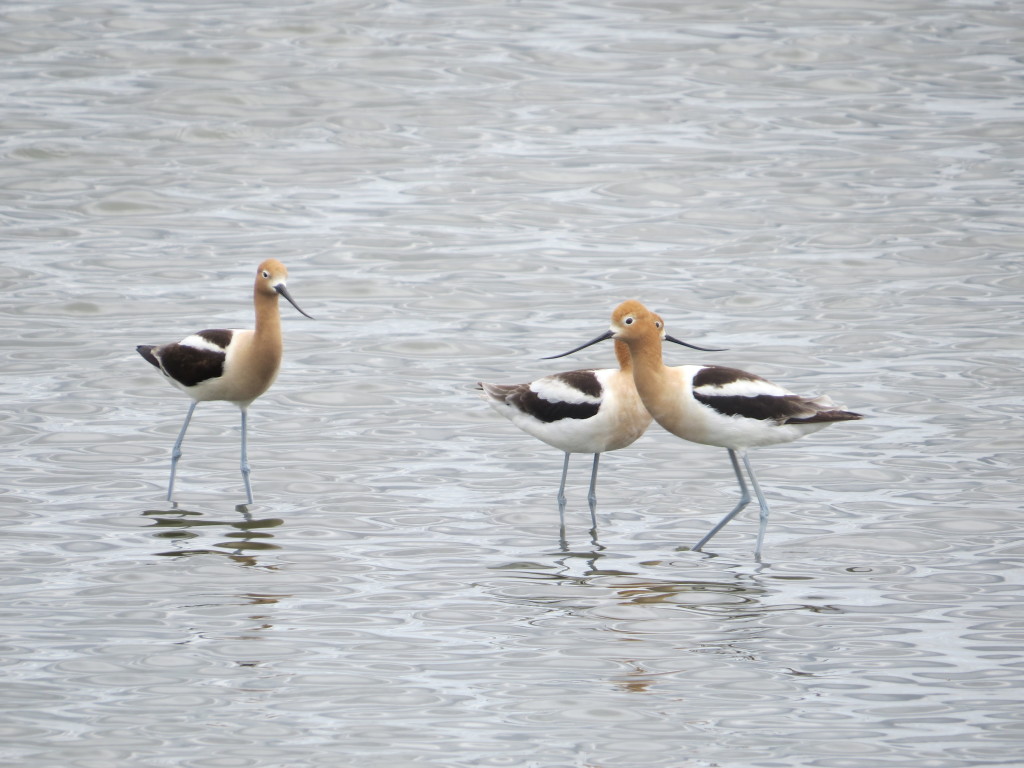
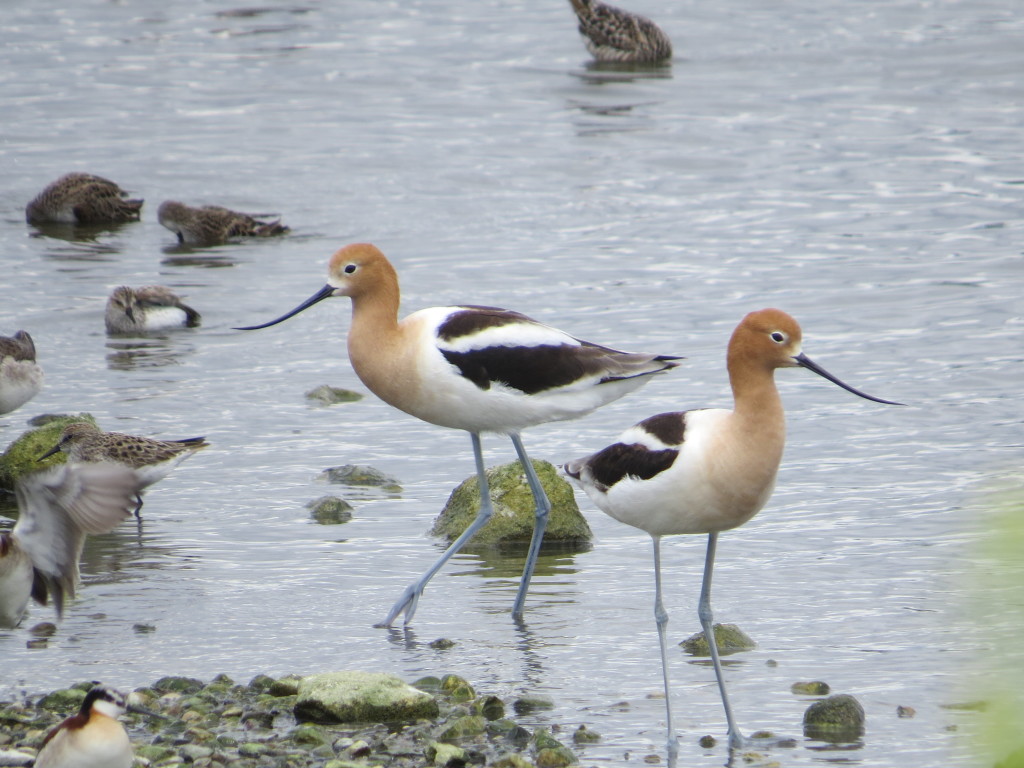
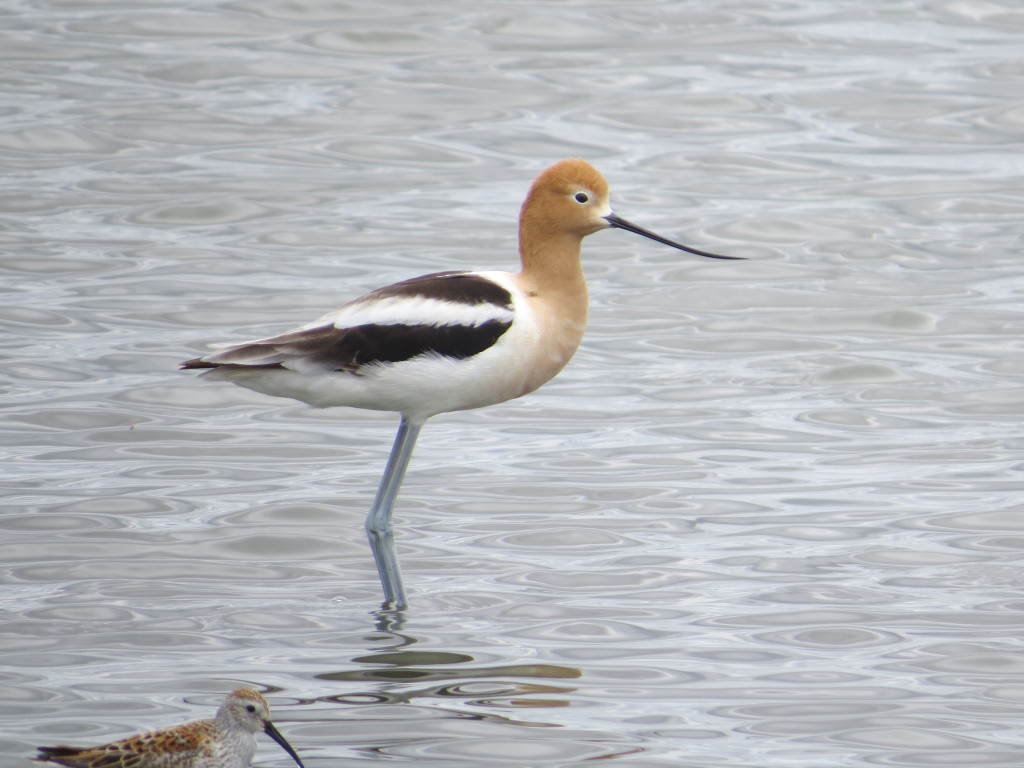
Black Terns are summer residents here, but it was nice to see one up close and still.
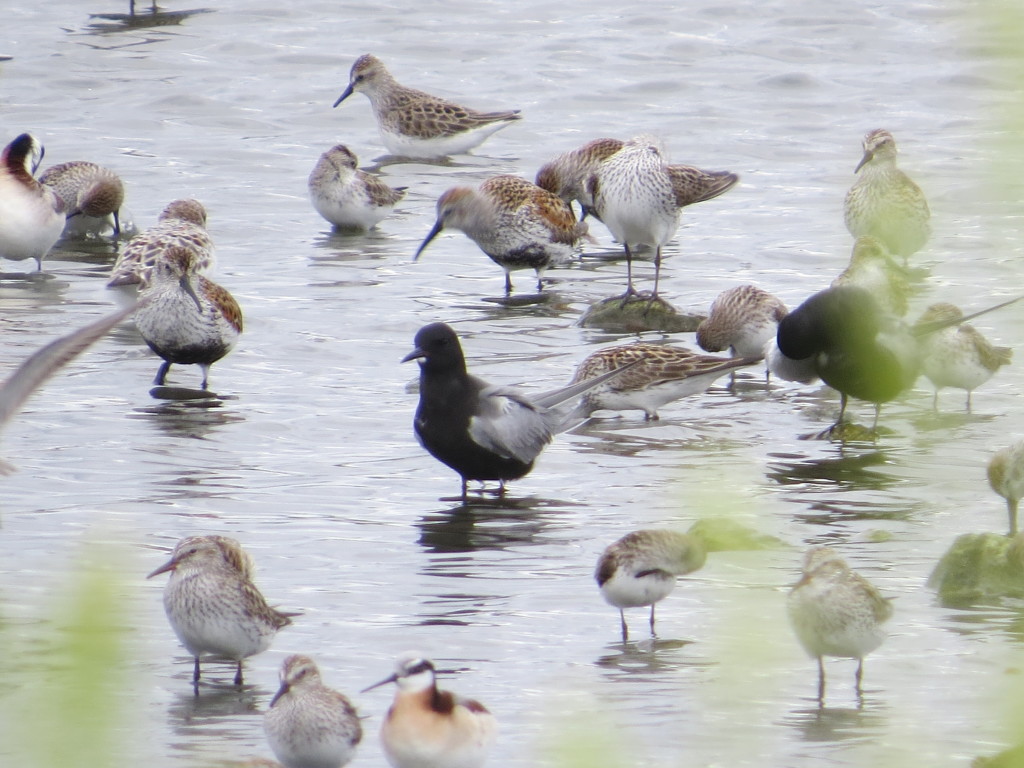 Dunlin were excessively plentiful and quite striking in full breeding plumage.
Dunlin were excessively plentiful and quite striking in full breeding plumage.
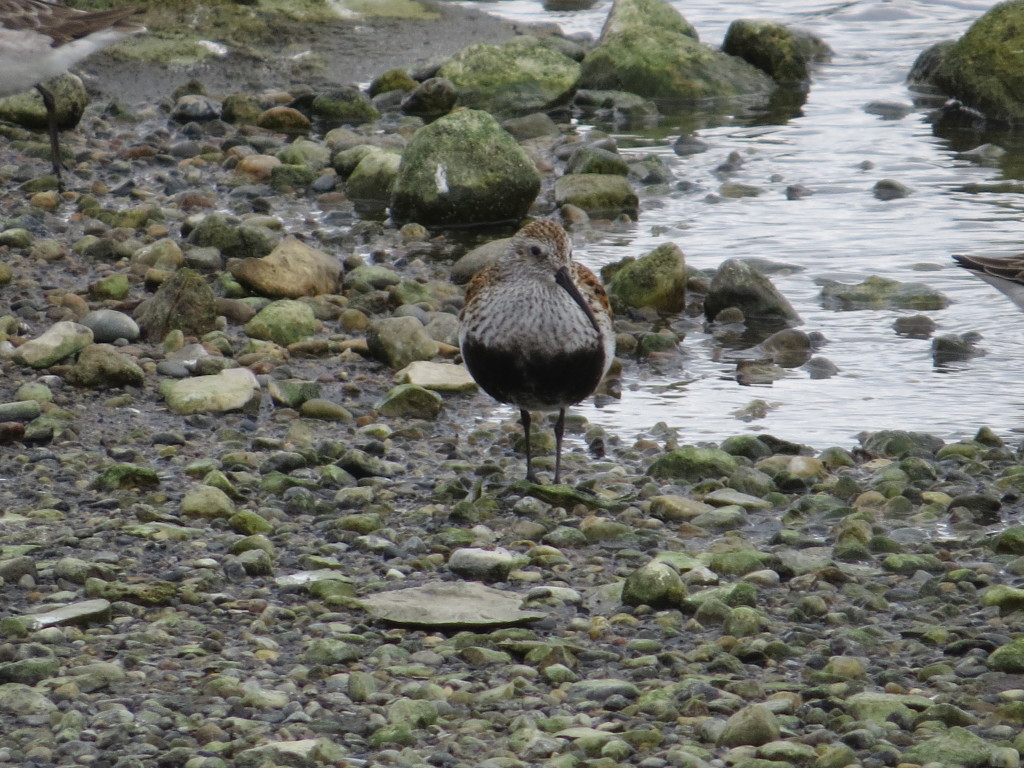
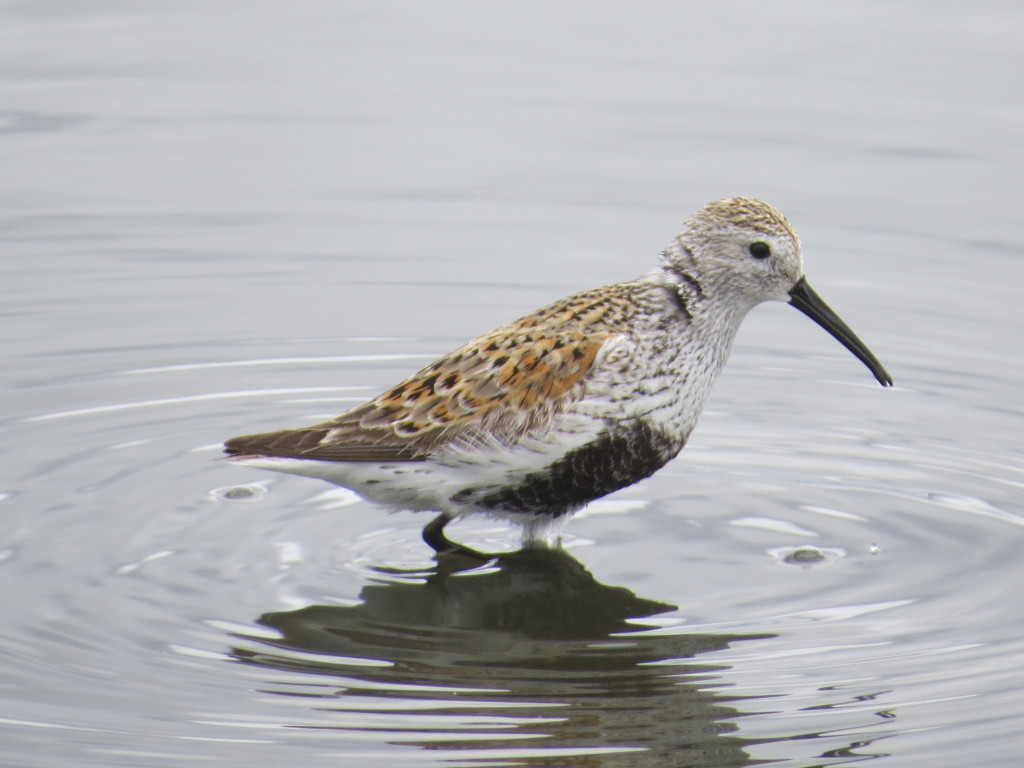
Stilt Sandpipers are also fun and handsome shorebirds.
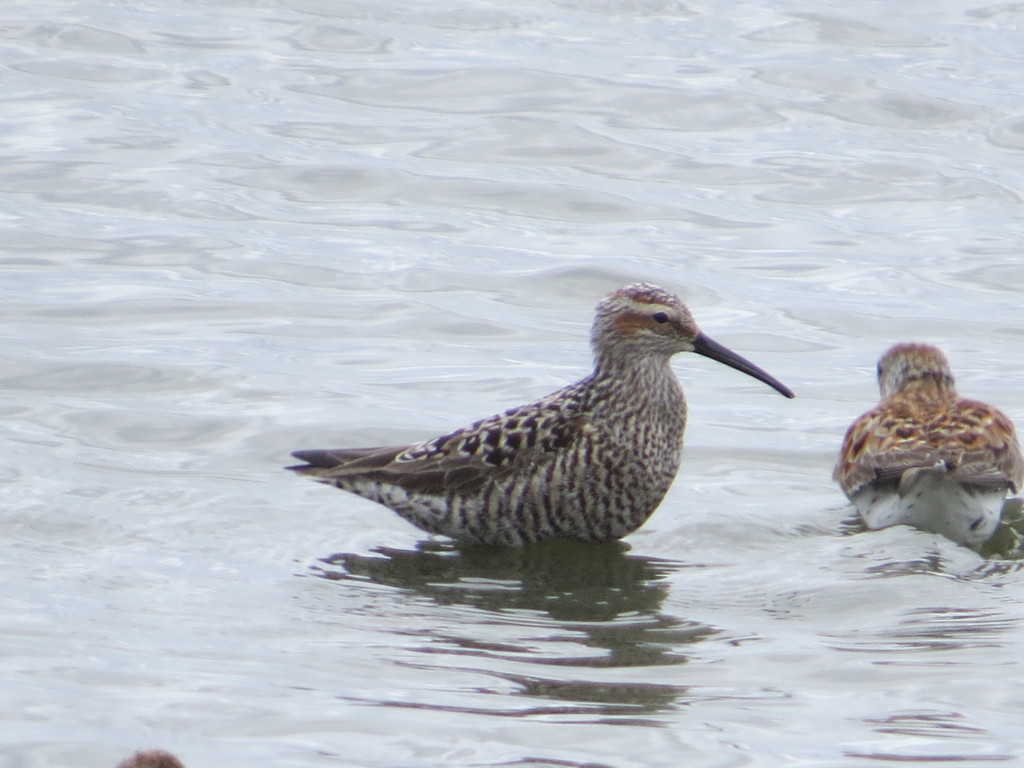
Another great addition to the shorebird mix were two Ruddy Turnstones, a crazily-patterned shorebird.
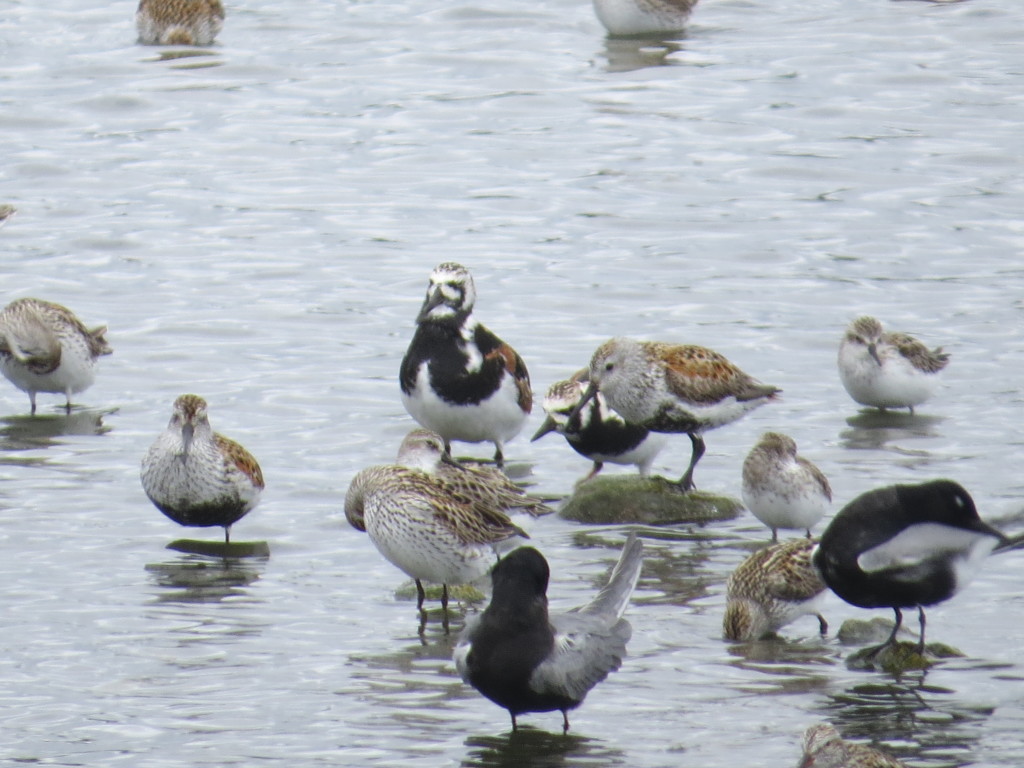 There was a lot going on with the shorebirds, both in numbers of birds and numbers of species. Wilson’s Phalaropes and White-rumped Sandpipers can be seen in my photos, but I didn’t focus any of my photography efforts on them. I probably could have spent hours photographing all these shorebirds, but I wanted to take another crack at that White-eyed Vireo and the day was already getting long for the non-birders. It was time to head back to New Ulm and hit the trail one last time.
There was a lot going on with the shorebirds, both in numbers of birds and numbers of species. Wilson’s Phalaropes and White-rumped Sandpipers can be seen in my photos, but I didn’t focus any of my photography efforts on them. I probably could have spent hours photographing all these shorebirds, but I wanted to take another crack at that White-eyed Vireo and the day was already getting long for the non-birders. It was time to head back to New Ulm and hit the trail one last time.
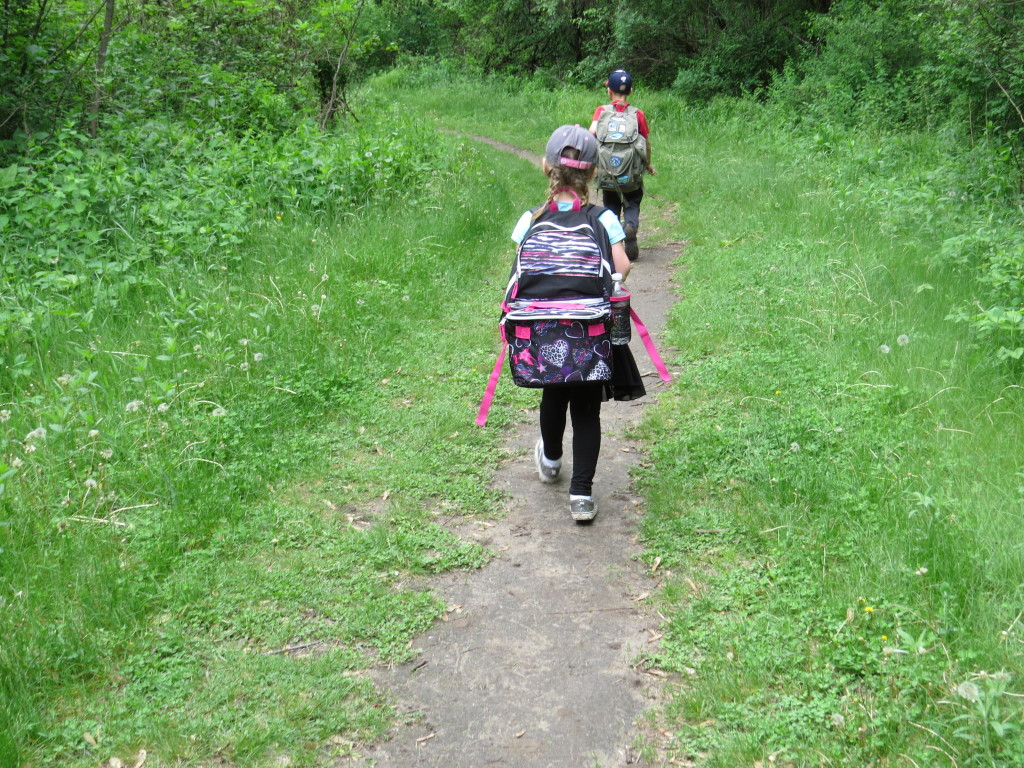
Joining us this time were Joel and Amanda Schmidt from back home. It didn’t take the six of us long to hear the White-eyed Vireo. Joel and I bushwhacked and tried to get on it, but we just couldn’t get a visual despite a valiant effort. I had to give up for real and make the painful decision to go ahead and count this bird as a lifer despite it being heard-only. I normally don’t like to do that, but exceptions sometimes need to be made for vagrant visitors of the Vireo variety. Precedence has already been set with my Bell’s Vireo lifer.
As we were about to part company with Joel and Amanda, we heard the soft bee-buzzz of a Blue-winged Warbler! I may not have been hearing things earlier after all! In no time we got some incredible looks at a Warbler I have only seen twice before.
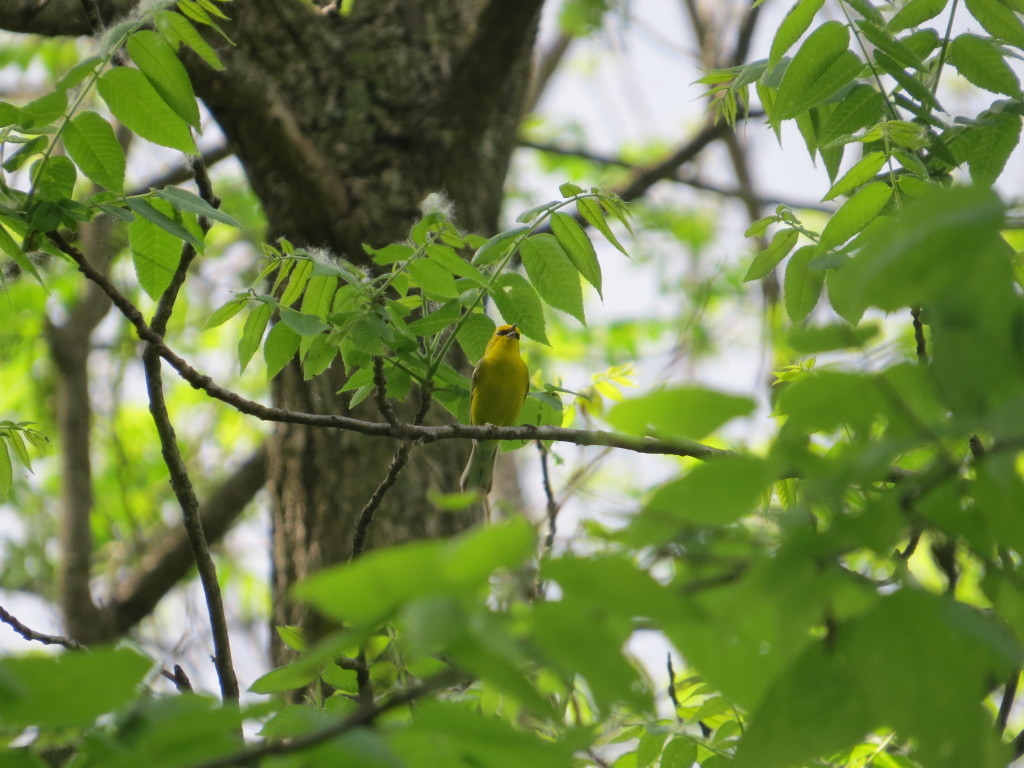
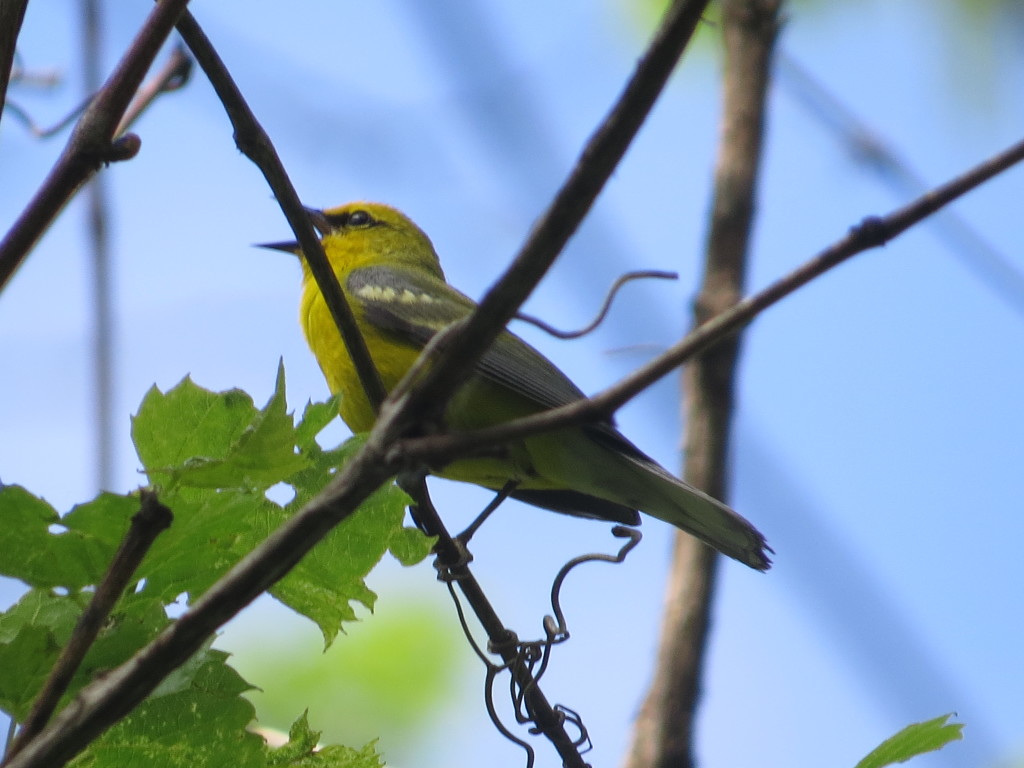 The Blue-winged Warbler was another great consolation prize in a day full of consolation goodies. It felt good to get better photos of this species.
The Blue-winged Warbler was another great consolation prize in a day full of consolation goodies. It felt good to get better photos of this species.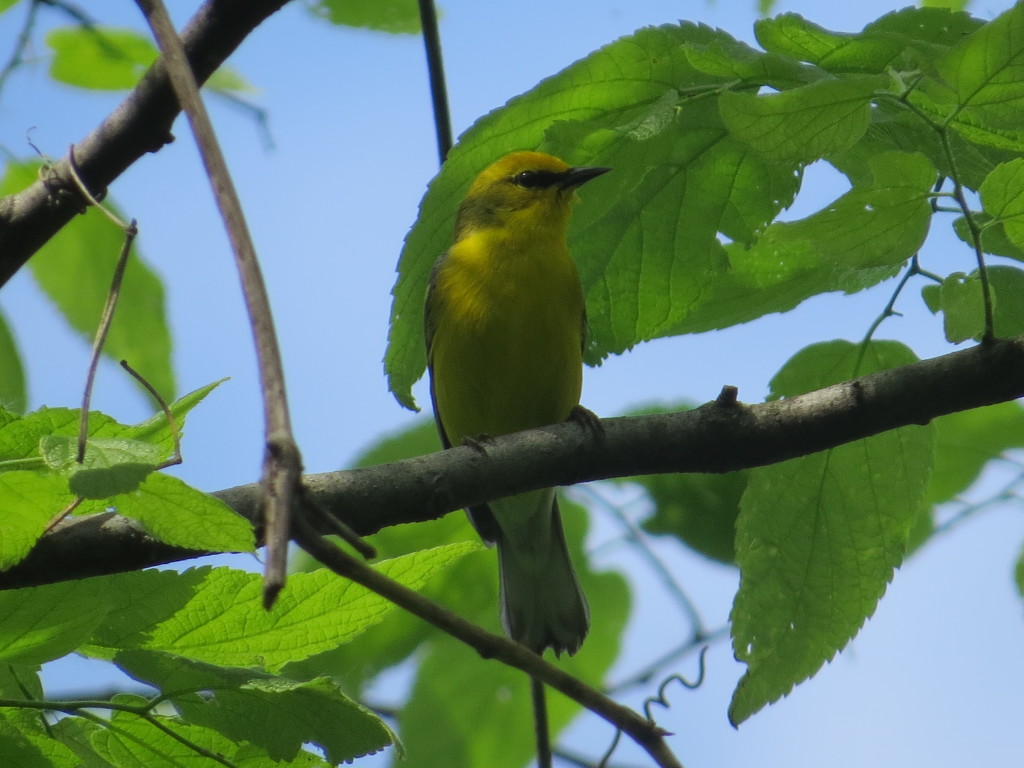 So, we went to see a White-eyed Vireo and failed in that regard. However, this day was an unimaginable lifer and FOY grab. Getting four lifers (WEVI, HUGO, SAND, COTE) in a day instate is unheard of at this stage in our birding. Topping it off with some incredible shorebirds like the Avocets and Turnstones as well as the Blue-winged Warbler really made for an exciting day back on our old stomping grounds.
So, we went to see a White-eyed Vireo and failed in that regard. However, this day was an unimaginable lifer and FOY grab. Getting four lifers (WEVI, HUGO, SAND, COTE) in a day instate is unheard of at this stage in our birding. Topping it off with some incredible shorebirds like the Avocets and Turnstones as well as the Blue-winged Warbler really made for an exciting day back on our old stomping grounds.
I’ve announced it before that there’s a lot more coming up, and even after such announcements, more incredible birding keeps happening. Now in addition to the Colorado birds and more recent lifers near home (one being nocturnal!), wait until you see WHO we went birding with and what we helped him find! Oh, and pretty soon we will be vacationing in Wisconsin’s Apostle Islands on the south shore of Lake Superior. We’ll see what comes of that. All I’ll say is that kayaks may be deployed; an endangered species may be had.

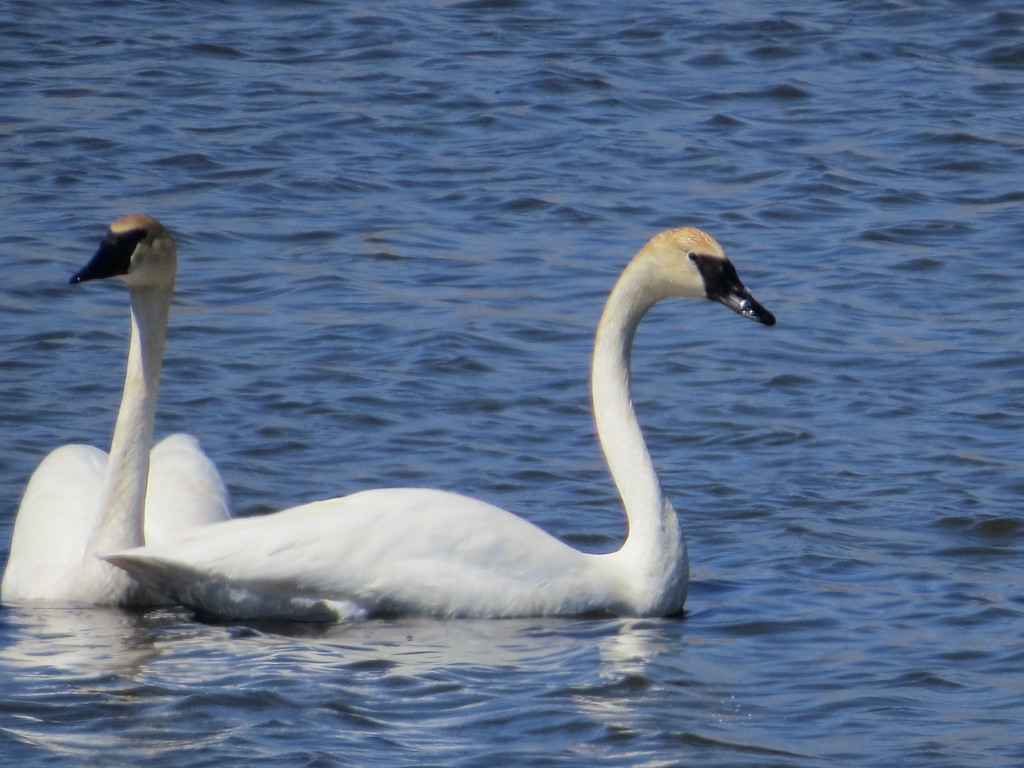
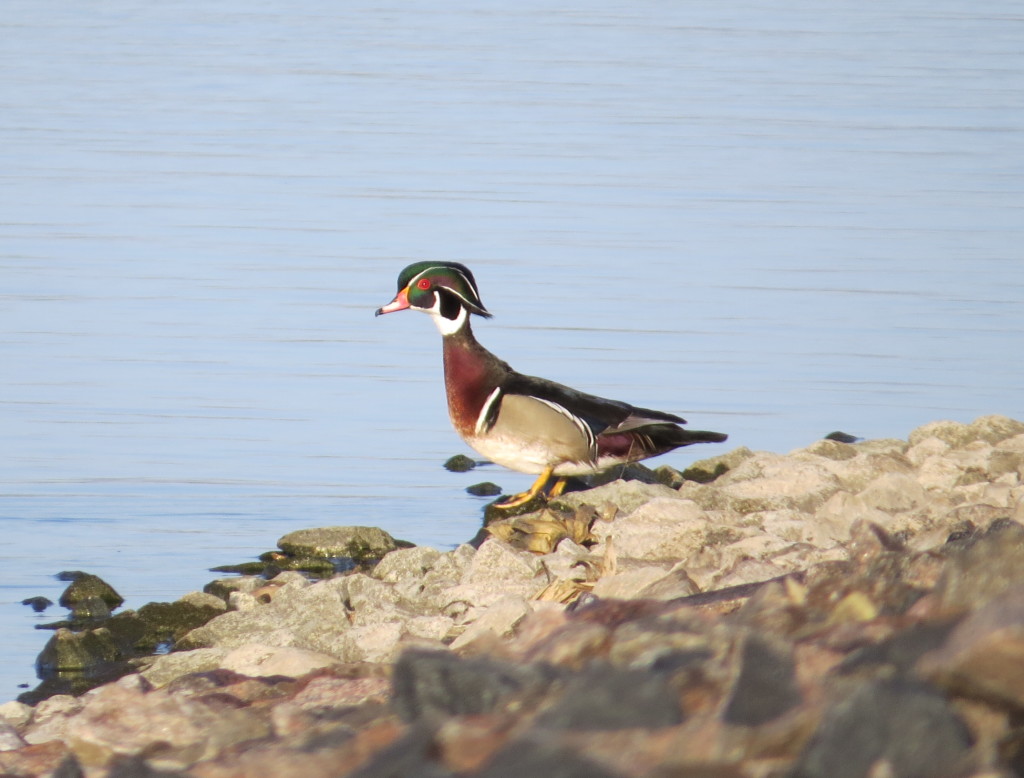
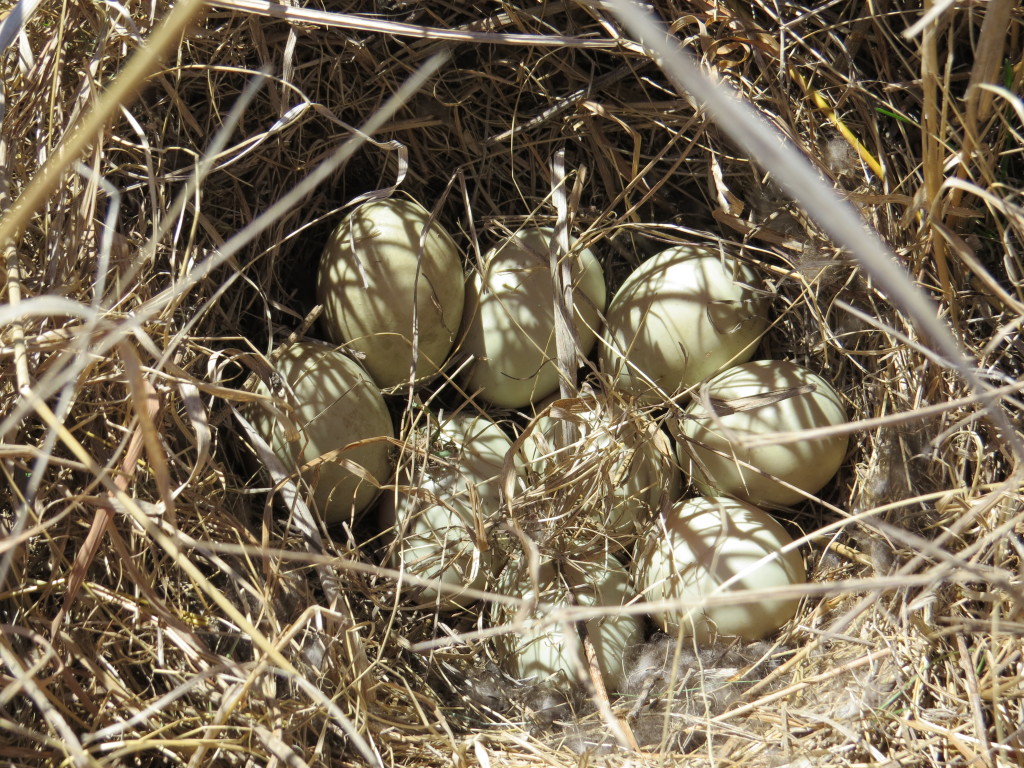
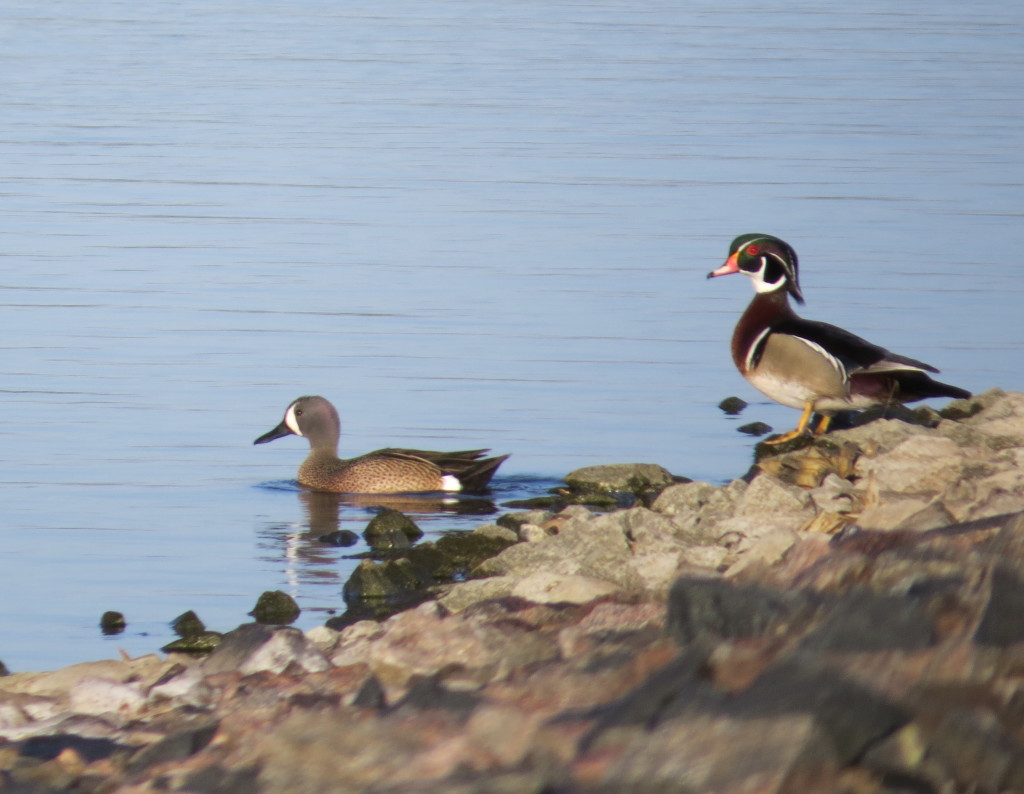
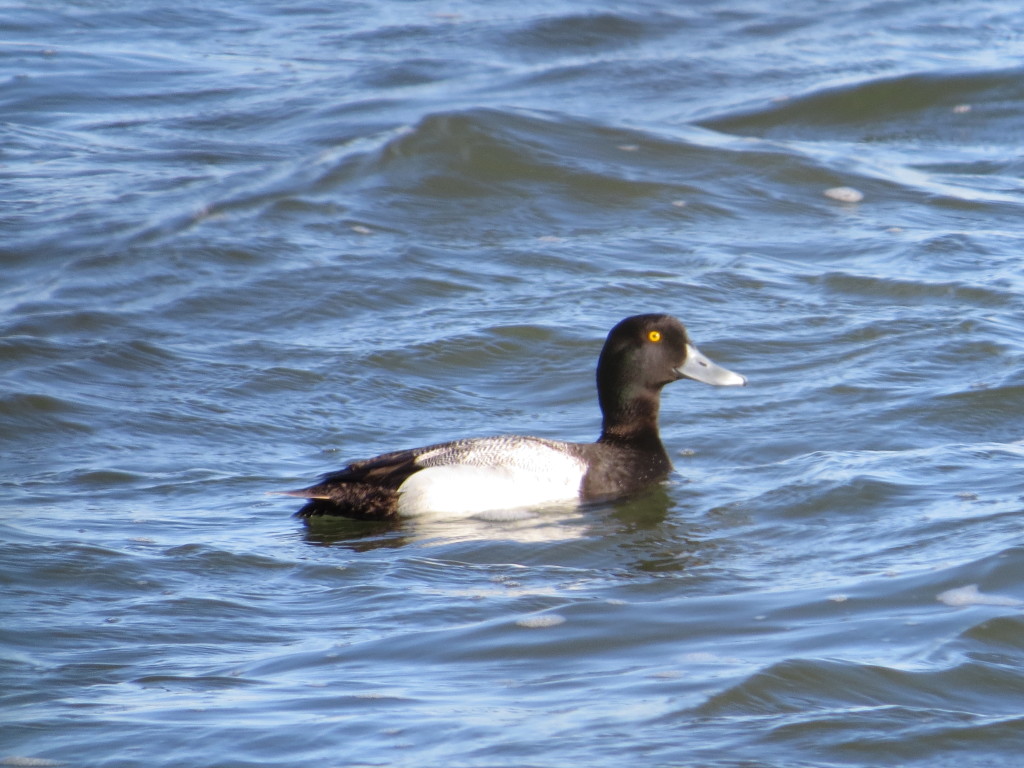
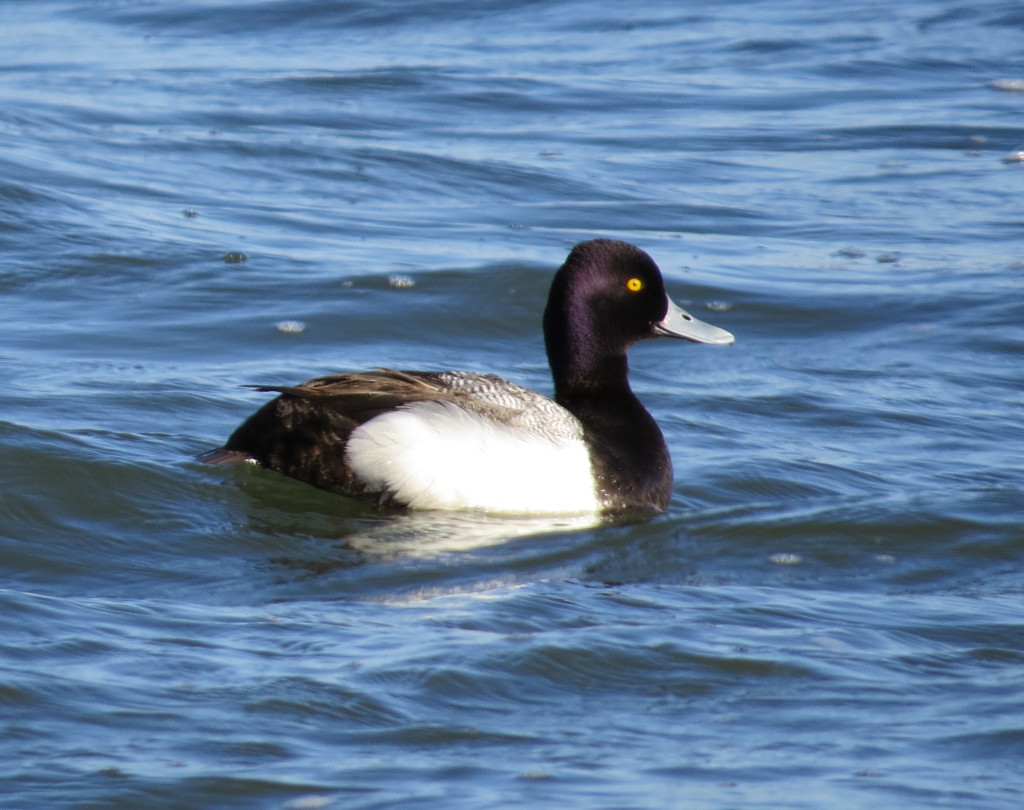
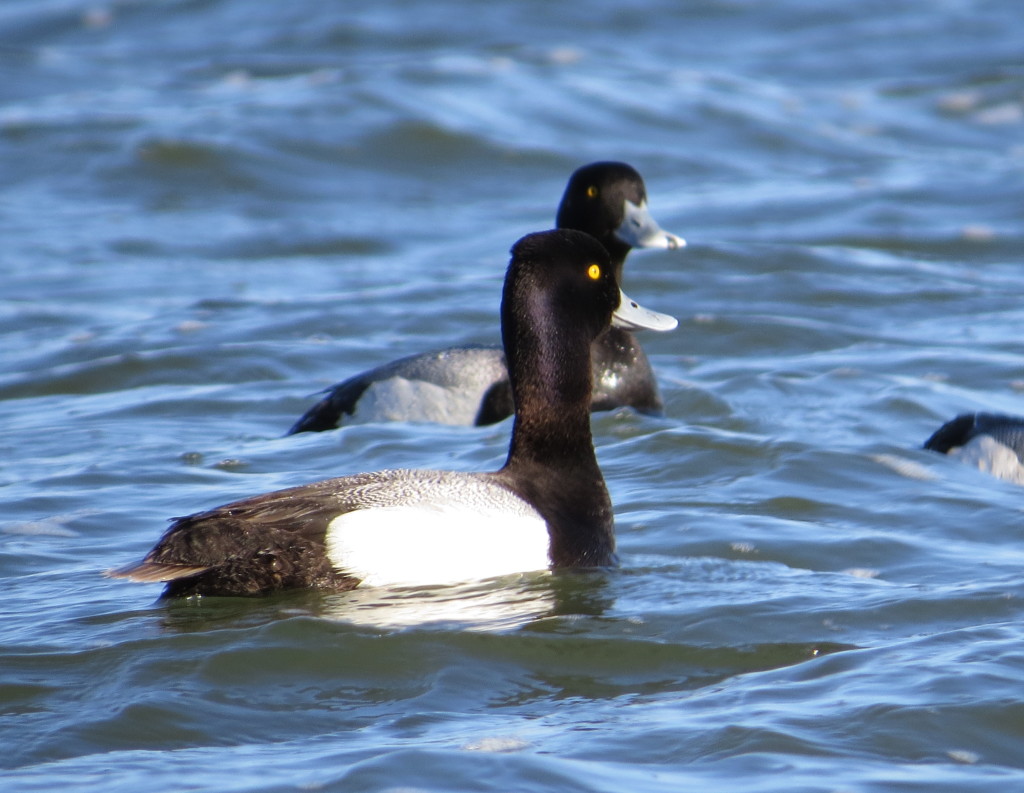
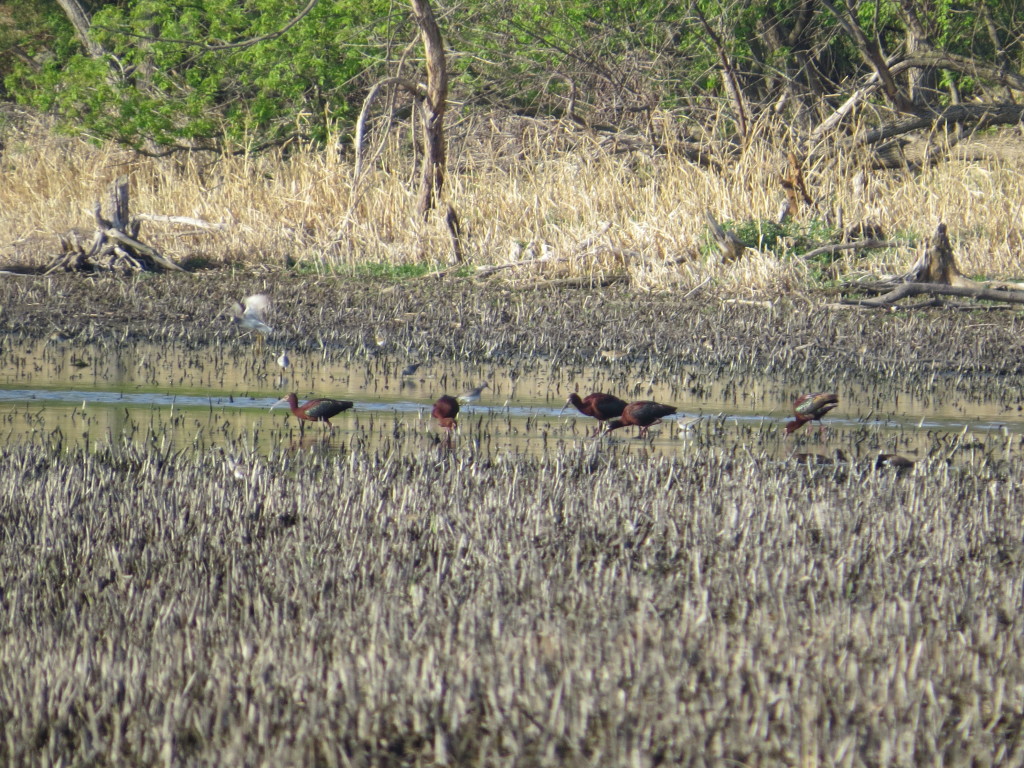
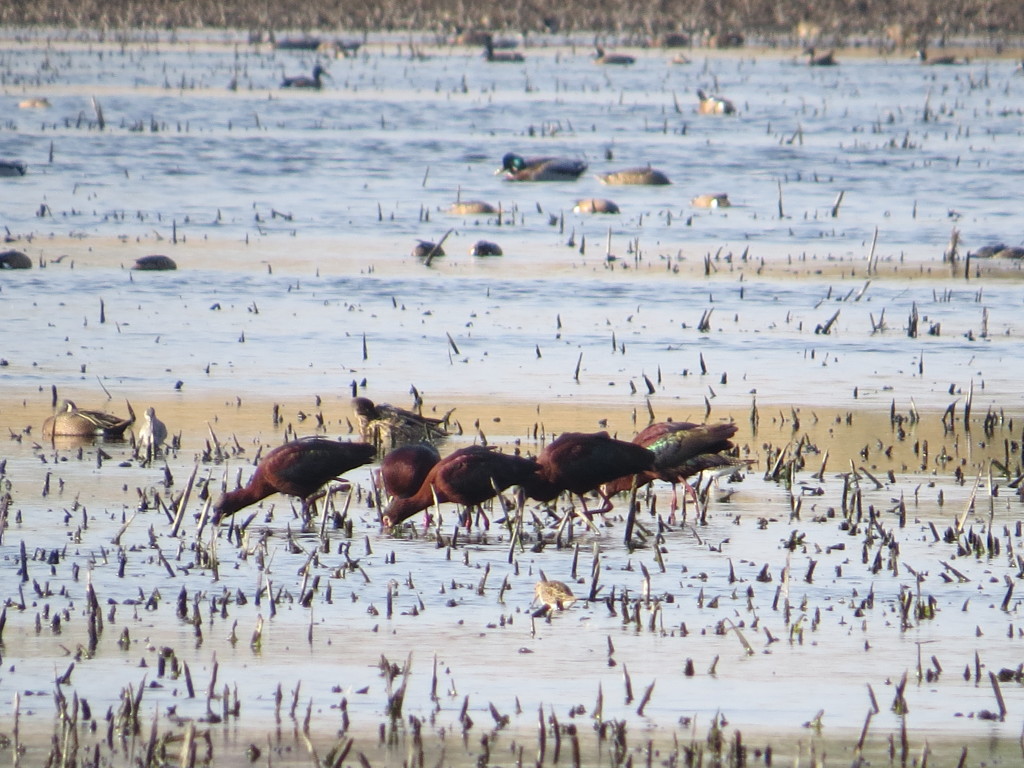
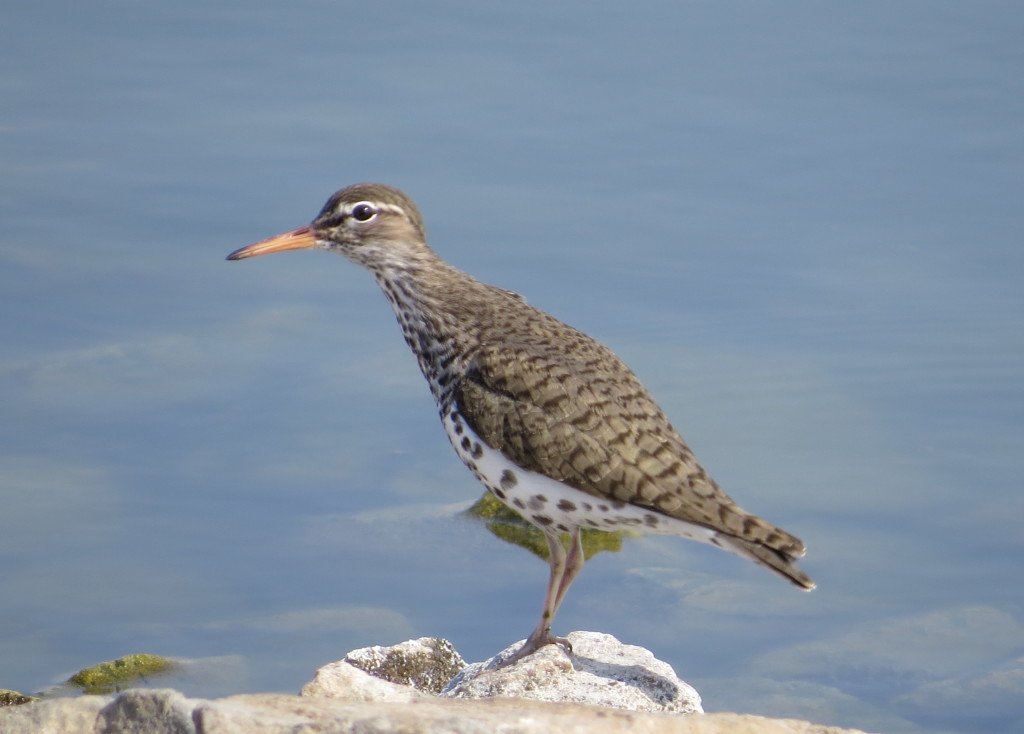
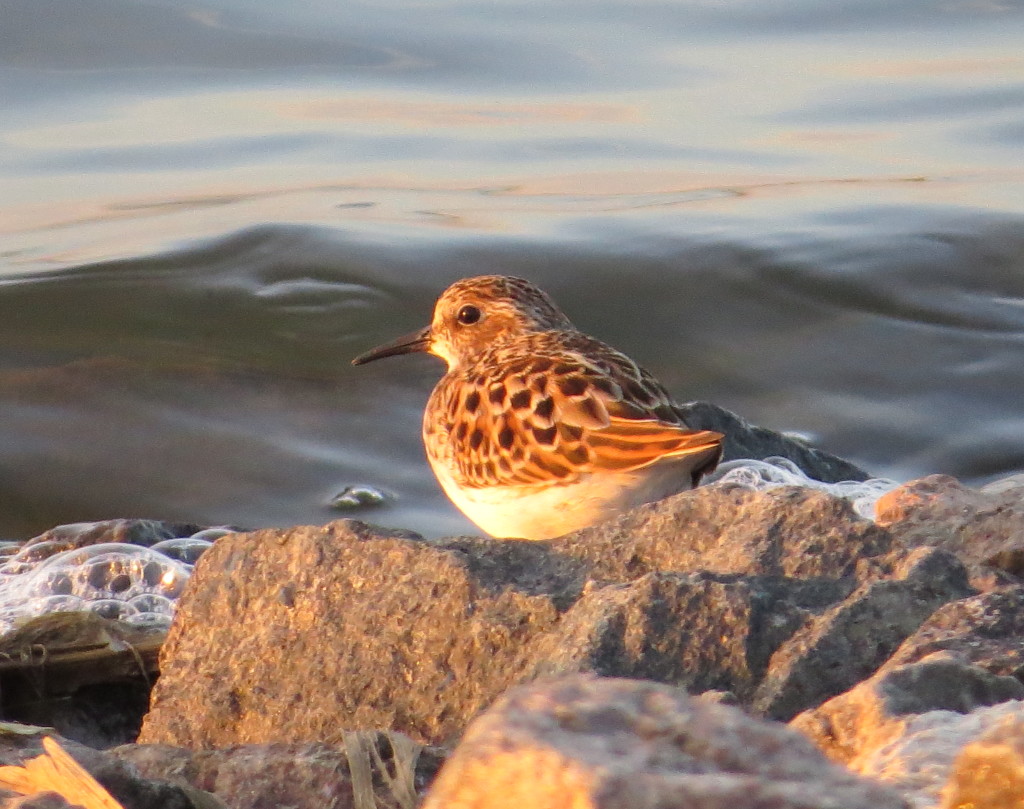
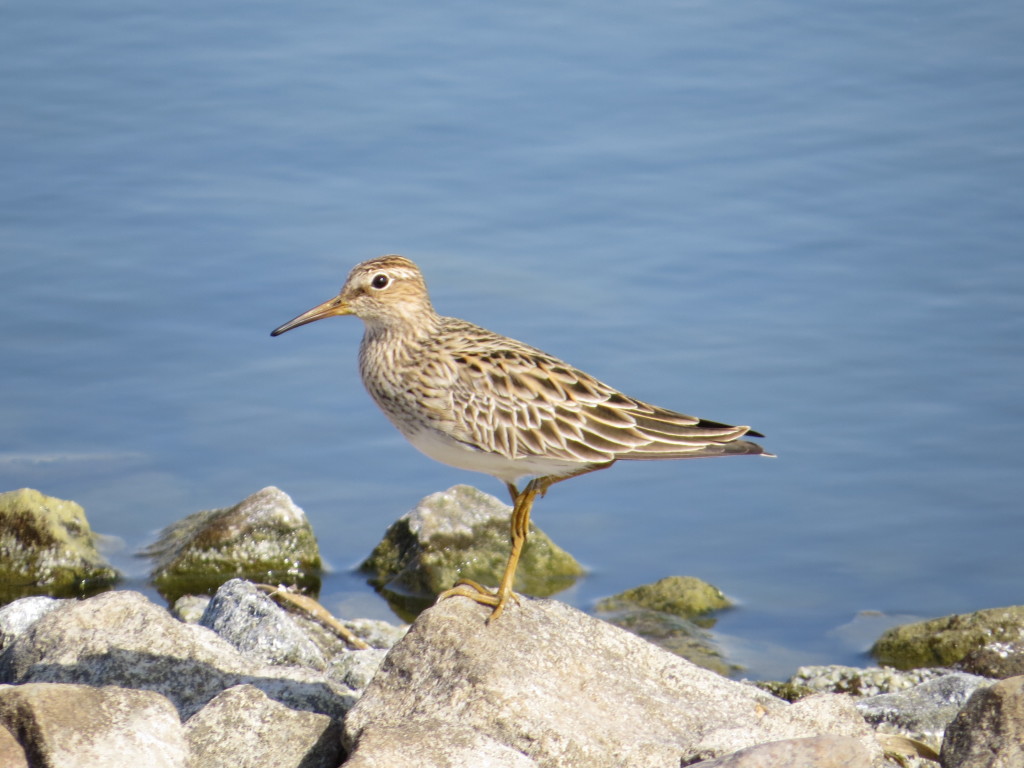
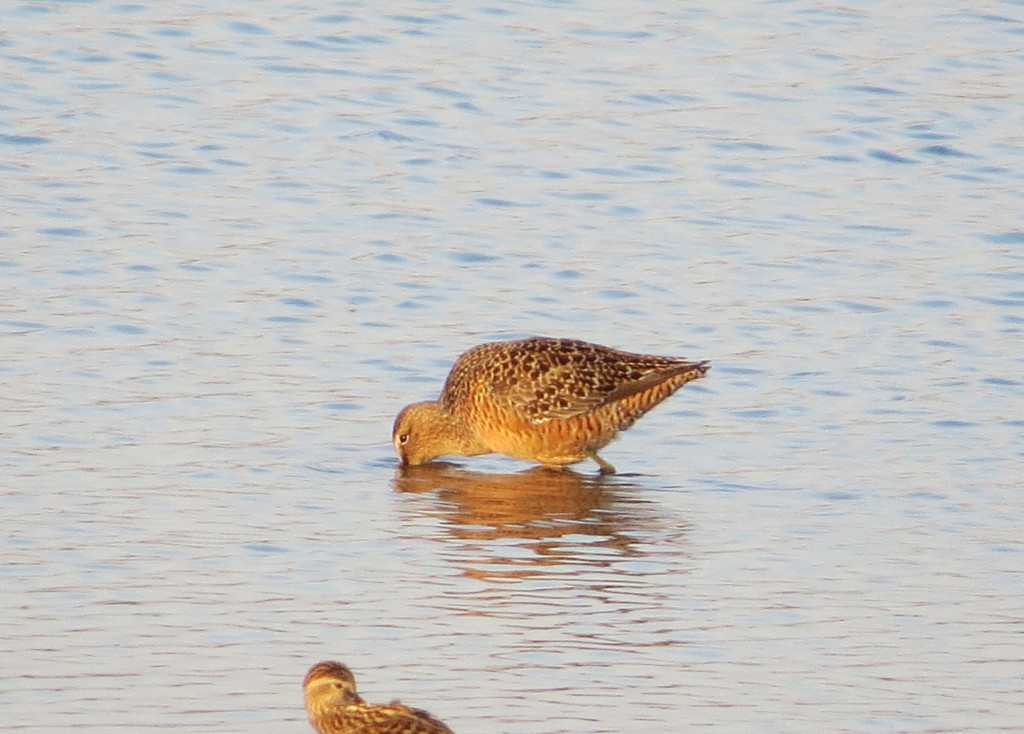
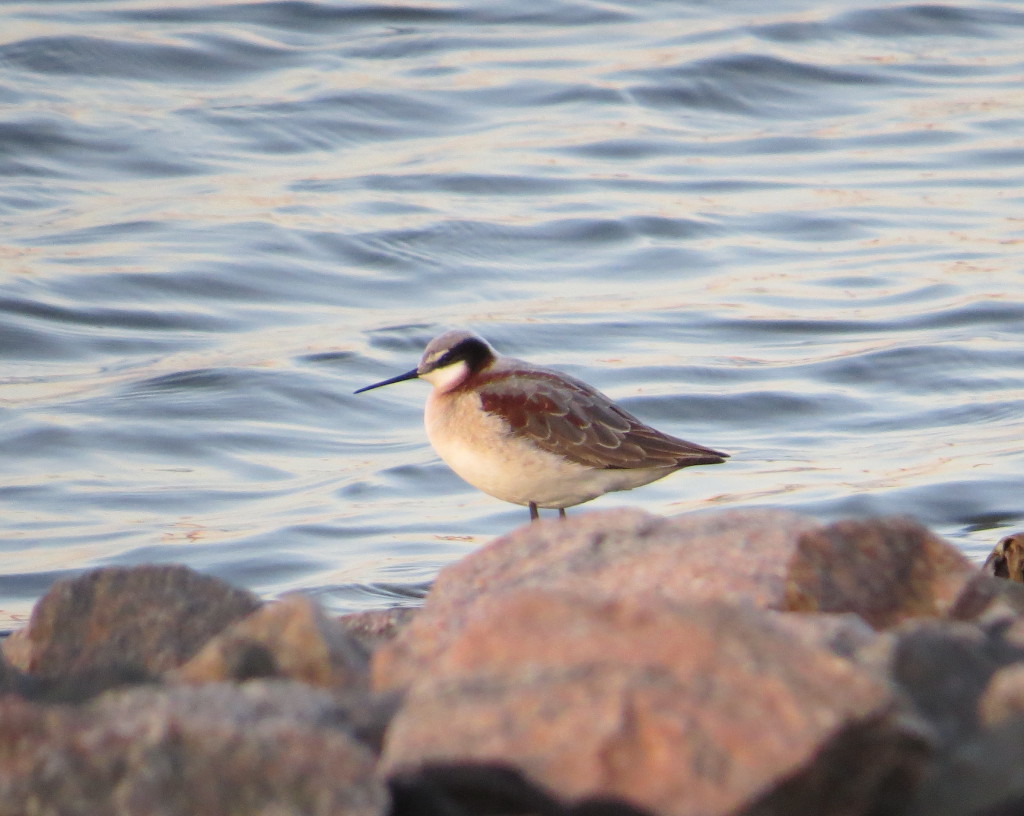
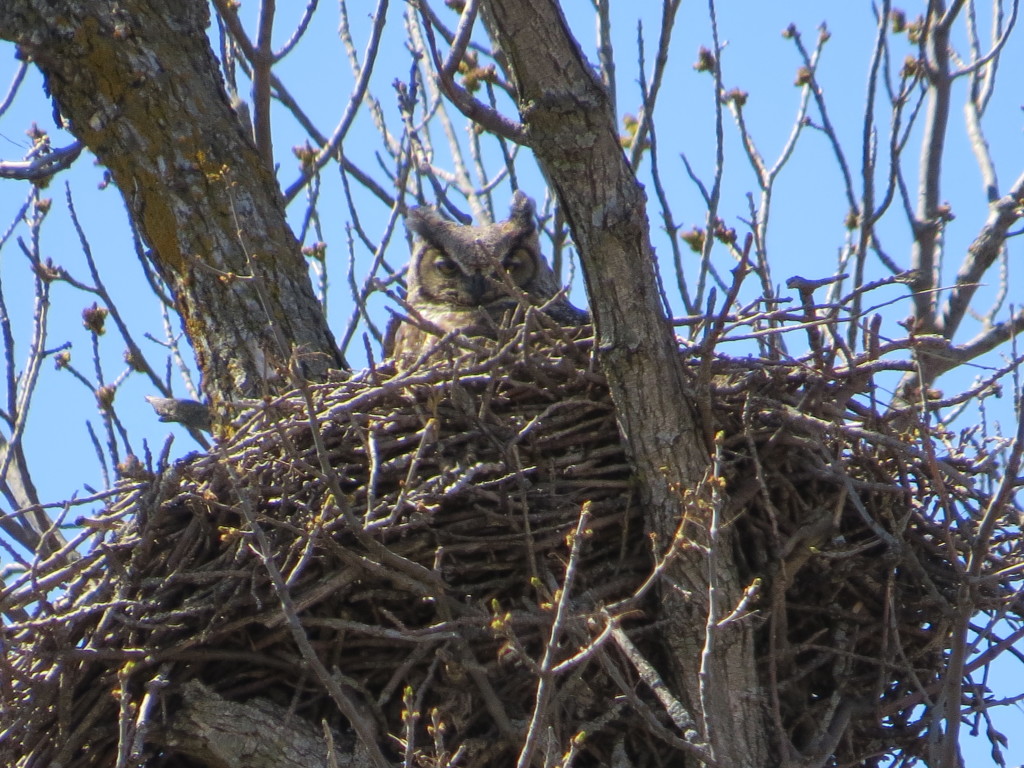
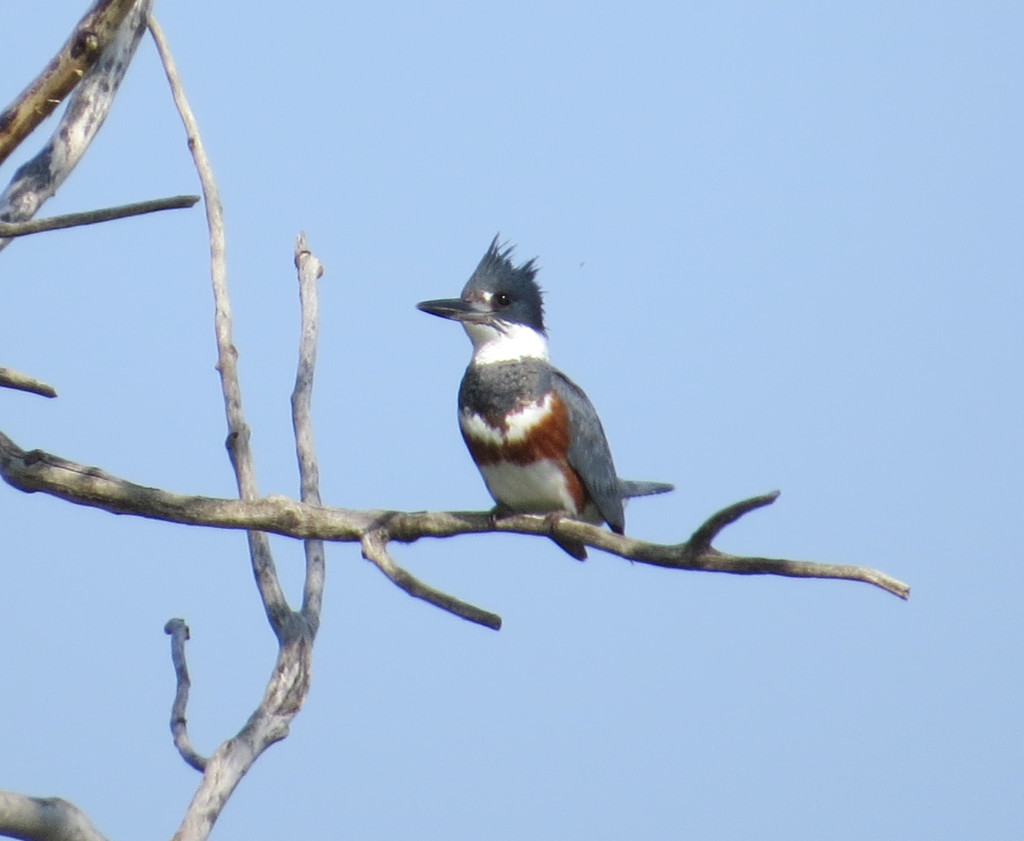
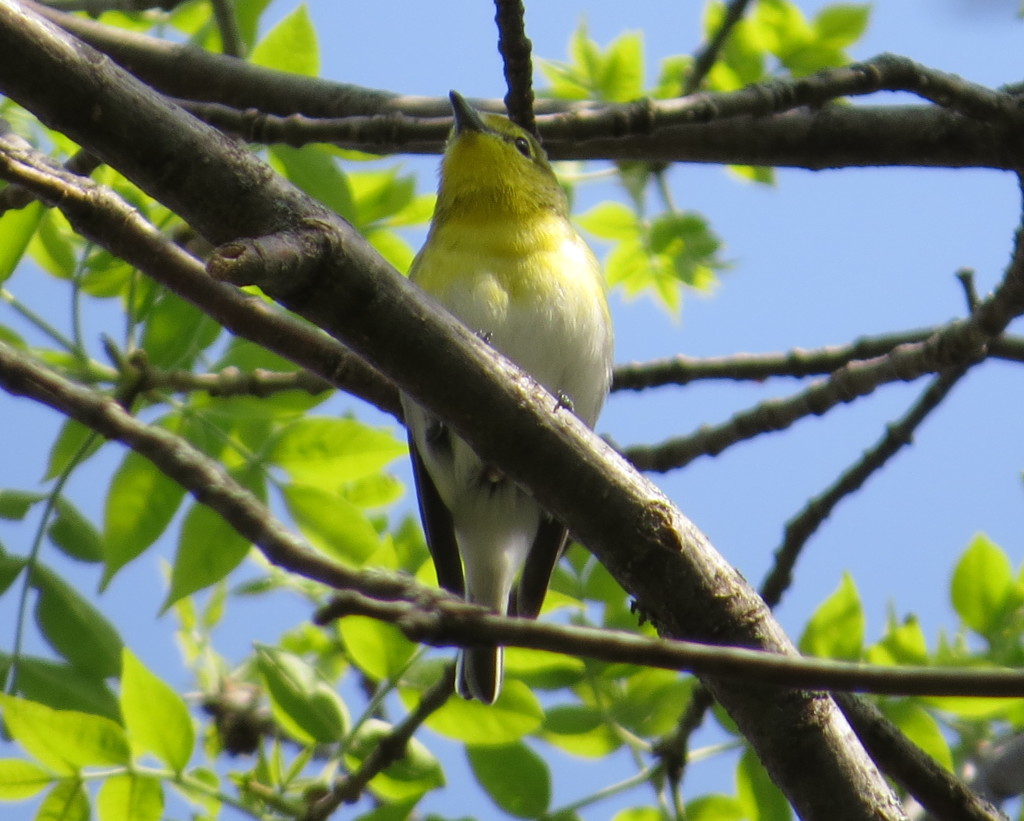
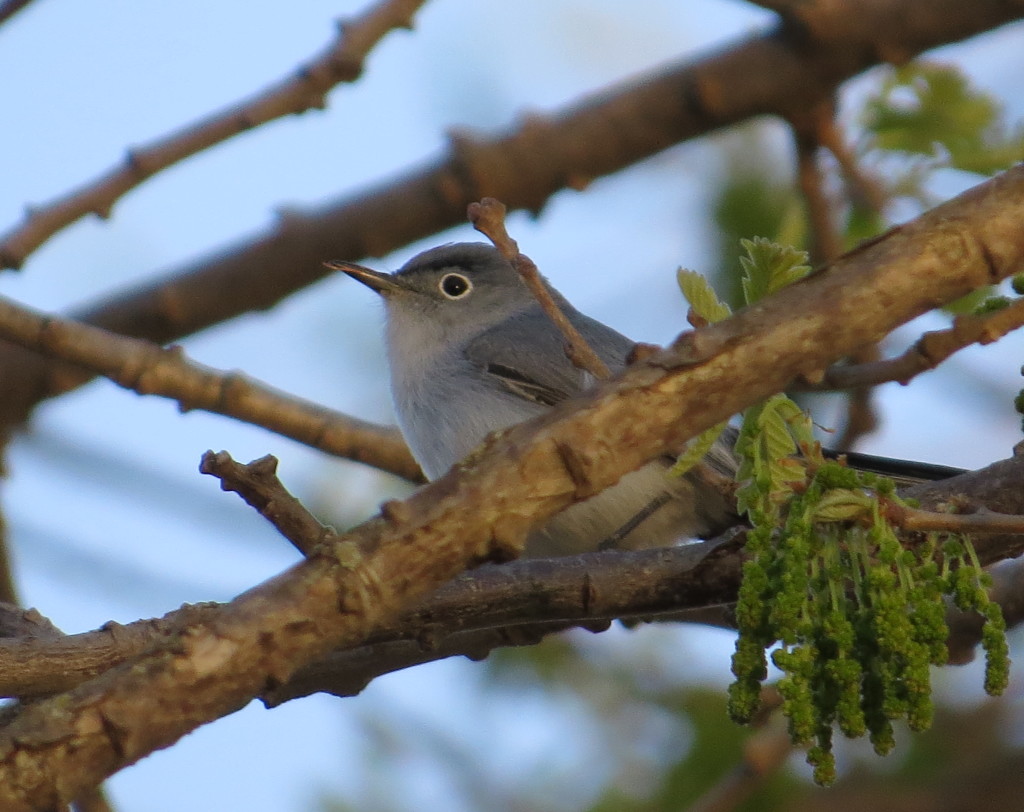
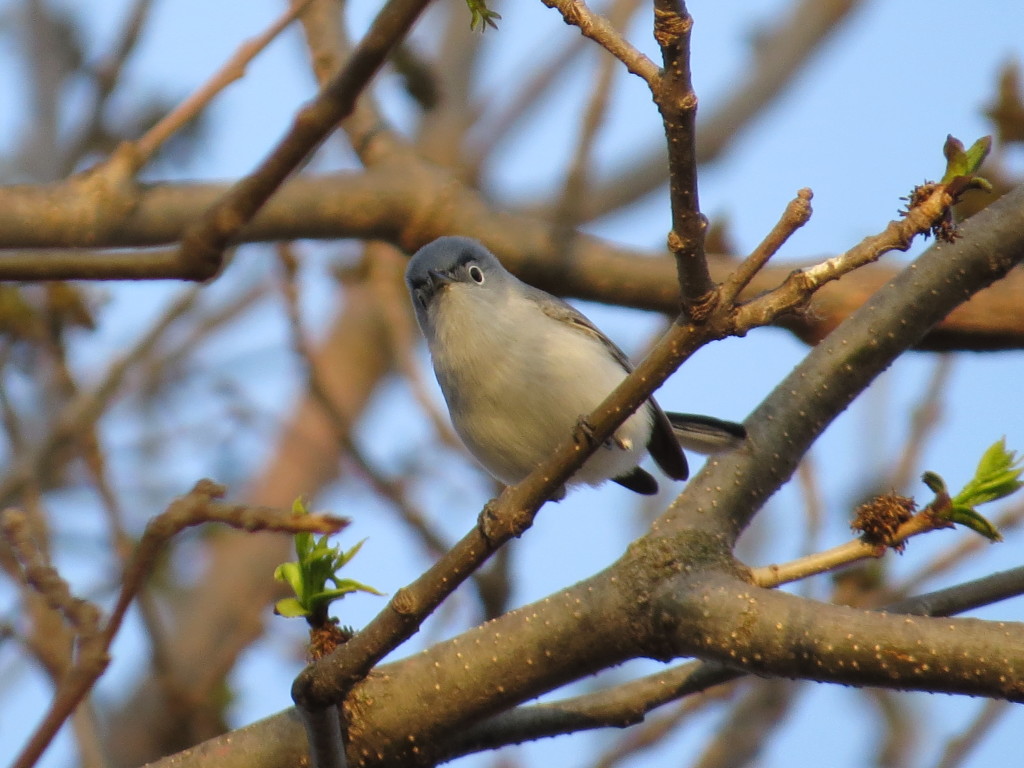
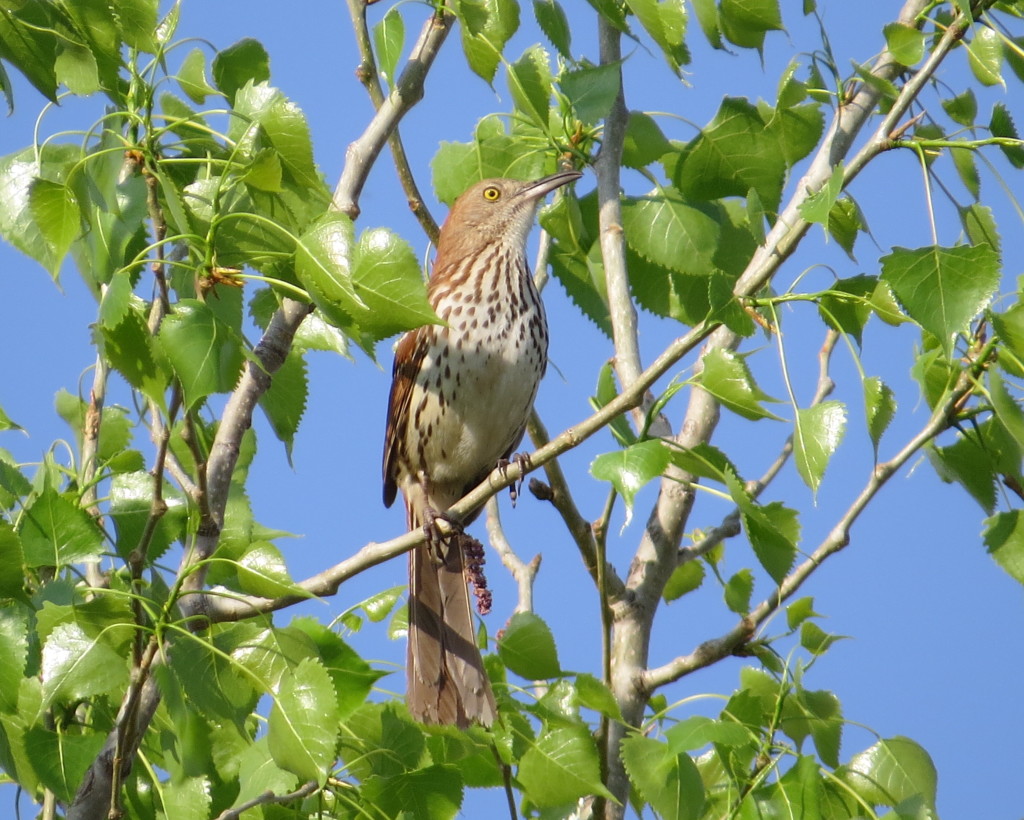
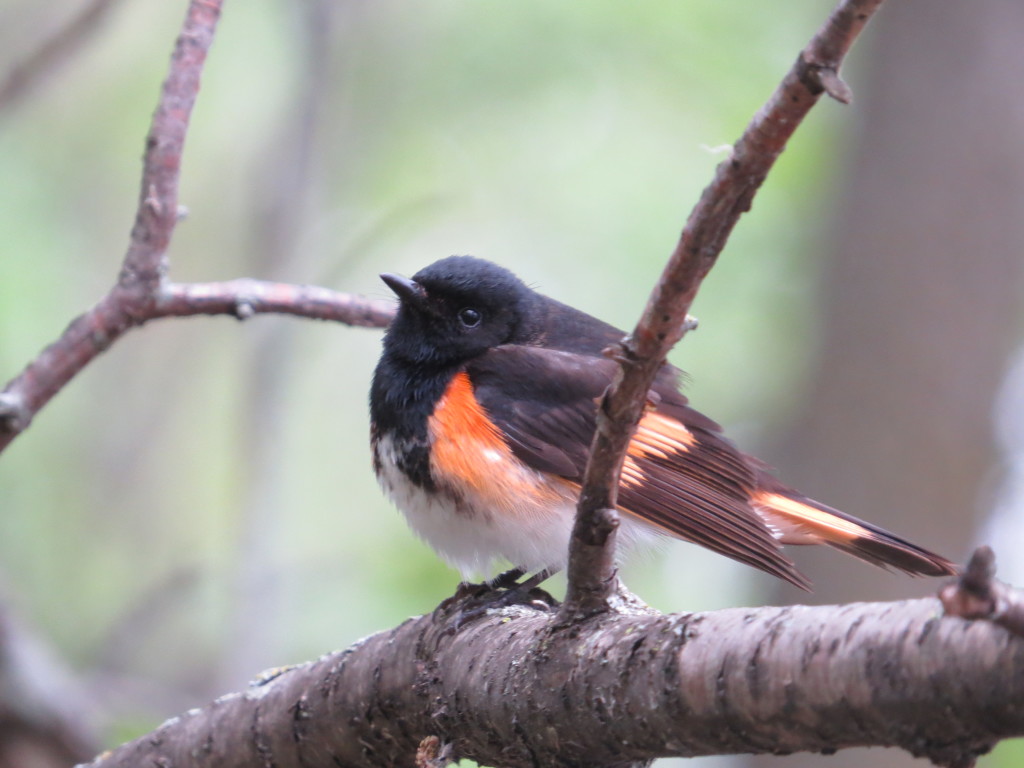
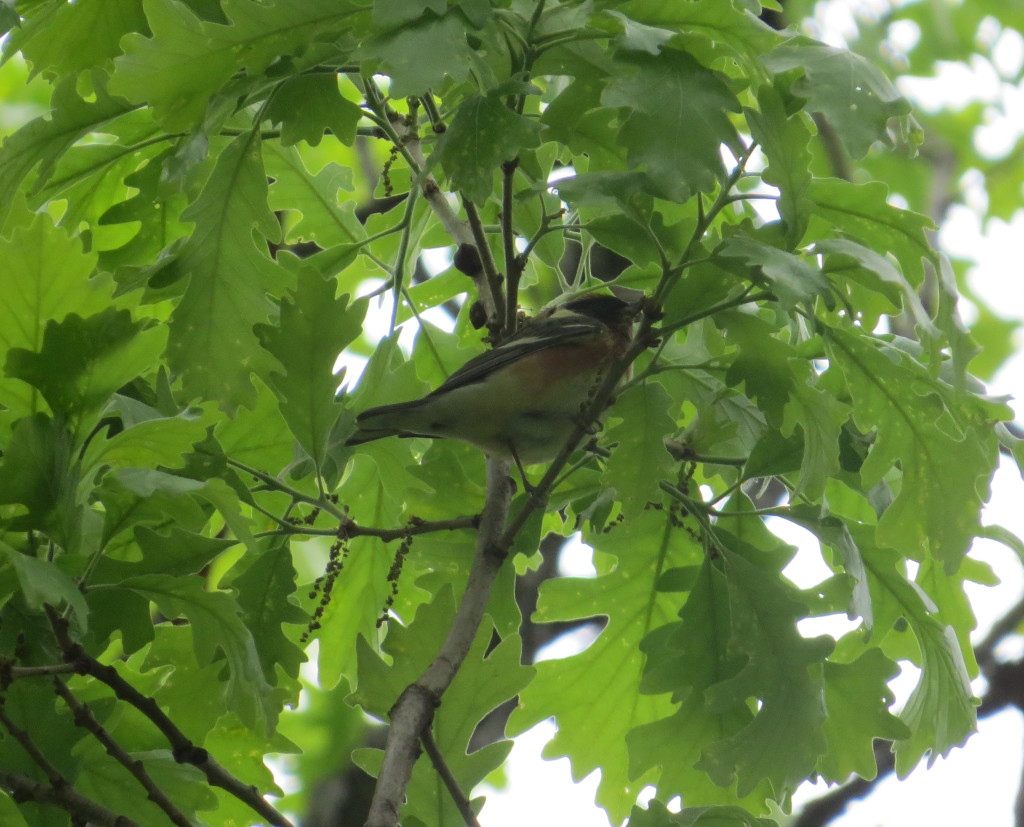
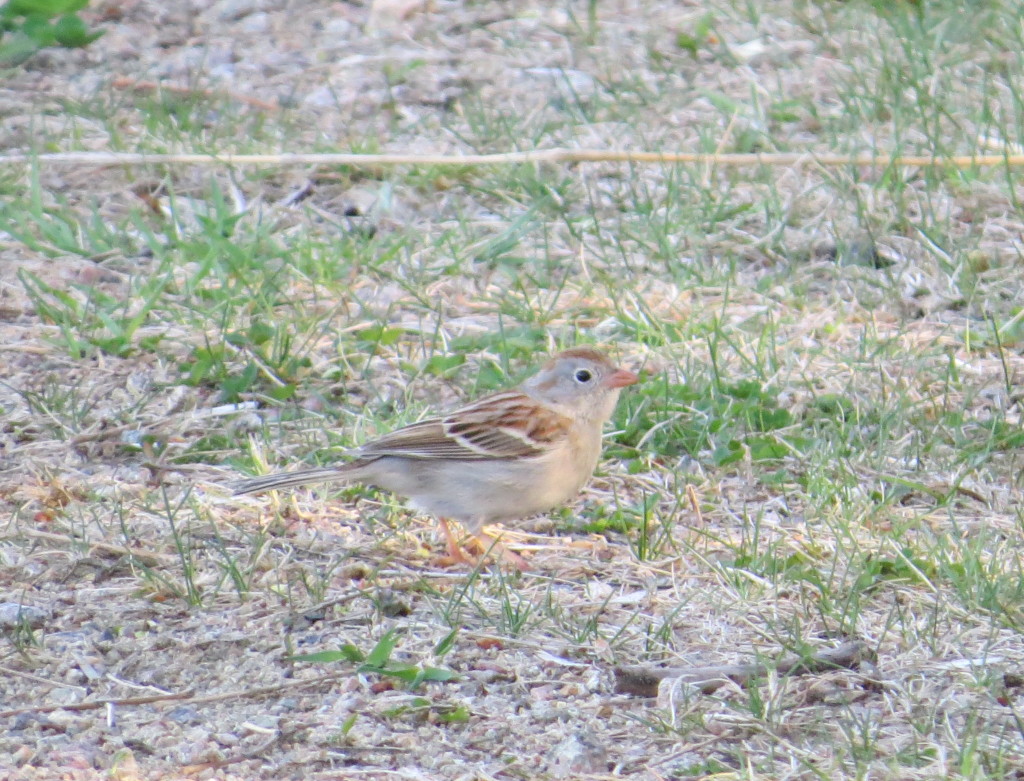
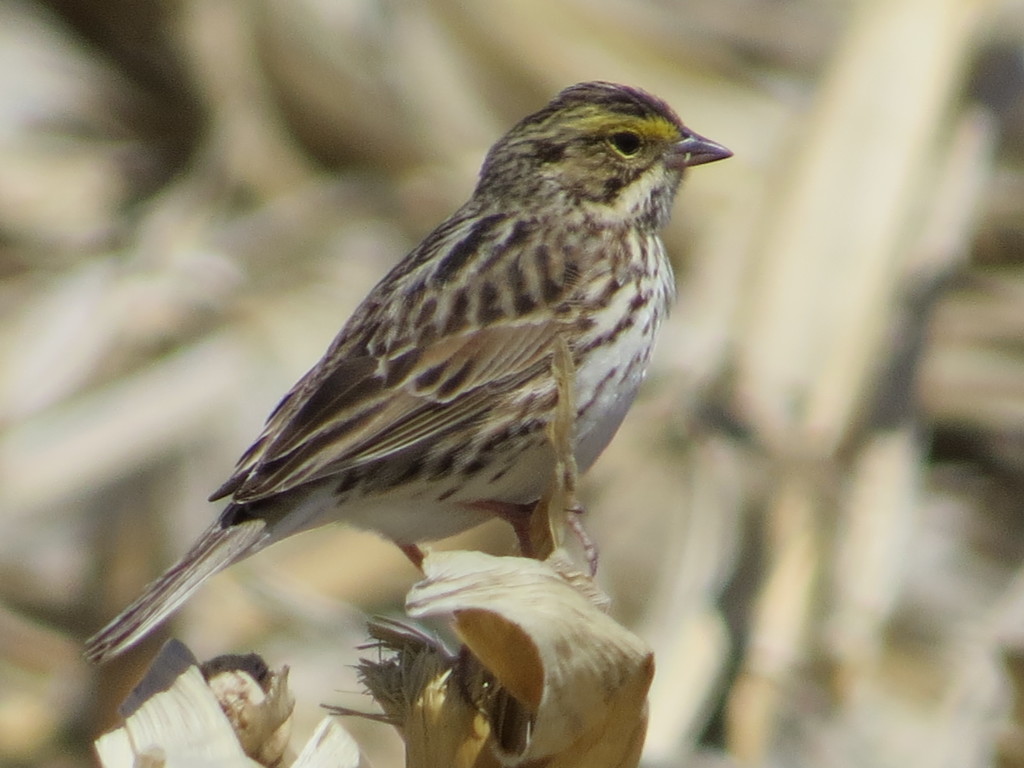
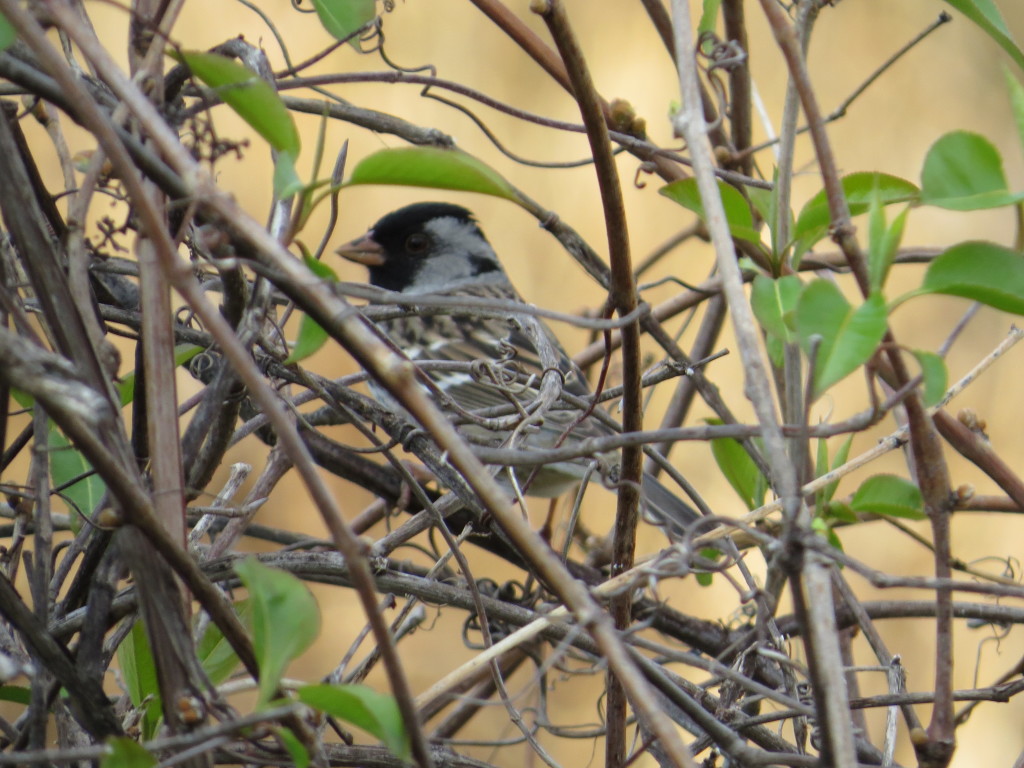
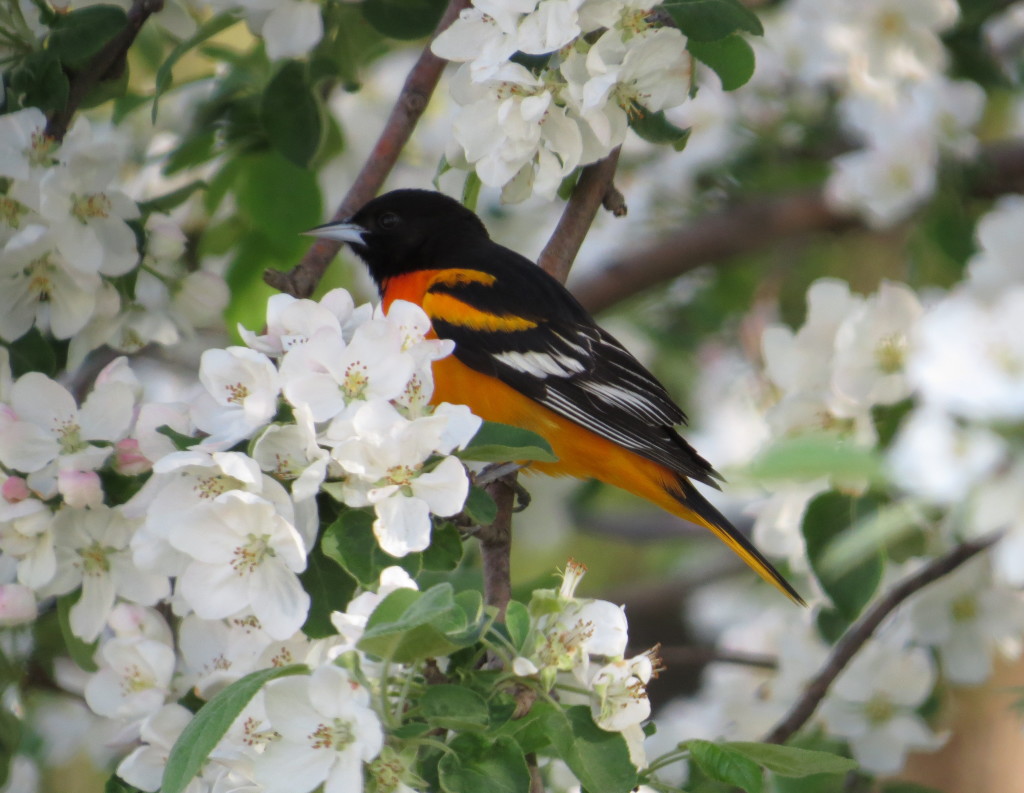
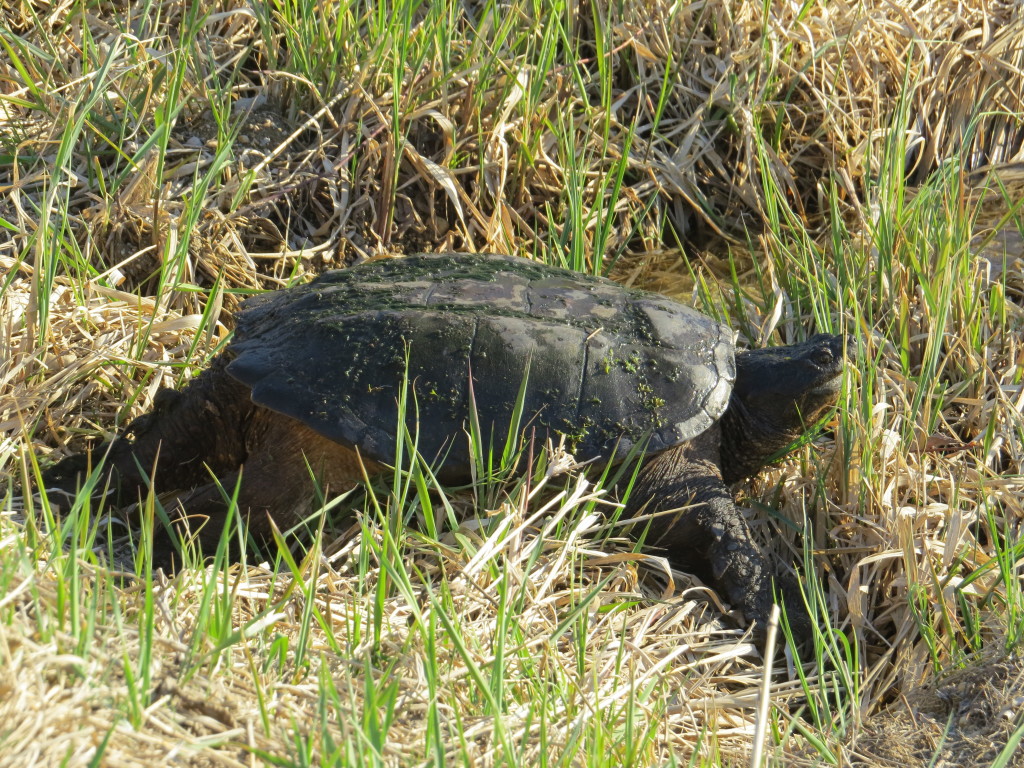
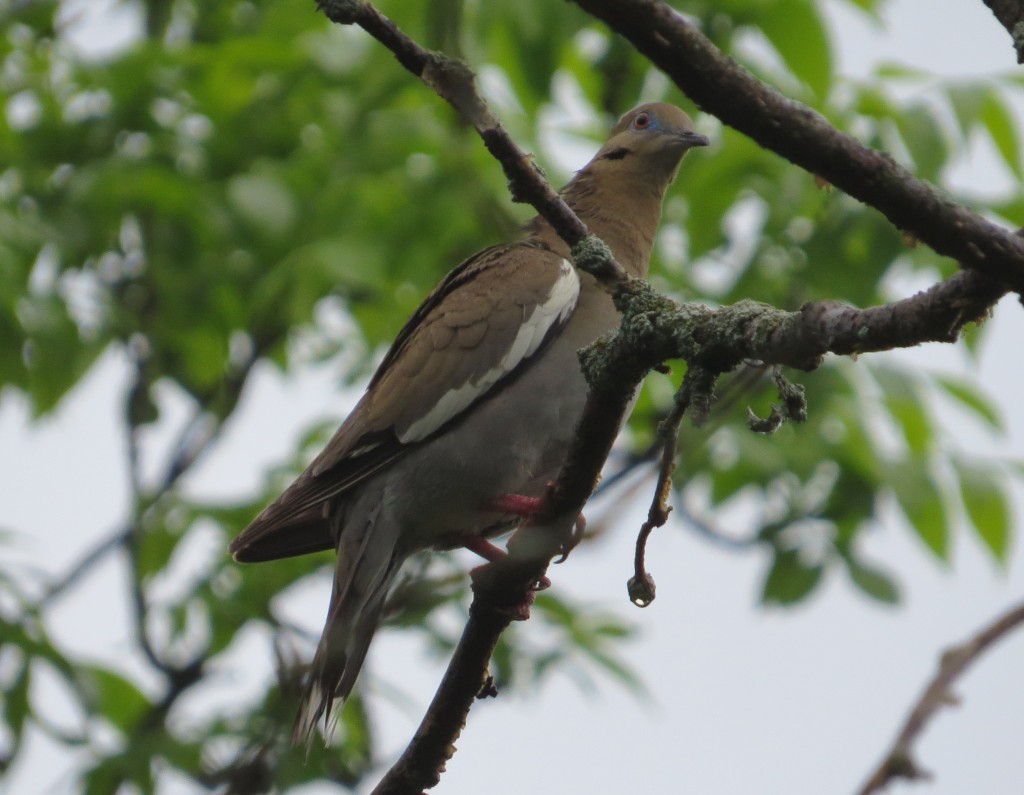
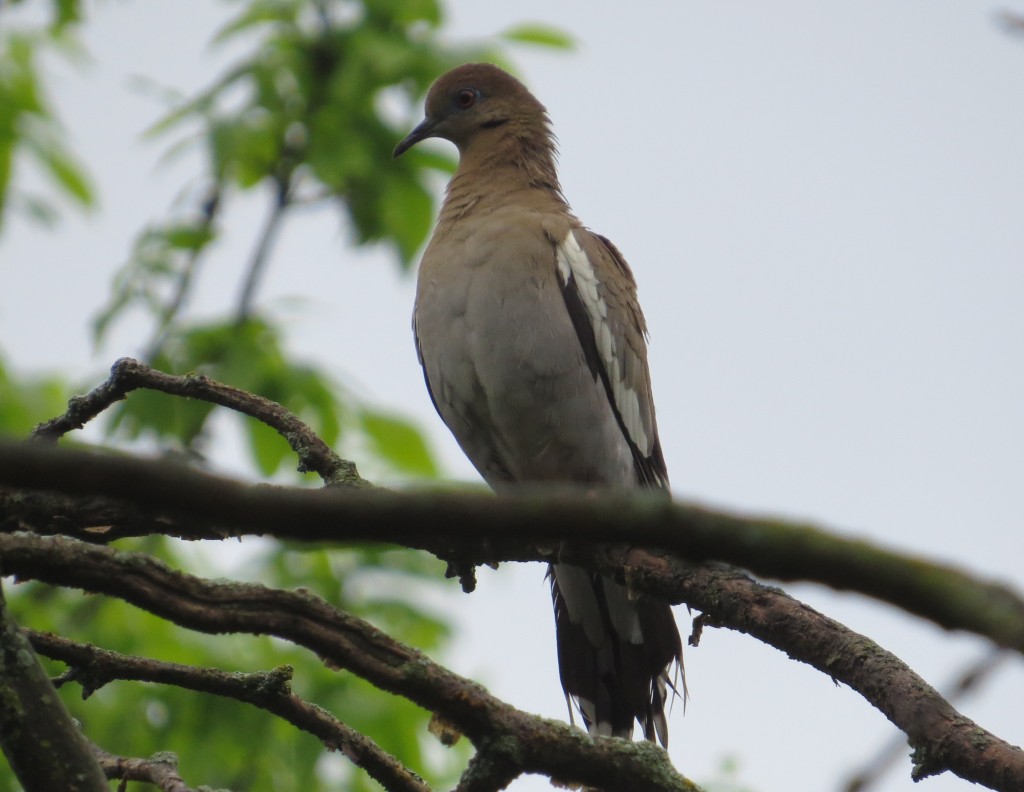 After our lightning-fast, dynamic sighting, we knocked on the door to thank Charlene, the birder and homeowner who made this amazing discovery. Charlene was the epitomy of Minnesota-nice, offering us coffee and donuts and showing us a plat book and telling us where to find other great birds in the area. It’s always a pleasure to meet a friendly birder in the field.
After our lightning-fast, dynamic sighting, we knocked on the door to thank Charlene, the birder and homeowner who made this amazing discovery. Charlene was the epitomy of Minnesota-nice, offering us coffee and donuts and showing us a plat book and telling us where to find other great birds in the area. It’s always a pleasure to meet a friendly birder in the field.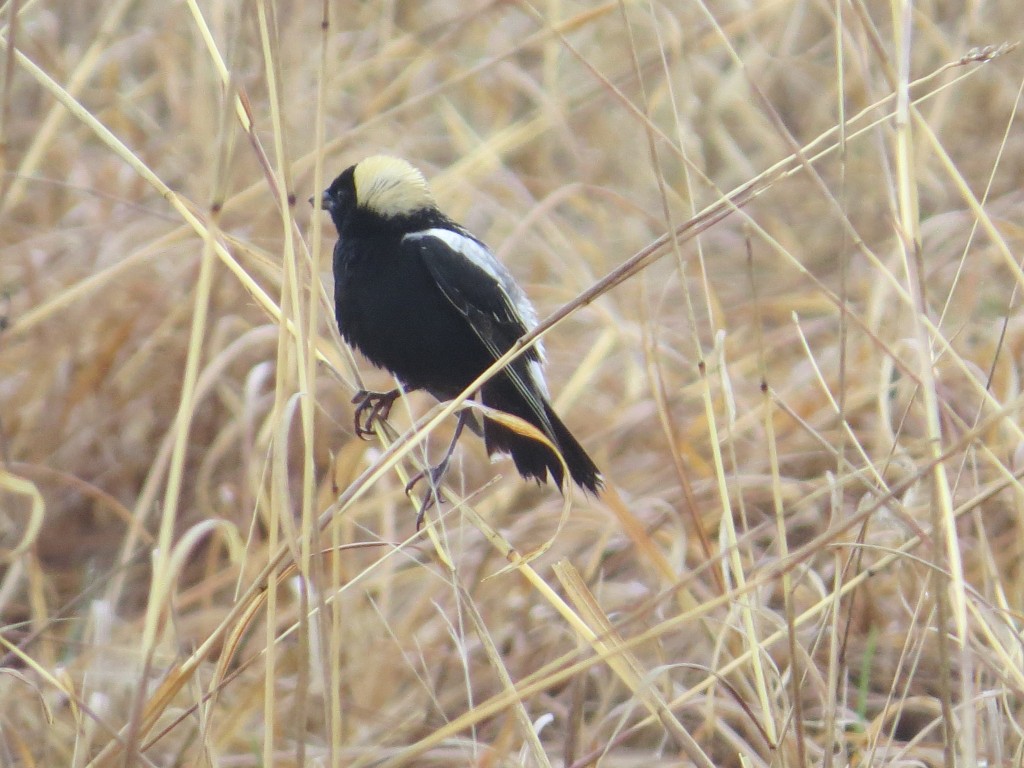
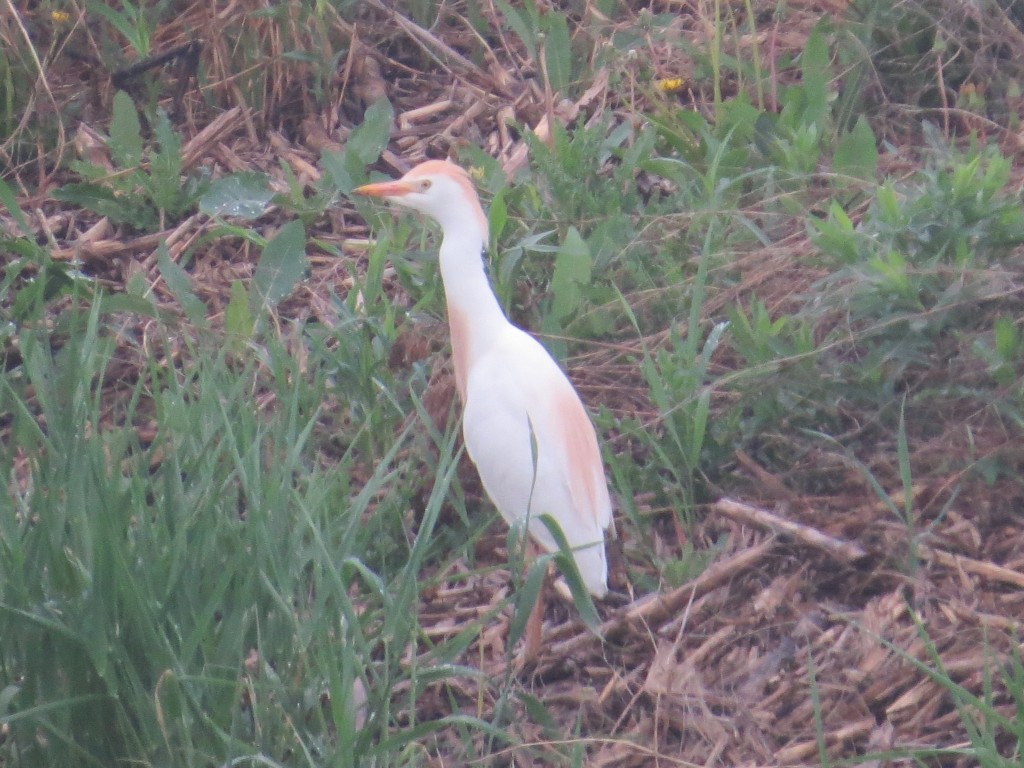
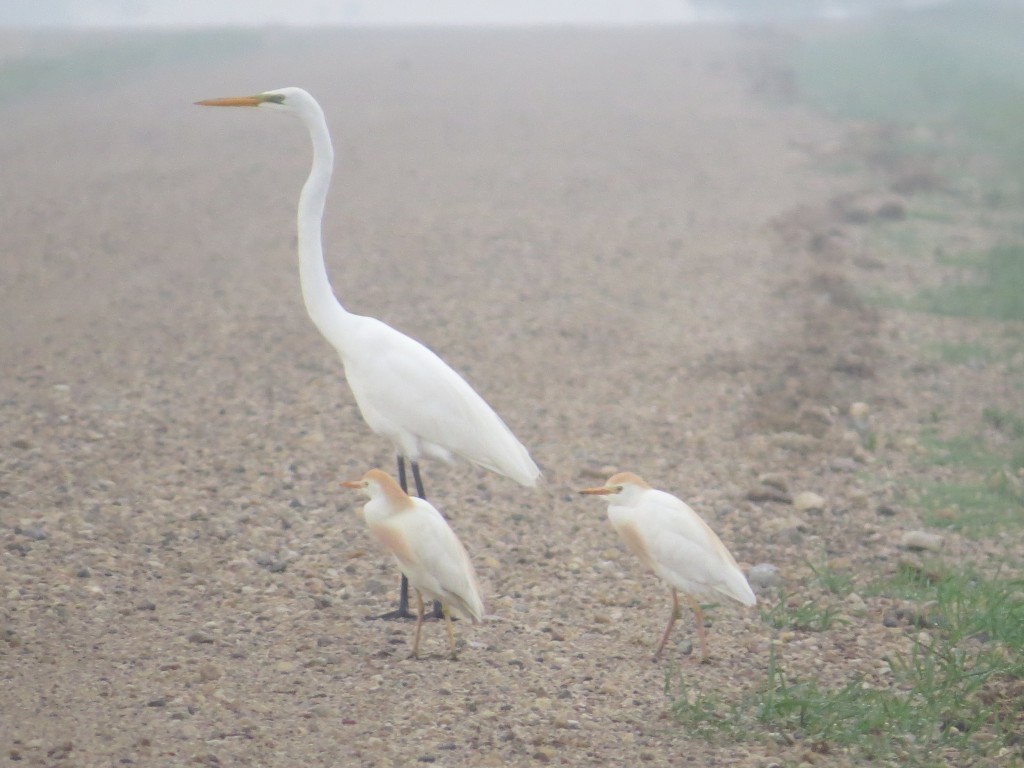
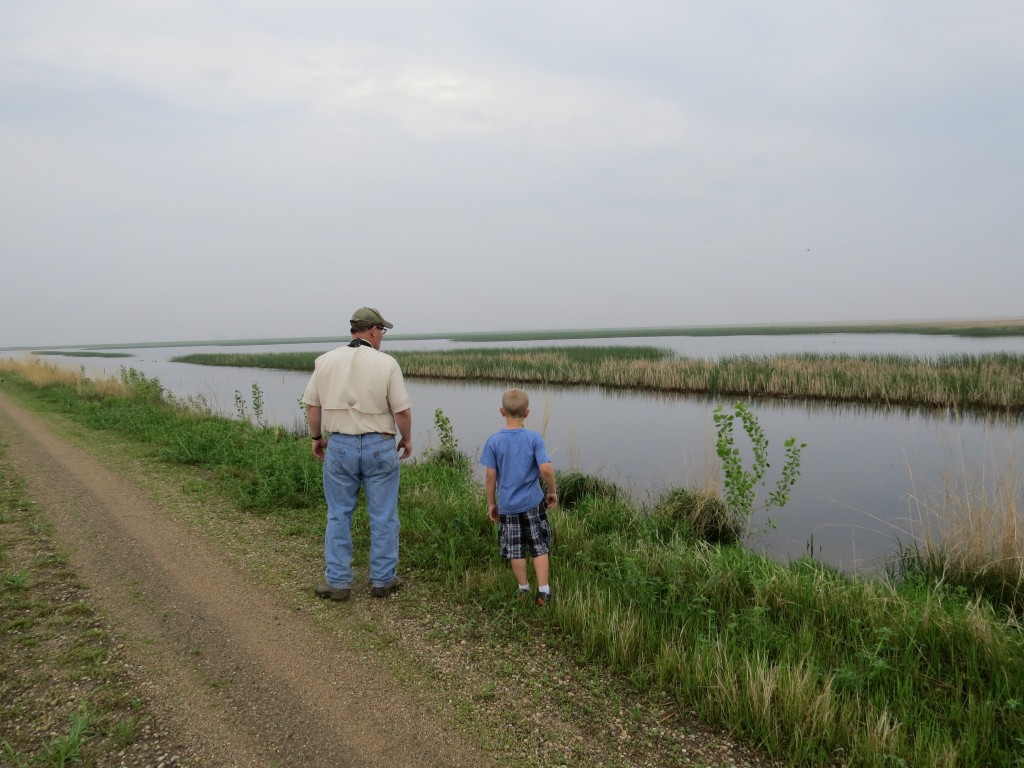
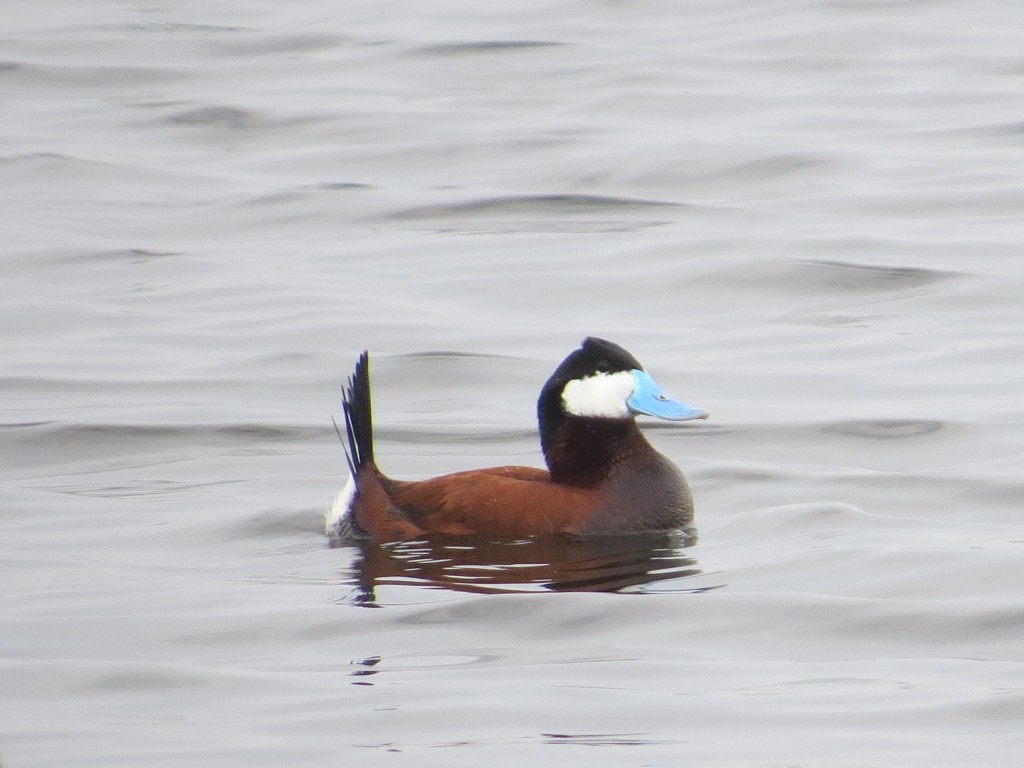
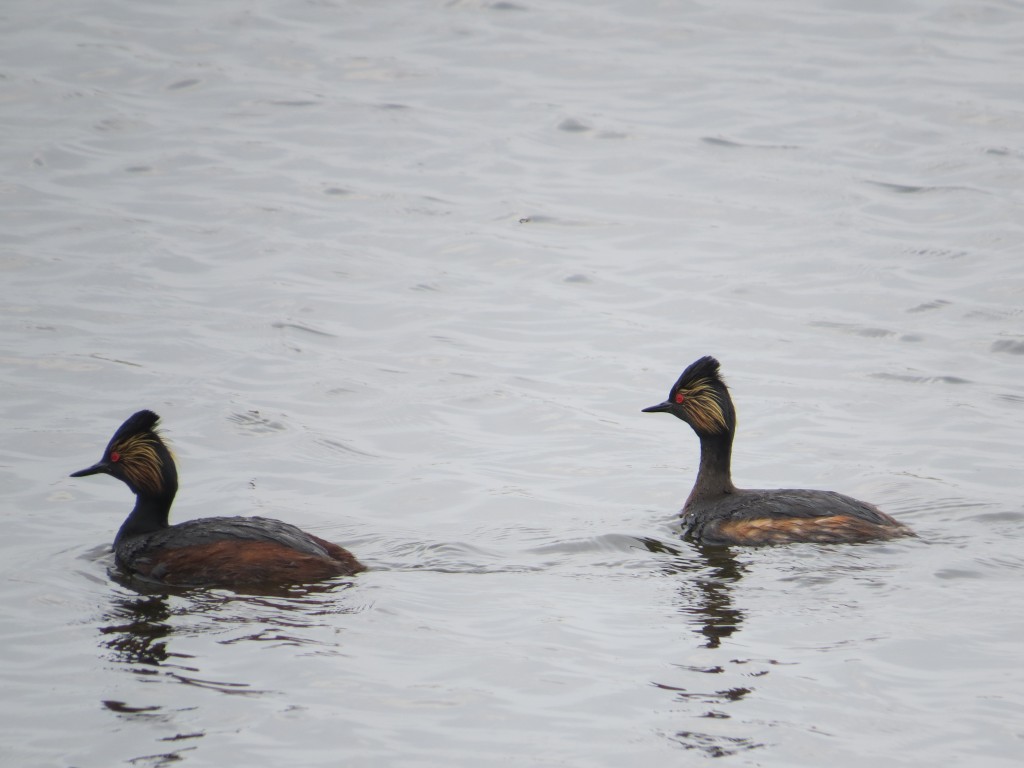
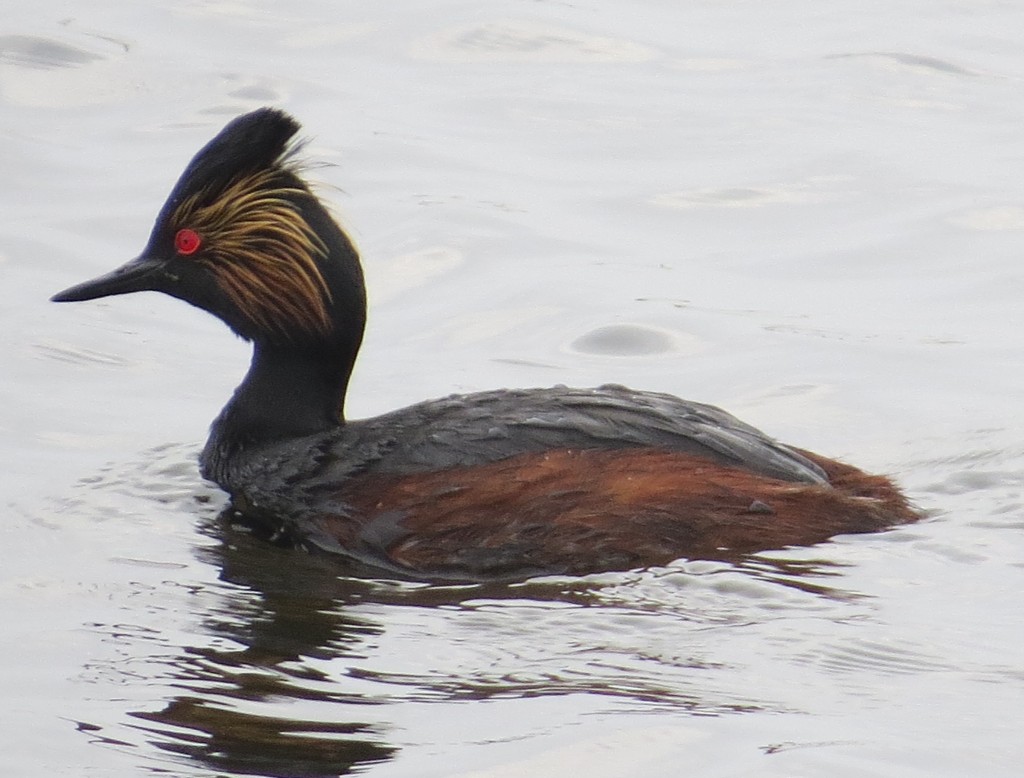
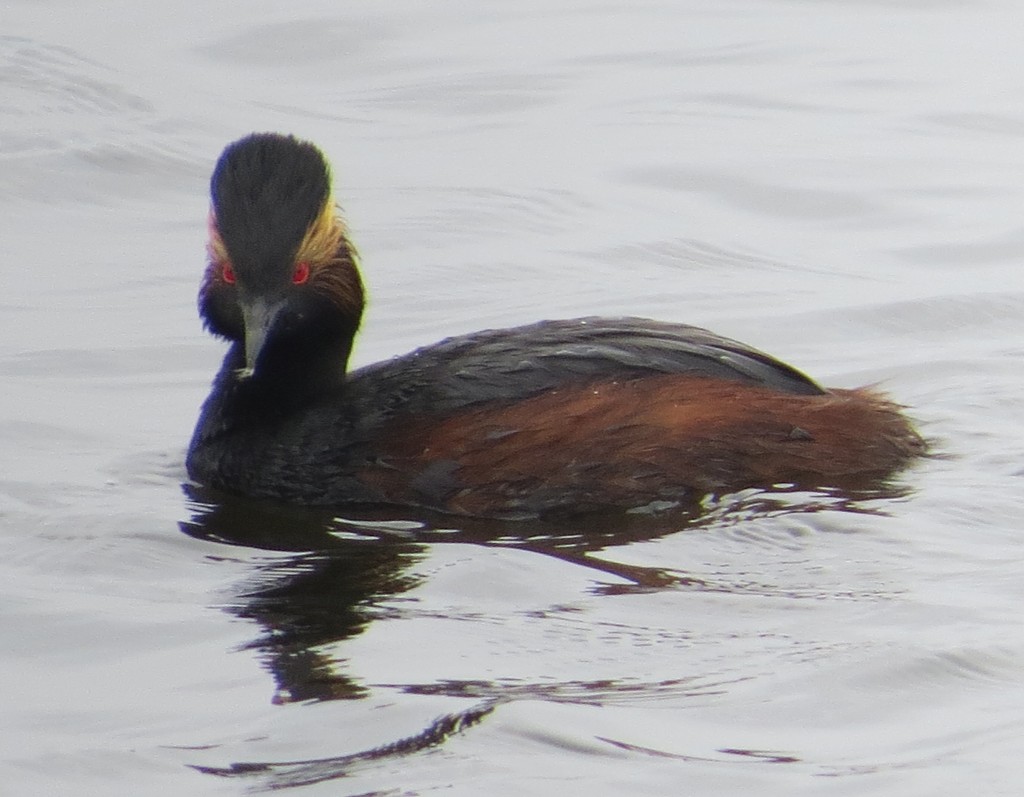 As much as we tried we could not turn up a Black-crowned Night Heron. I guess we can’t win it all, plus there was still more good birding ahead. Our next stop was the sewage ponds at the city of Herman where two Black-necked Stilts have decided to nest. Because of the work of some dedicated birders who brought this to the city’s attention, the city has agreed to not mow around this pond until the birds are done nesting. In fact, the townsfolk are pretty excited over the hub-bub at their local sewage ponds.
As much as we tried we could not turn up a Black-crowned Night Heron. I guess we can’t win it all, plus there was still more good birding ahead. Our next stop was the sewage ponds at the city of Herman where two Black-necked Stilts have decided to nest. Because of the work of some dedicated birders who brought this to the city’s attention, the city has agreed to not mow around this pond until the birds are done nesting. In fact, the townsfolk are pretty excited over the hub-bub at their local sewage ponds.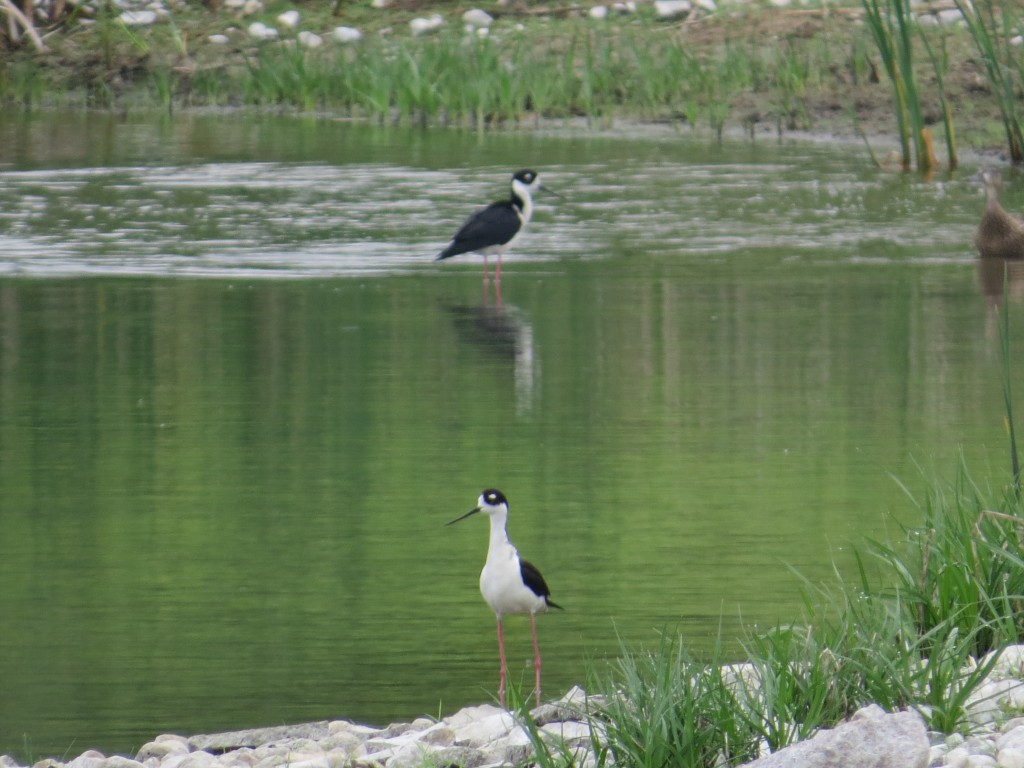
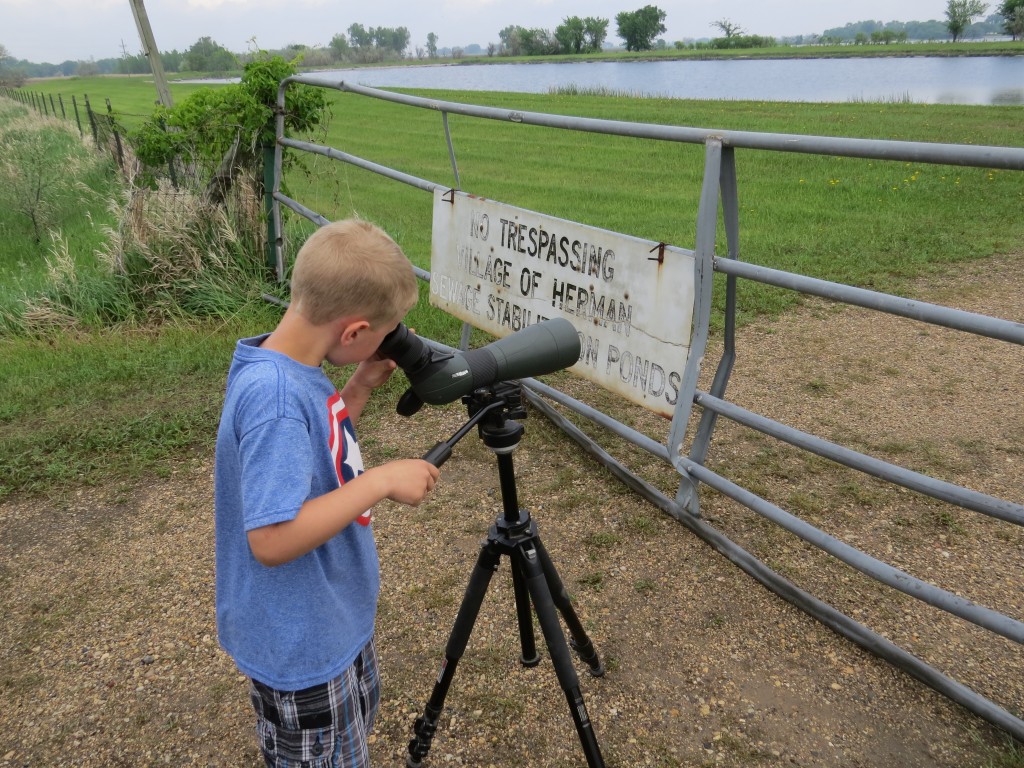 It was fun to see the female sit on the nest which has one confirmed egg.
It was fun to see the female sit on the nest which has one confirmed egg.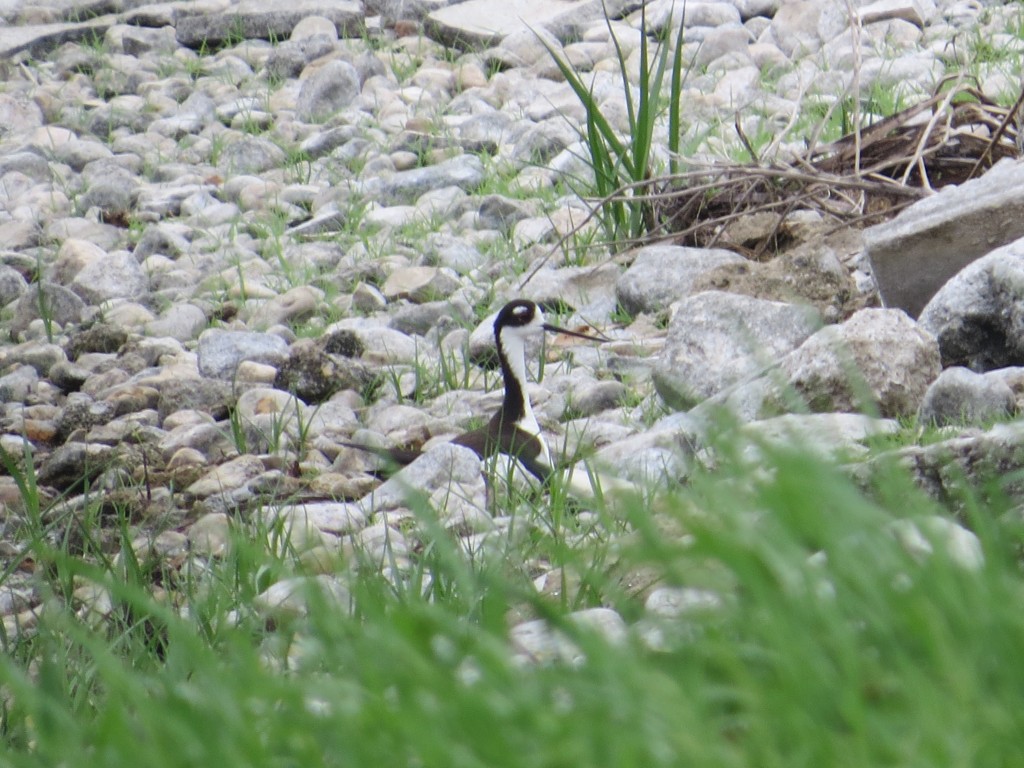
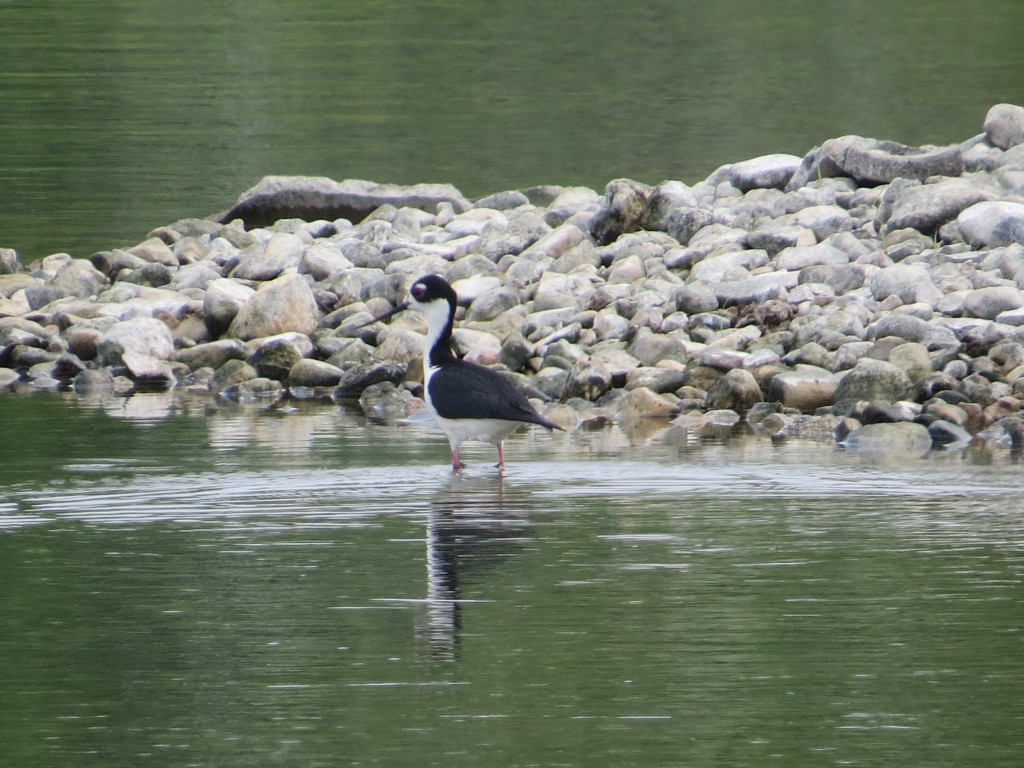
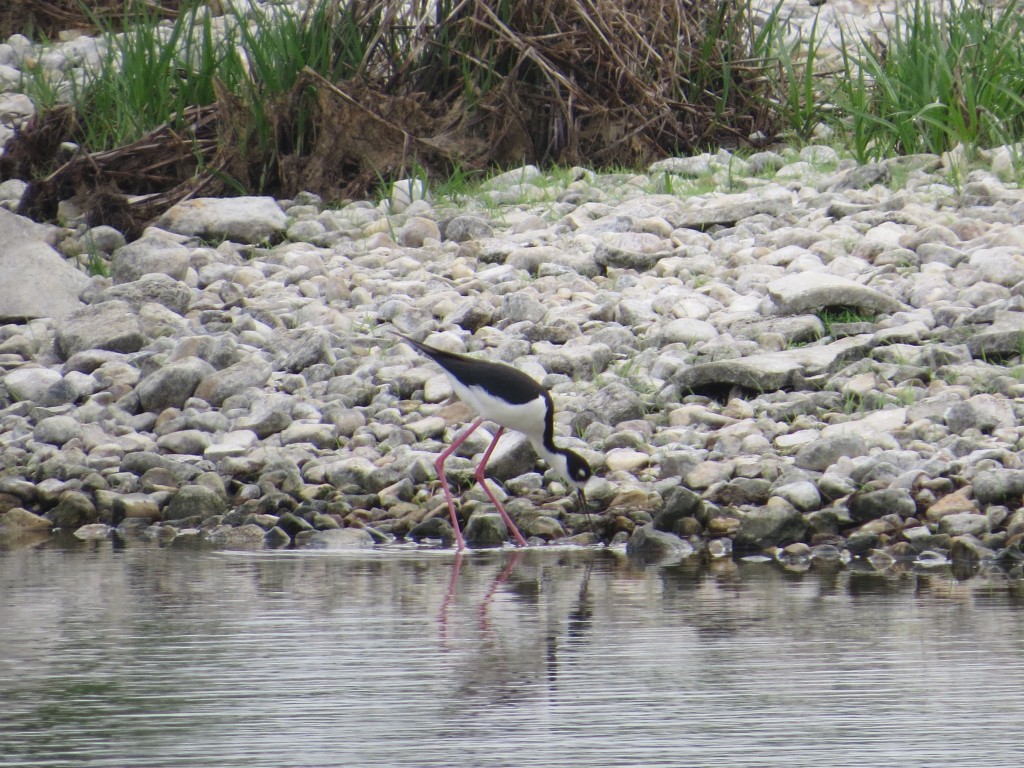
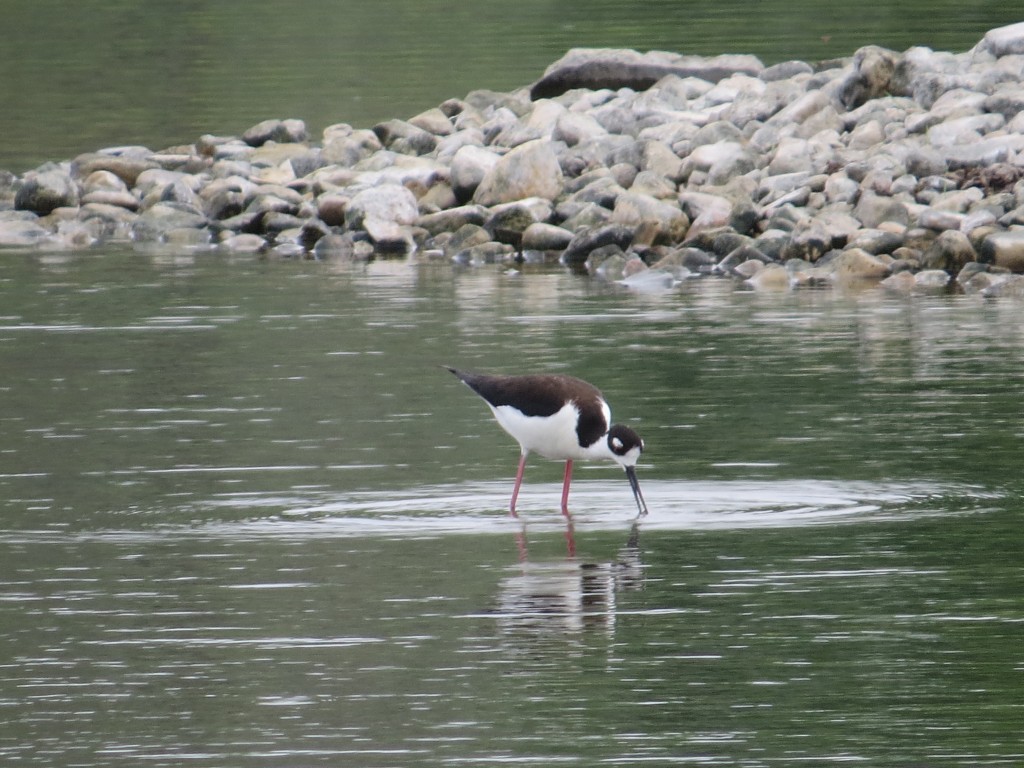
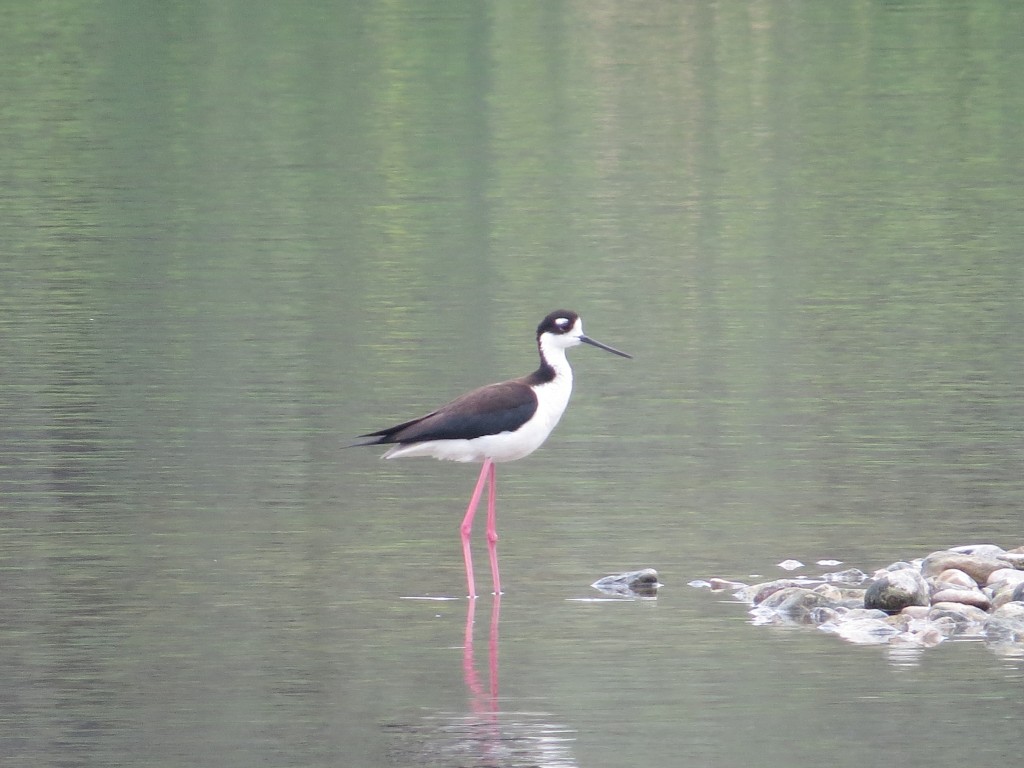
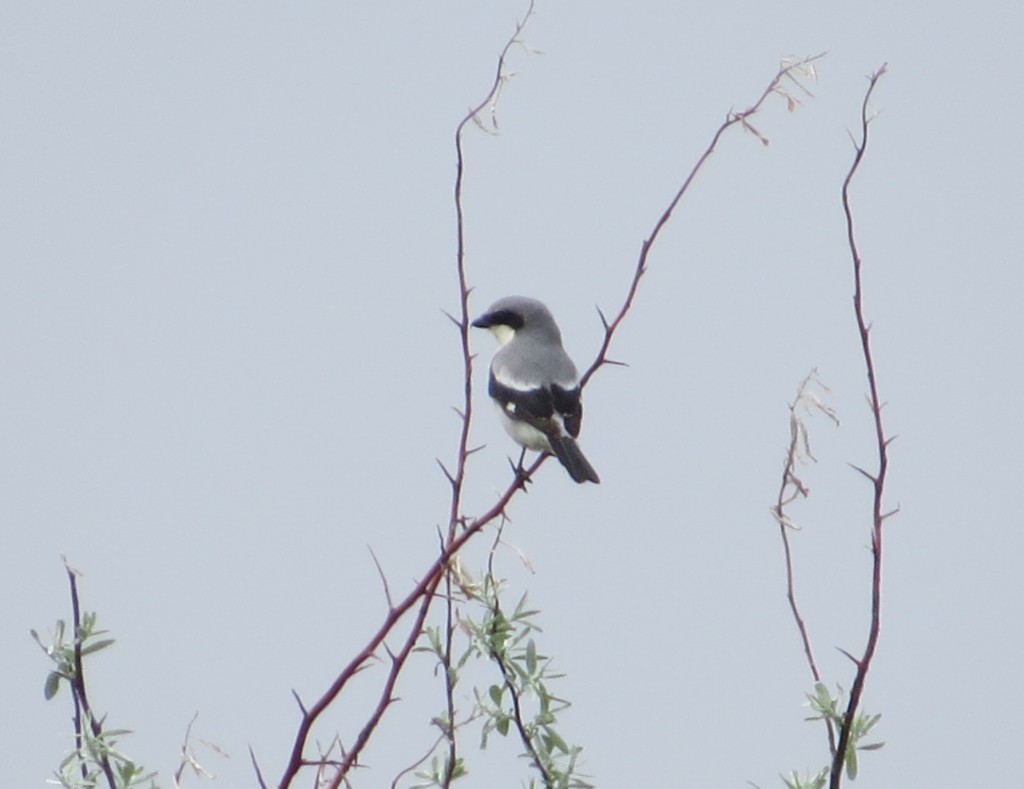
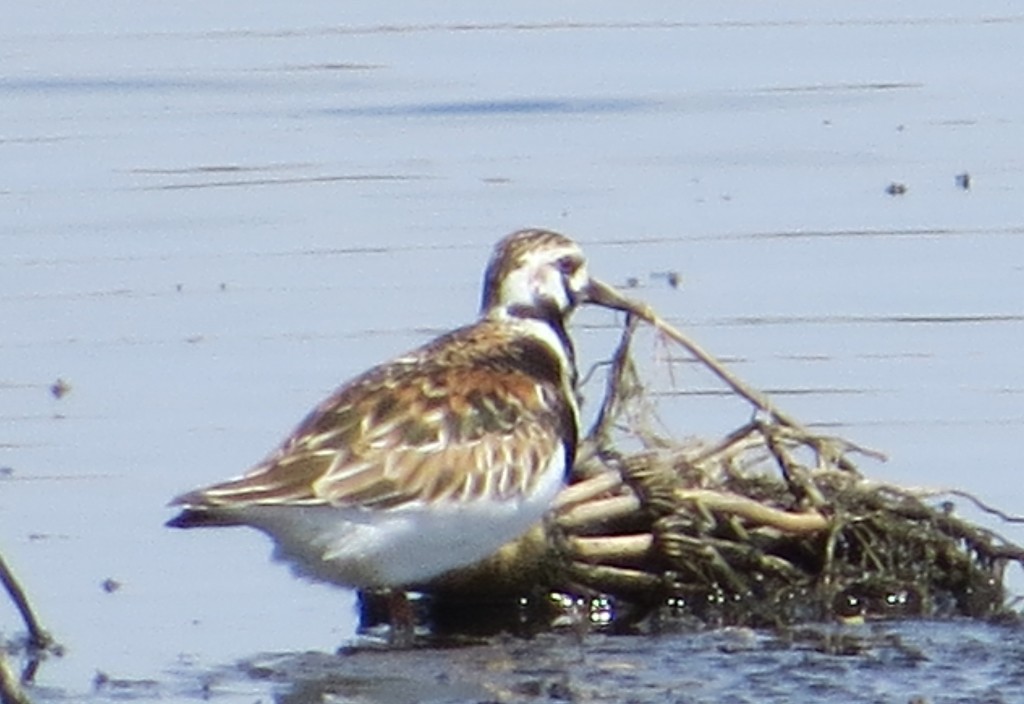
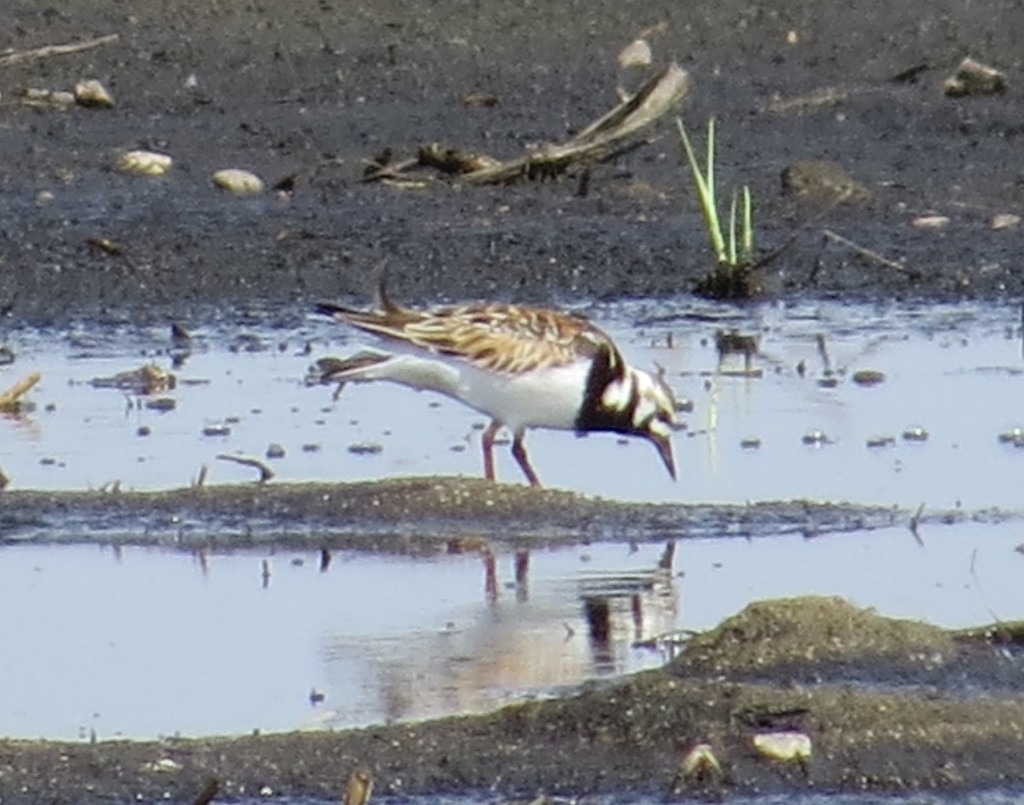
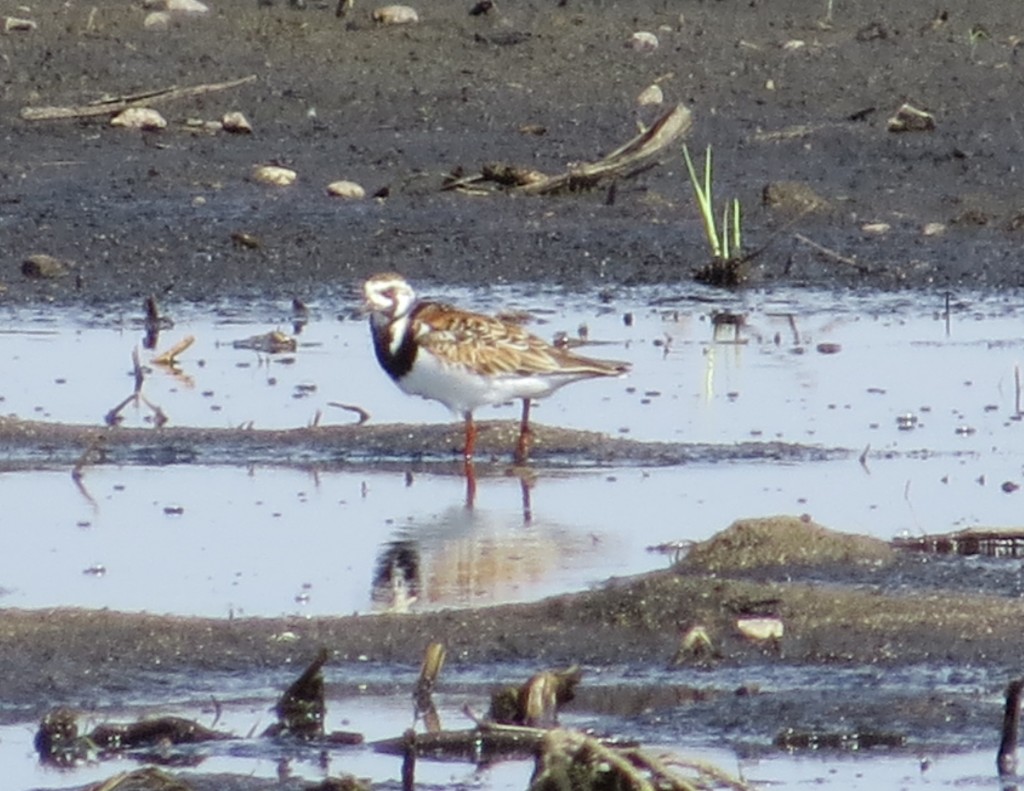
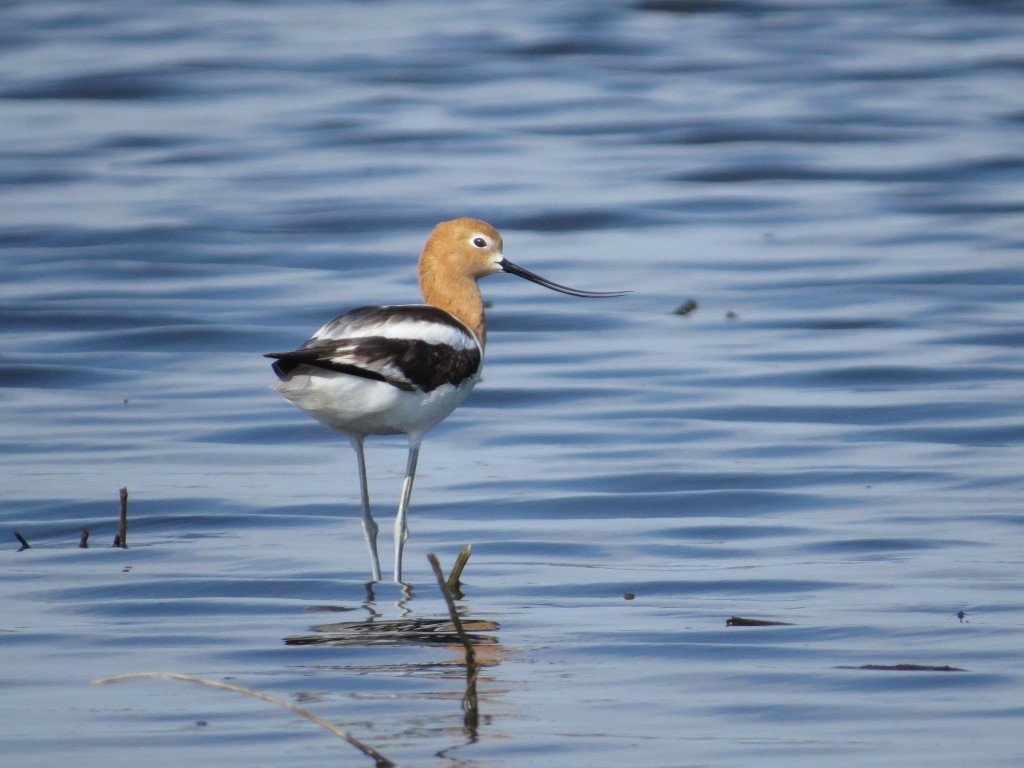
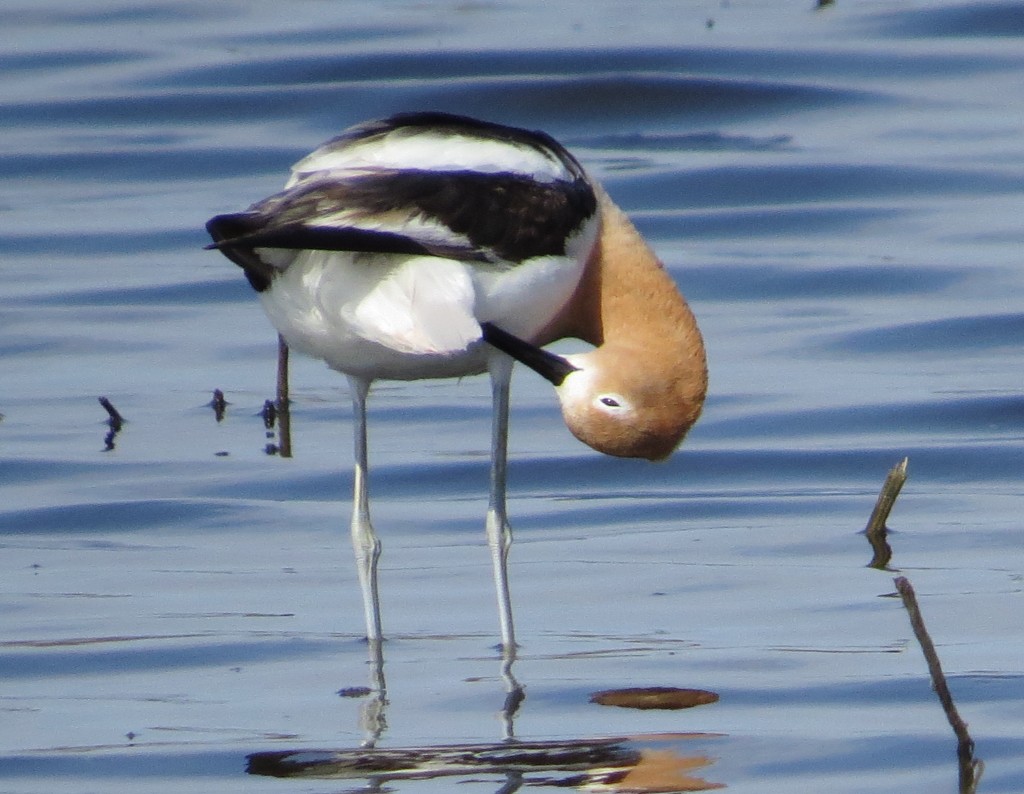
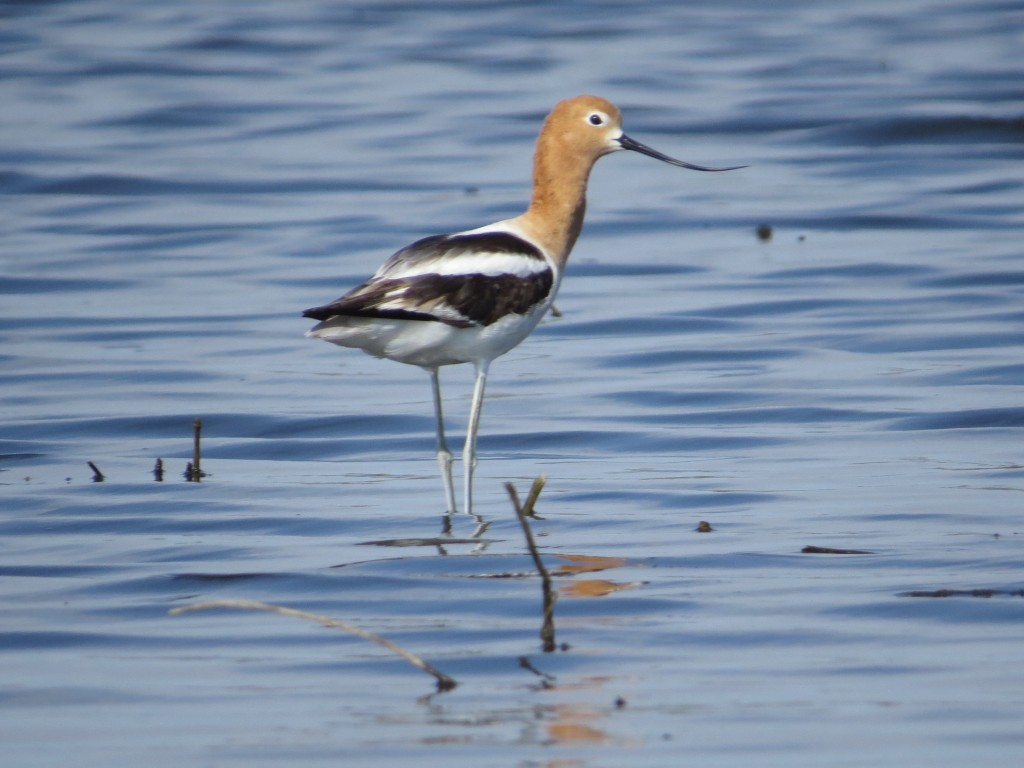
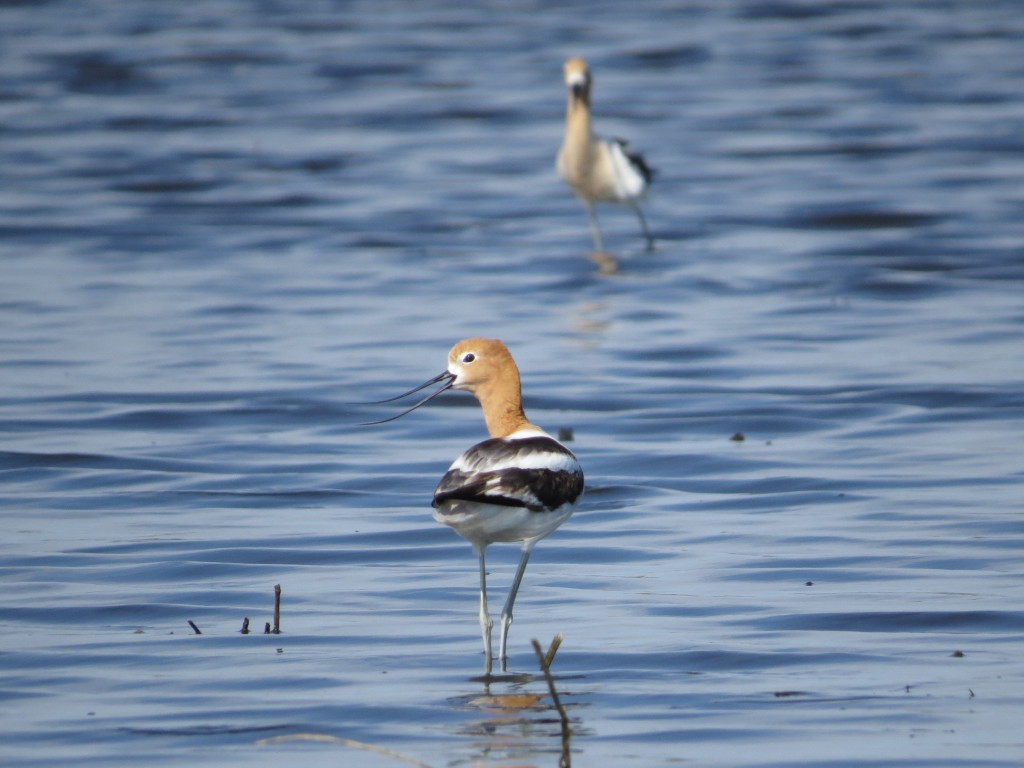 I continued to check out birds and photograph them while Evan played in the field.
I continued to check out birds and photograph them while Evan played in the field.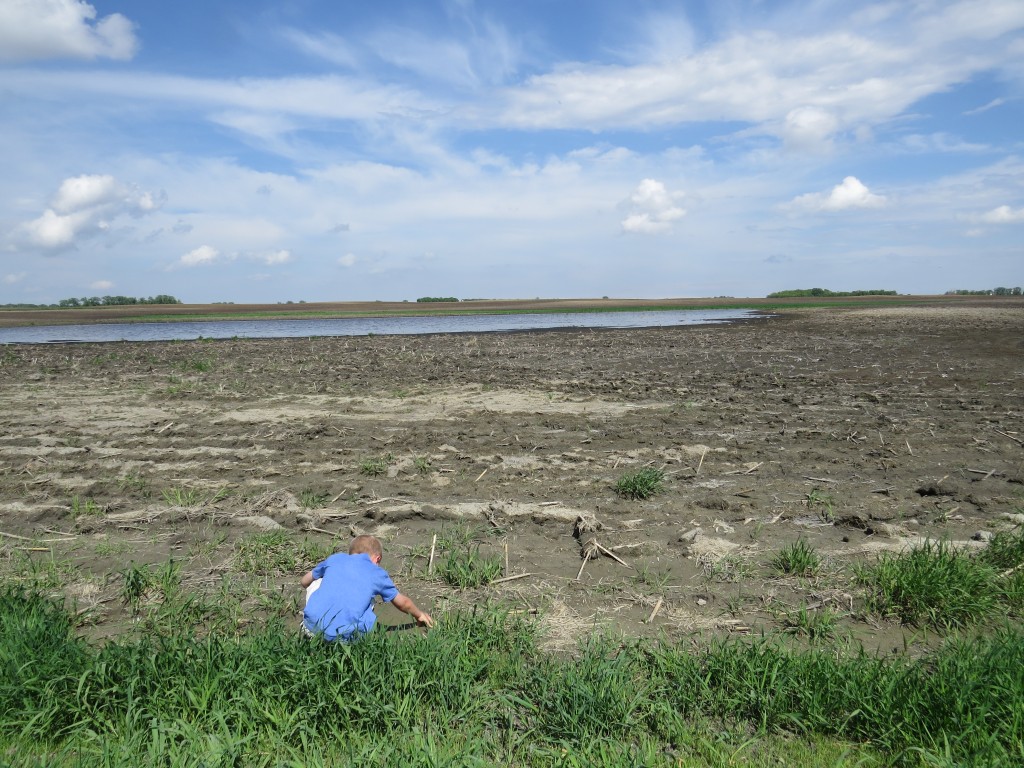 It’s a good thing that Randy showed up to break up the monotony by joking around with Evan and letting him look through his scope at all the cool shorebirds.
It’s a good thing that Randy showed up to break up the monotony by joking around with Evan and letting him look through his scope at all the cool shorebirds.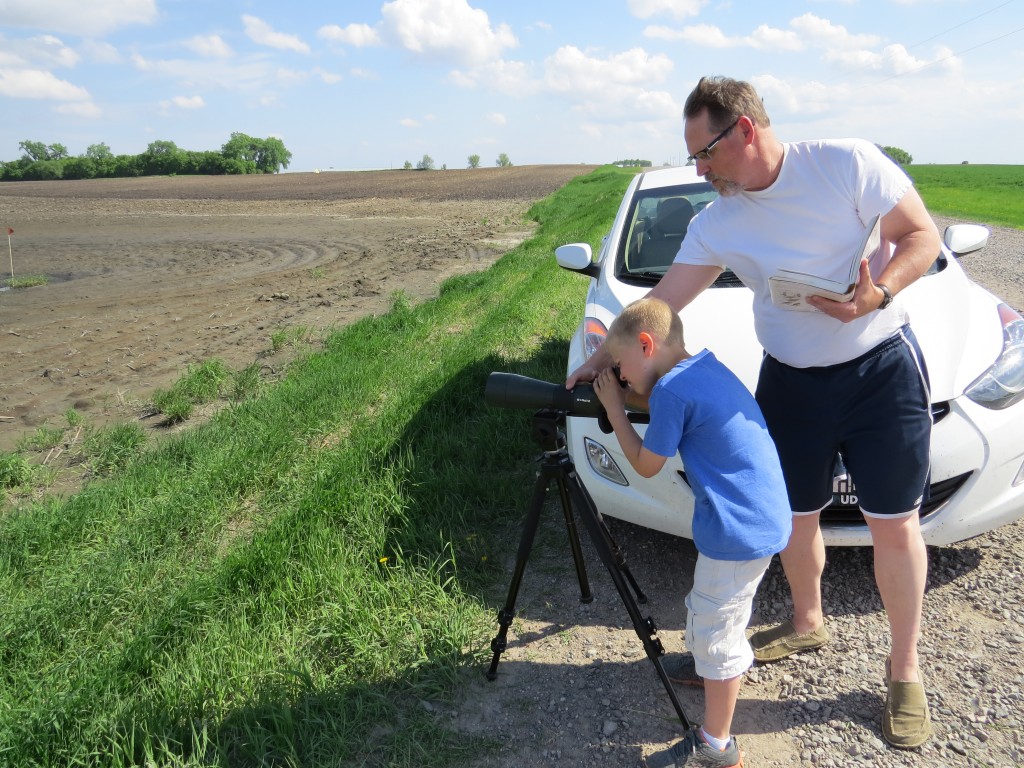 I was glad to have Randy there too. We had seen Dunlin and Wilson’s Phalaropes in addition to the Ruddy Turnstone and American Avocets, but we didn’t even try to sort through the peeps. Randy’s been to battle with shorebirds for many years, so he was undaunted by the challenge. Within seconds he was calling out Least Sandpipers, Baird’s Sandpipers, and White-rumped Sandpipers. White-rumped was one we needed, so I told him to find us one. He would oblige and let us look through the scope to get our looks at this lifer. Then I’d try to relocate the one he’d found in order to photograph it. The way these things move around and how many different species there were, I think it would have been easier to win the shell game against a hustler. I gave up on photographing this bird that varies only slightly from a Baird’s Sandpiper. I decided to cheat instead by photographing a whole flock of peeps and looking at my pictures later. See the ones with the clear white rumps? Those are White-rumpeds.
I was glad to have Randy there too. We had seen Dunlin and Wilson’s Phalaropes in addition to the Ruddy Turnstone and American Avocets, but we didn’t even try to sort through the peeps. Randy’s been to battle with shorebirds for many years, so he was undaunted by the challenge. Within seconds he was calling out Least Sandpipers, Baird’s Sandpipers, and White-rumped Sandpipers. White-rumped was one we needed, so I told him to find us one. He would oblige and let us look through the scope to get our looks at this lifer. Then I’d try to relocate the one he’d found in order to photograph it. The way these things move around and how many different species there were, I think it would have been easier to win the shell game against a hustler. I gave up on photographing this bird that varies only slightly from a Baird’s Sandpiper. I decided to cheat instead by photographing a whole flock of peeps and looking at my pictures later. See the ones with the clear white rumps? Those are White-rumpeds.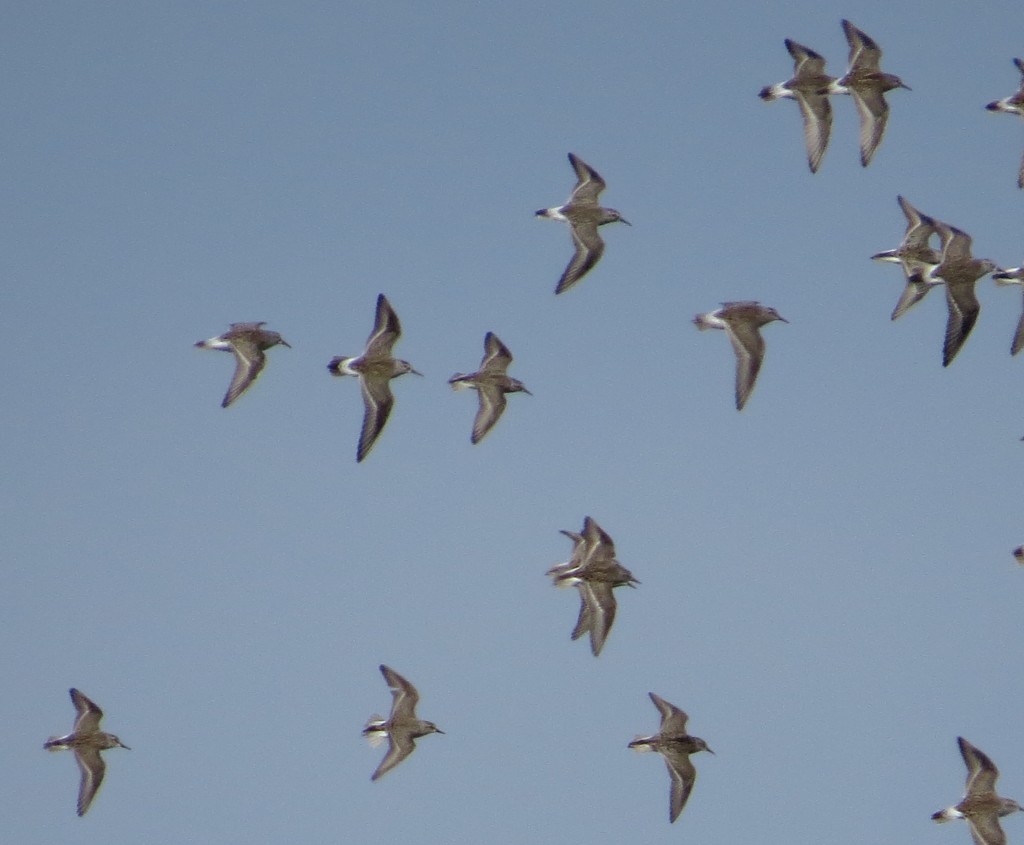
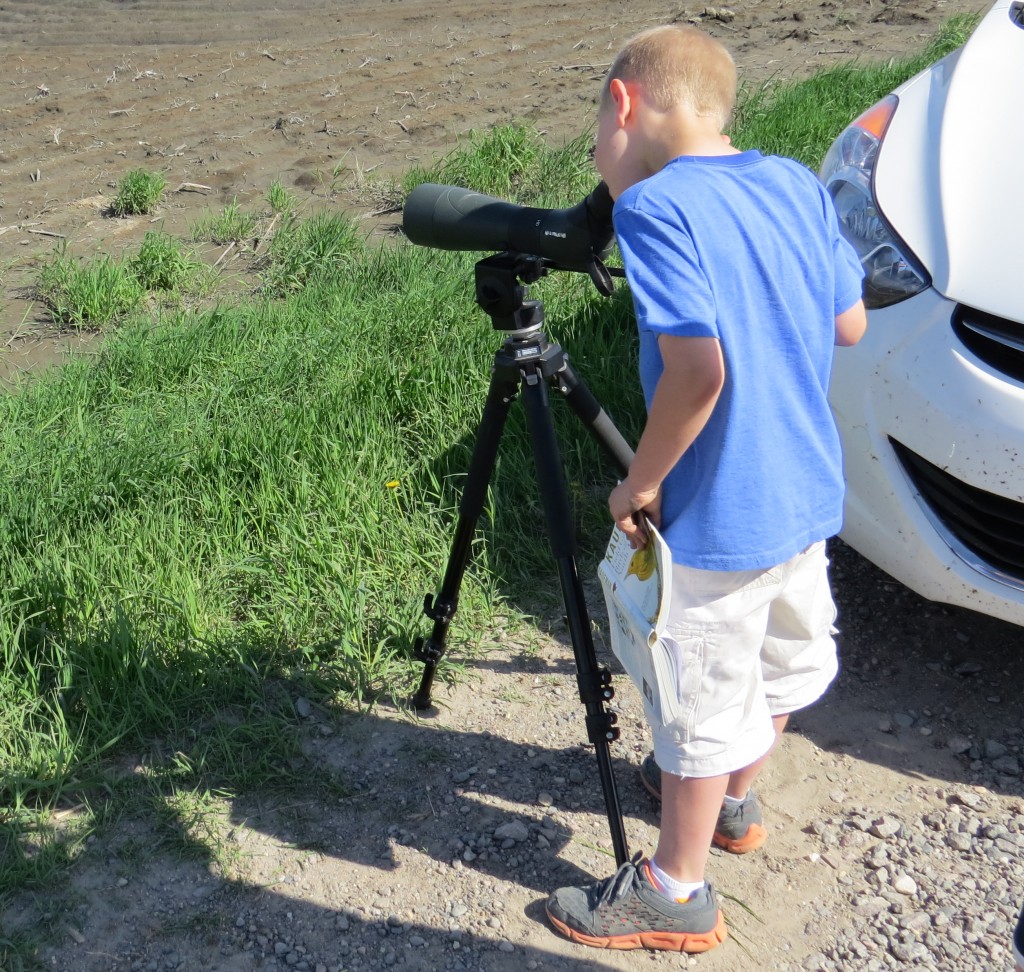 Two days and five life birds for Evan and four for me with some great sightings of some other really good shorebirds as well. This was quite unexpected. Migration has been screwy this year. Normally we wouldn’t be chasing shorebirds after warblers. Now, though, it’s open season on these guys again. And I’m learning that shorebirds are still arriving in states to the south of us. Tomorrow is my first full day of summer vacation, so Marin and I will be hitting the few local shorebird spots to keep up on the action. There will be no rest for the weary.
Two days and five life birds for Evan and four for me with some great sightings of some other really good shorebirds as well. This was quite unexpected. Migration has been screwy this year. Normally we wouldn’t be chasing shorebirds after warblers. Now, though, it’s open season on these guys again. And I’m learning that shorebirds are still arriving in states to the south of us. Tomorrow is my first full day of summer vacation, so Marin and I will be hitting the few local shorebird spots to keep up on the action. There will be no rest for the weary.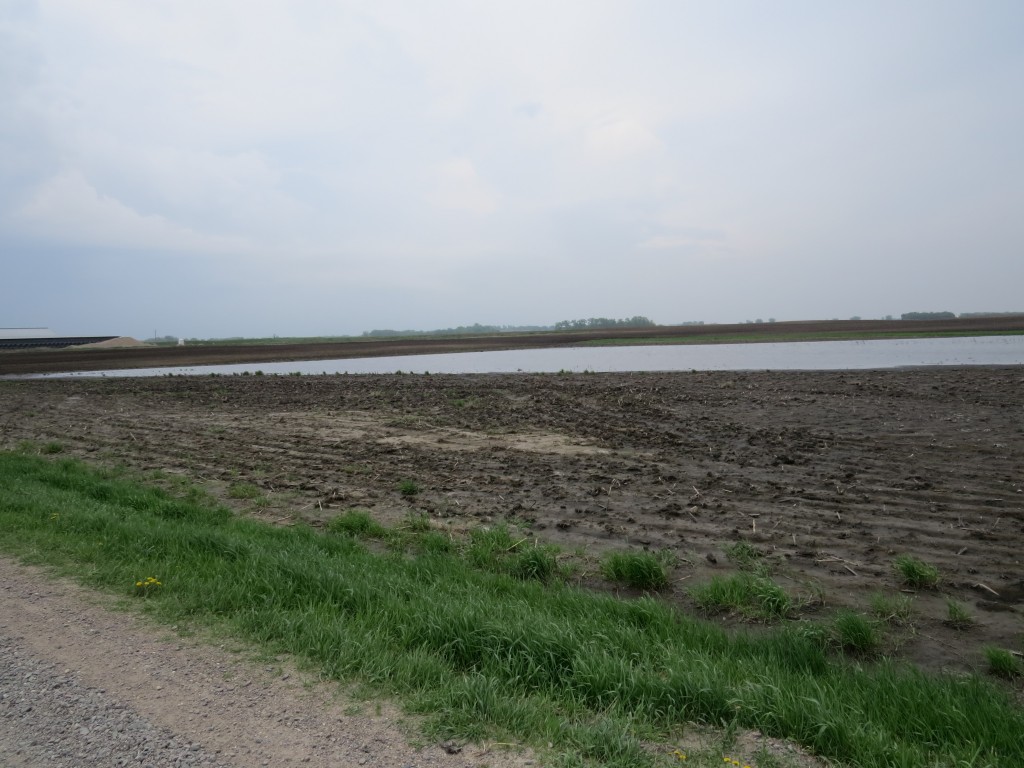 All I could see were the peeps who are no bigger than sparrows. There were tons of them. It took my awhile but I finally located a phalarope. I certainly didn’t see 10. I zoomed in on it and showed it to Evan on the LCD. He was excited to get his Wilson’s Phalarope but then wanted to go right away. Birding doesn’t really compare to fishing to a 7-year-old. So I snapped a picture of this phalarope, just assuming it was a Wilson’s, the most likely species. Then I looked a little closer at the LCD and realized it was a male Red-necked Phalarope in breeding plumage! This was not a life bird as we saw a very drab version last August at the Atwater sewage ponds.
All I could see were the peeps who are no bigger than sparrows. There were tons of them. It took my awhile but I finally located a phalarope. I certainly didn’t see 10. I zoomed in on it and showed it to Evan on the LCD. He was excited to get his Wilson’s Phalarope but then wanted to go right away. Birding doesn’t really compare to fishing to a 7-year-old. So I snapped a picture of this phalarope, just assuming it was a Wilson’s, the most likely species. Then I looked a little closer at the LCD and realized it was a male Red-necked Phalarope in breeding plumage! This was not a life bird as we saw a very drab version last August at the Atwater sewage ponds.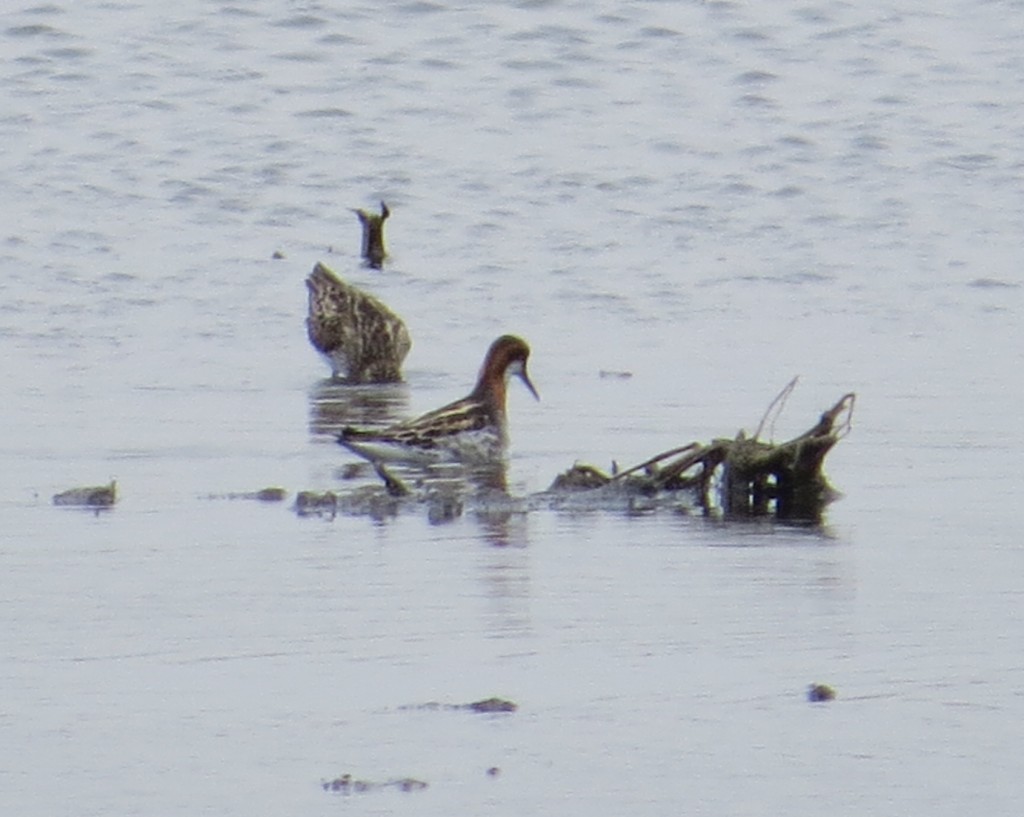
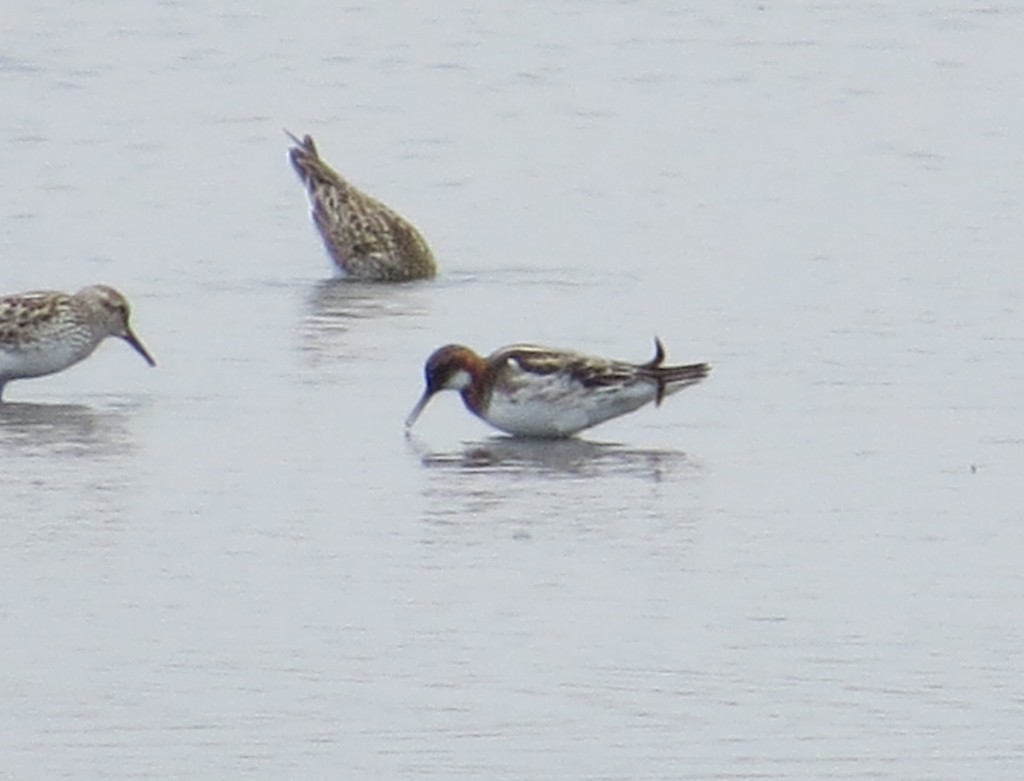 Now we had to stay for a bit because we hadn’t even gotten one of the two potential lifers there. I walked on the road to the view the north end of this pond, and I finally found the cache of phalaropes. These were definitely Wilson’s, so Evan got his life bird after all.
Now we had to stay for a bit because we hadn’t even gotten one of the two potential lifers there. I walked on the road to the view the north end of this pond, and I finally found the cache of phalaropes. These were definitely Wilson’s, so Evan got his life bird after all.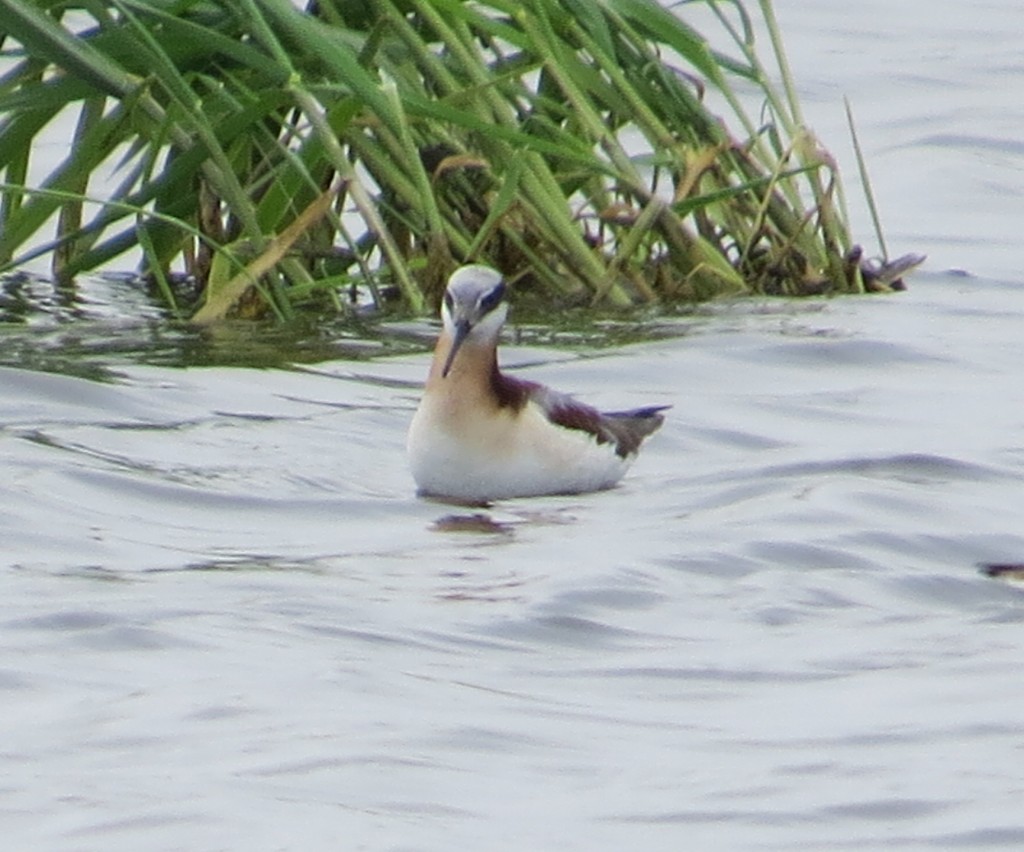
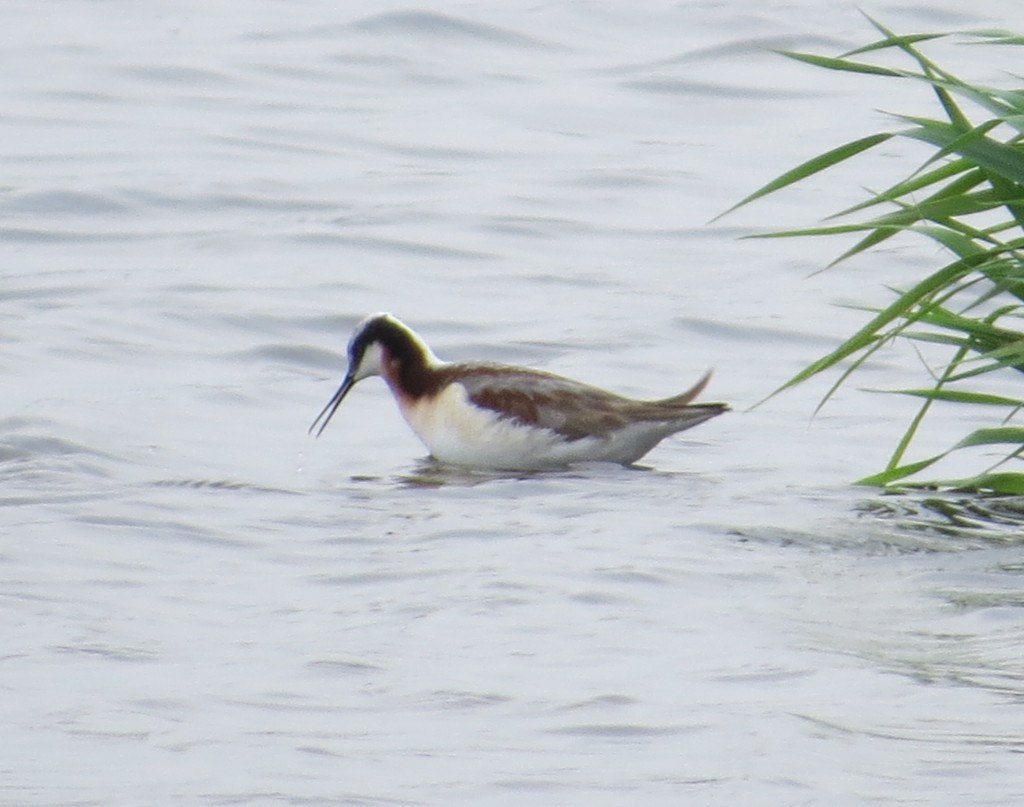 Then I spied some chunkier looking shorebirds that were bigger than the peeps but stockier than the phalaropes. The cloudy skies, distance, and strong wind buffetting my camera lens made it difficult to tell what they were. Were these our Stilt Sandpipers or a dowitcher of some sort? After looking back at my photos I could clearly see they were our Stilt lifers. It was interesting to read in the field guide, though, that they are compared to dowitchers in their behavior.
Then I spied some chunkier looking shorebirds that were bigger than the peeps but stockier than the phalaropes. The cloudy skies, distance, and strong wind buffetting my camera lens made it difficult to tell what they were. Were these our Stilt Sandpipers or a dowitcher of some sort? After looking back at my photos I could clearly see they were our Stilt lifers. It was interesting to read in the field guide, though, that they are compared to dowitchers in their behavior.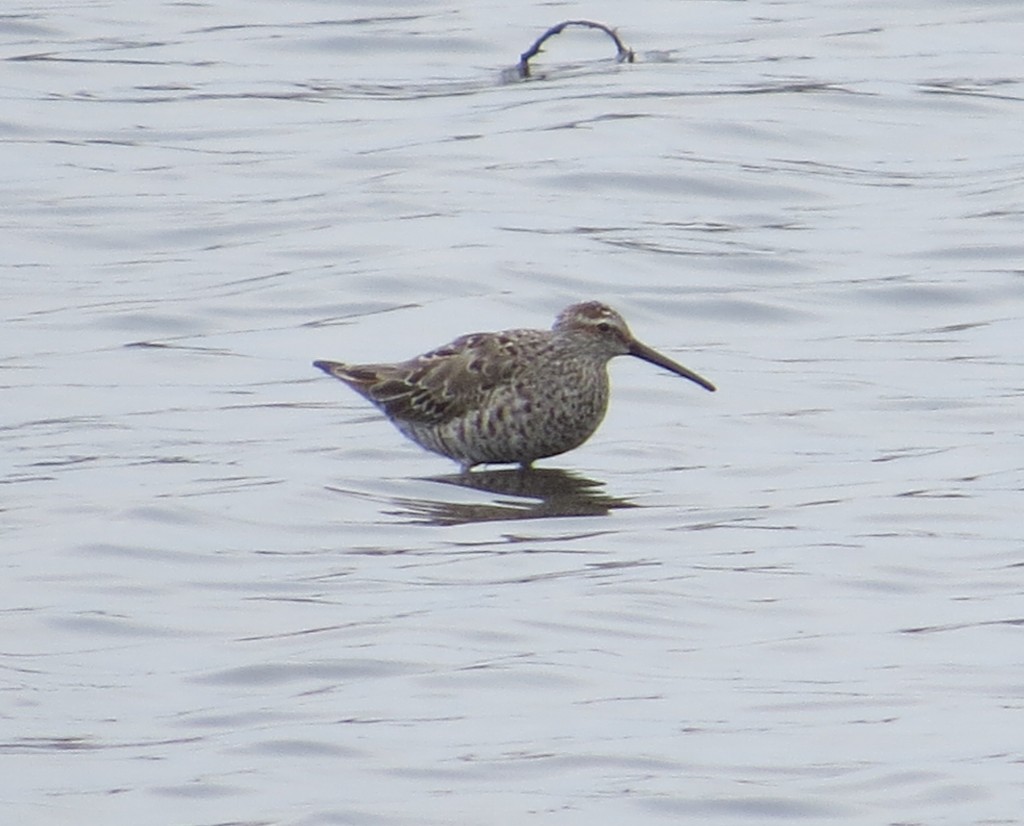
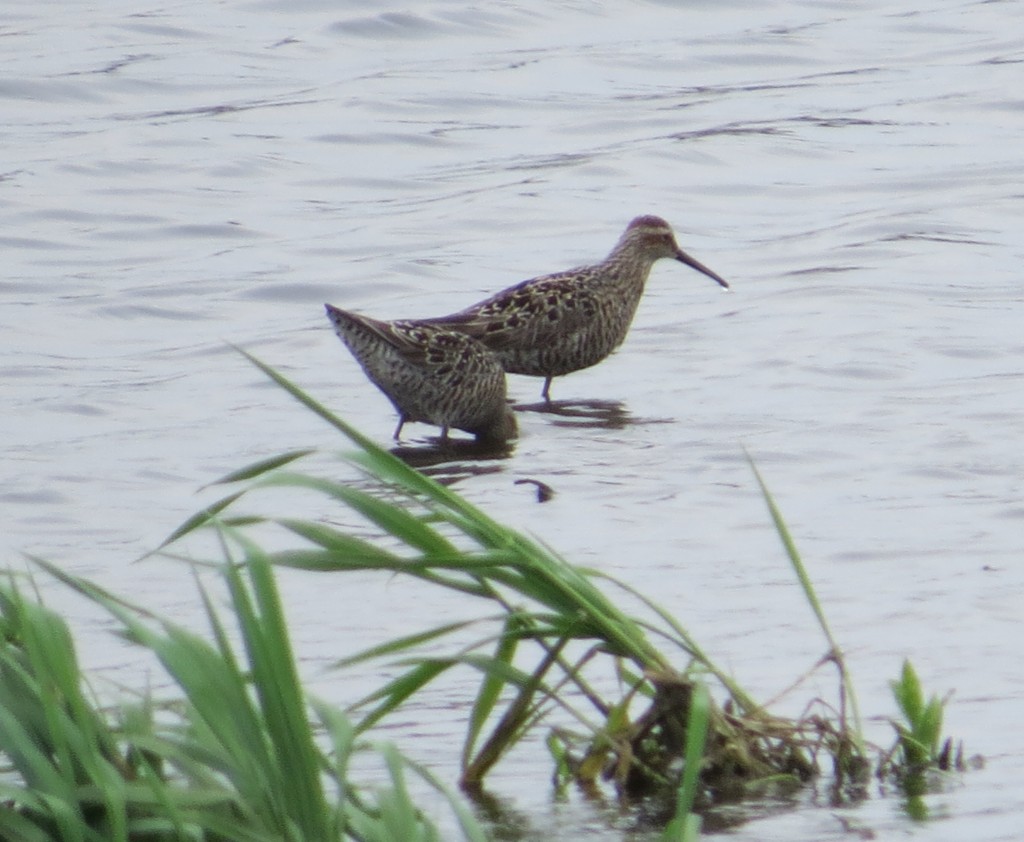
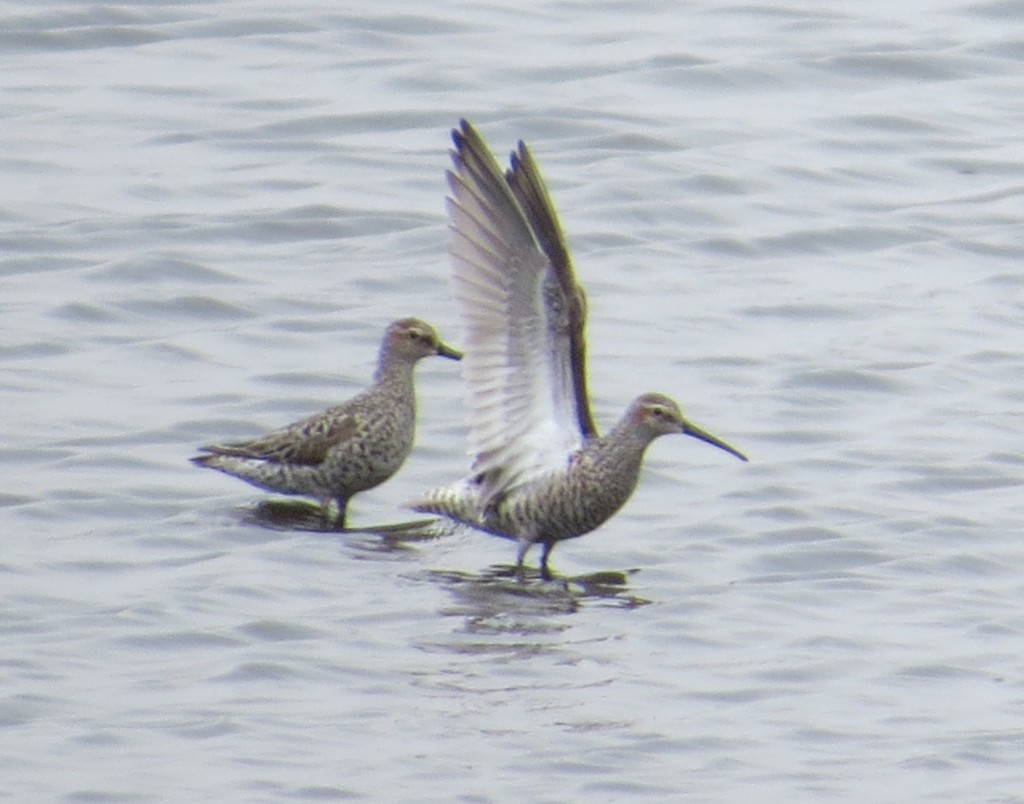
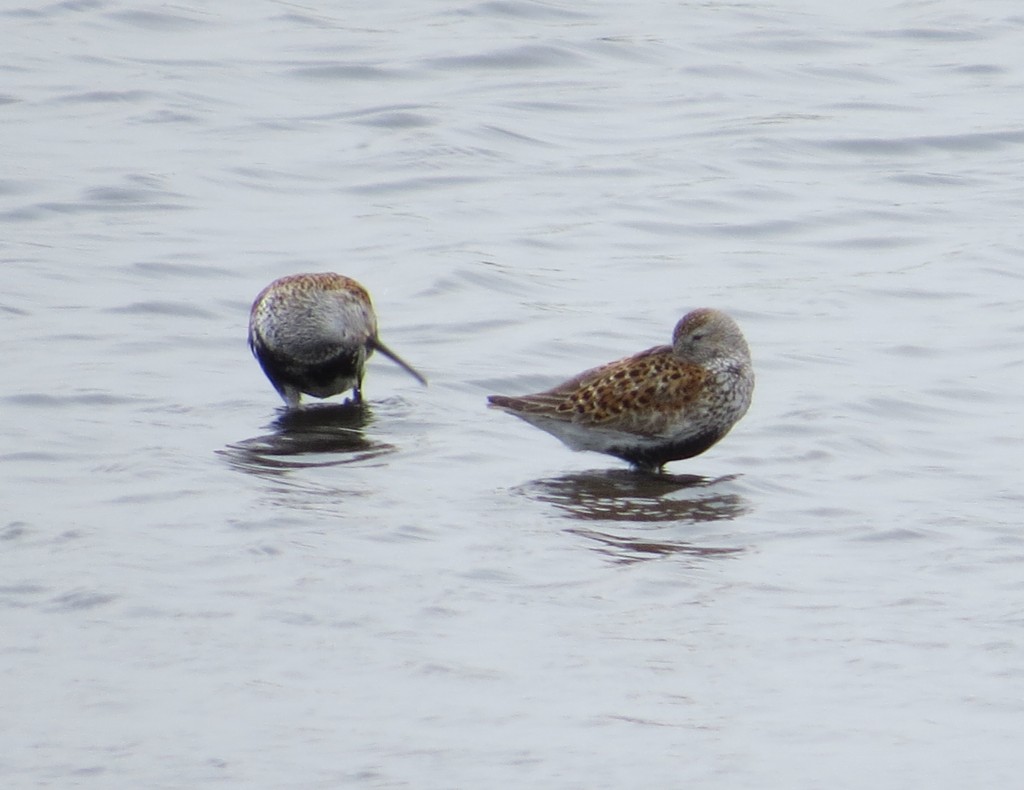
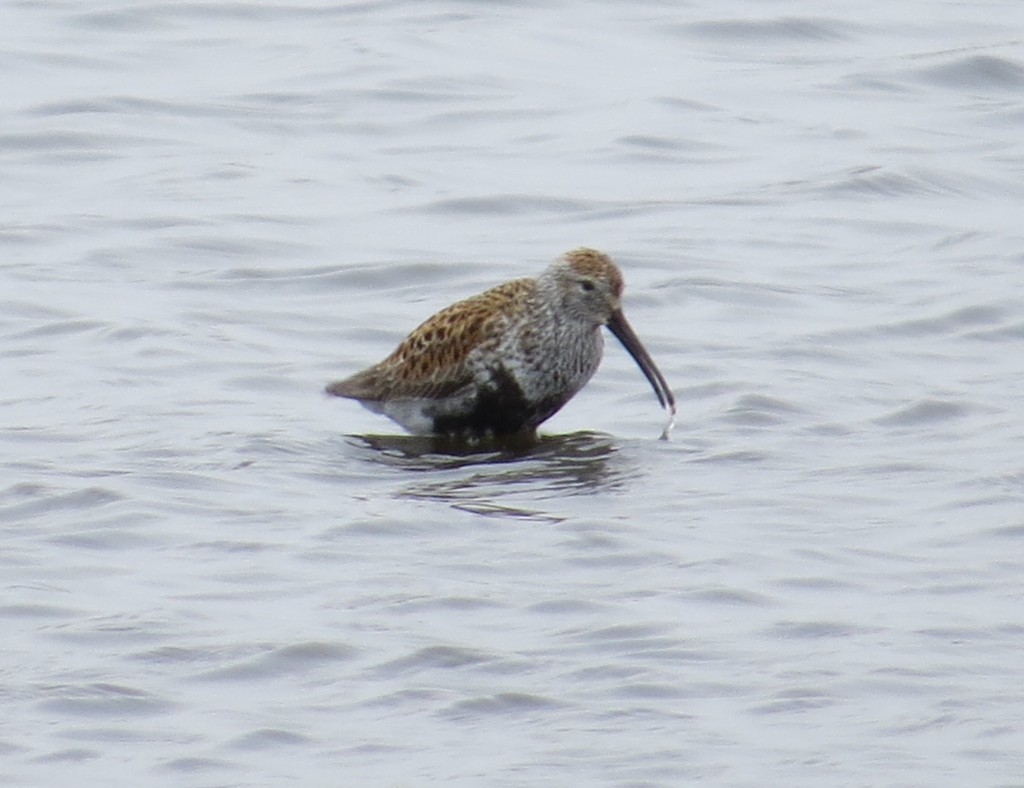 Three life birds for Evan, two for me, and a breeding plumage Red-necked Phalarope. I guess we better stay alert for a few more late migrants. As for the fishing report, Evan caught four Bluegill and quenched, albeit briefly, his thirst for fishing.
Three life birds for Evan, two for me, and a breeding plumage Red-necked Phalarope. I guess we better stay alert for a few more late migrants. As for the fishing report, Evan caught four Bluegill and quenched, albeit briefly, his thirst for fishing.